HOME AT





































We’ll make it easy for you

We know choosing an agency to let your property can be a big decision. We’re here to make sure the whole process is as simple as possible from day one. At Devon Hideaways, we delight in providing the very best service to both guests and owners. From promoting your property to managing bookings and maintenance, we aim to make letting your holiday home stress free.
So, if you’re ready to start sharing your holiday property and earning some extra income, why not get in touch for a chat or ask for a free copy of our Property Letting Guide?
Competitive commission rate | Excellent occupancy levels
A Marketing or Marketing and Managed service | Professional photography Peace-of-mind damage cover | No restrictions on the use of your property
Devon in summer is a dream. While this year’s warmer weather appears to have suffered something of a slow start, we have seen the most subtle hints of what is to come when the sun finally peeks through. Long walks by the river, picnic dinners at the beach as the sun sets, late afternoons in the garden that turn into lazy evenings chasing the last of the sun, and cold, crisp white wine with a view over the water are all commonplace when Devon is your summer playground.
This issue of At Home showcases one of our favourite things about Devon: its wine! Calancombe Estate is the most incredible example of a pipe dream turning into a fabulous success. We were honoured to hear how Lance and Caroline made their Devon dream come true and became award-winners in the process. We also delve into a world of craftsmanship with Carpenter Oak, explore the inspiration behind Lucy Young’s captivating summer seascapes and spend 36 hours in Plymouth – the Ocean City close to our hearts.
We are so blessed to call this part of the world home and the rain hasn’t dampened the spirits of our property market. A dream life in Devon remains as desirable as ever and its homes remain in high demand.
We hope you enjoy reading.
 Claire Northmore Director
Claire Northmore Director

DARTMOUTH
01803 839190
KINGSBRIDGE
01548 857588
MODBURY
01548 831163
NEWTON FERRERS
01752 873311
SALCOMBE
01548 844473
TOTNES
01803 847979
PRIME WATERFRONT & COUNTRY HOUSE
01548 855590
LETTINGS
01548 855599
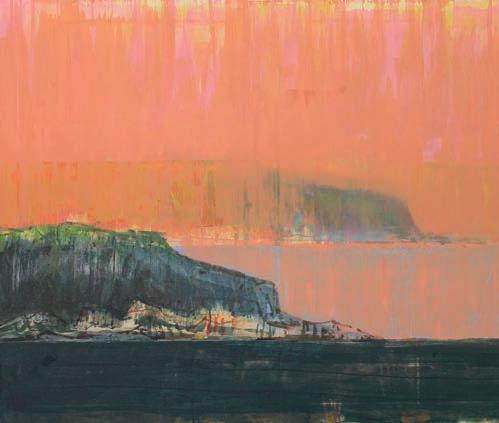

08 HOME IS WHERE THE ART IS
Internationally renowned Lucy Young shares the secrets behind the seascapes
How Calancombe Estate grew from tiny buds of intention to award-winning
32
This summer, Velarde in Kingsbridge celebrates its first anniversary
44
At Home magazine gets to know the expert Carpenter Oak team
56
What to eat, drink and do in the vibrant waterfront city of Plymouth
70 OUR FAVOURITE FOUR ART GALLERIES
Local galleries housing some of the most exceptional collections in the country
Curating an Art Collection with Catherine Gillen at the Brownston Gallery
A selection of homes to start life on the property ladder



24
West Charleton Grange offers a serene escape with its own lake and stream
The Old Workshop is a joyful interpretation of the quintessential ‘house by the sea’
50 IN THE FRAME
Halcyon Barn has been beautifully refurbished with great flair and attention to detail
62 PICTURE PERFECT
A stunning five-bedroom Grade II Listed former rectory in the heart of Stoke Fleming
76 JOURNEY IN TIME
A fine example of a magnificent Grade I Listed Devon Barton
82 BY THE WATER'S
Imagine opening the garden gate to nothing but beach
92
The Sunday School is a lesson in riverside living for a modern day
Hooppells Torr is the quintessential rural home
108
In the very heart of Salcombe stands a townhouse that is truly a special find
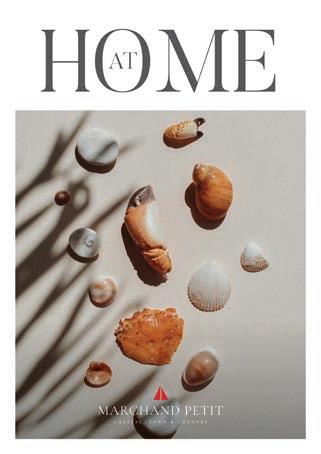
The next edition of the showcase Marchand Petit ‘At Home’ magazine will be published and printed in August 2024.



Lucy Young’s modern seascapes depicting coastlines and coves with an almost ethereal level of detail have made her one of the South West’s most renowned artists. In celebration of her highly anticipated exhibition at the Mayne Gallery in Kingsbridge, we spoke to Lucy about her distinct style, her connection to the sea, and how slow mornings in nature are key to her creativity.


Lucy, tell us a little about your love of art; how it began and how it became your career…
For as long as I can remember, I have always had a very strong yearning to create. Growing up in Dorset by the sea, it was very easy for me to be inspired by the natural world. As a child I would love to bring colour, life, and energy to everything I fabricated, often elaborately interpreting any brief to include my creative flair. It gave me a great sense of joy and pride to continually bring life to an otherwise plain page, pebble, cardboard box or whatever I could find that could become my canvas. Therefore, as I grew, it was a very natural transition for me to then choose to continue on my creative pathway, sharing my joy with the world through colour and light.
You have been an artist for many years; how has your style changed to the one we see now?
At university I was particularly passionate about the human form. I loved to encapsulate the beautiful curves of the body in motion, and I took pride in my ability to capture this energy within the stillness of an artwork. However, my true passion has always been the sea and its ability to speak to my soul. Initially, I painted from a lateral perspective, but later, with the introduction of drone photography, this awakened a light inside me. This bird’s eye view point enables me to truly represent everything that I hold so dear to my heart. I am truly inspired by the human interaction with the sea; I want to transport you with my aerial scenes and bring that connection into clients’ homes. My earlier figurative work and ability to capture energy through paint still serves me now; I love to get lost in the finer details of beach life and the ebb and flow of the tide.
Can you talk us through the process of creating a painting from start to finish?
A painting for me always begins in my heart and soul, I feel it. This can be stirred by being in a place or even simply seeing a photo that speaks to me. I am continually absorbing the seasonal changes of the sea and, where possible, I always like to take my drone and capture a place from this aerial view. Then, in my studio, I get a flutter in my stomach which instinctively tells me which image will be most magical on canvas.
I always use photos as a reference, but always making sure I hold that inner magic in my heart as I create. The first stroke of a brush on canvas is always invisible; I gesture the lines and organic shapes of the rocks and water, allowing my mind and body to connect to what the painting will be. Then I begin adding the colours my soul feels relates to the image, which can be really quite random and vibrant: bright yellow, violet, pinks. This acts as a base and, as the layers build, these undertones shine through in an intricate pattern.
Painting to me is a meditative practice and I have rituals during my creative process which allow me to continue to connect to my spirit, such as creating beautiful scents from incense or candles, listening to certain music, often with a shamanic drumming, using my singing bowl to focus my mind; all of these practises are vital to allowing myself to become fully immersed in my artworks.
When painting I have this indescribable sense that through the medium of paint I am channelling the essence of the sea, bringing that invigorating yet calming emotion we all feel when close to or in the water.


‘‘
There are so many favourites in South Devon alone, however Gara Rock continues to draw me back time after time. I love to paint the wilderness of this cove, calling you in and around her.


What is it about the aerial perspective that you find so magical?
There is a term used by astronauts who get to orbit the earth from high up in space called ‘the overhead effect’. By seeing the earth from an aerial perspective, it gifts us the ability to feel a sense of oneness and to feel humbled to be part of everything on this earth. No other planet as we know it has oceans, vegetation, birdsong…life. The aerial view is a reminder of how lucky we are to be experiencing life on this beautiful blue planet right now.
Do you have a favourite beach, cove or coastline to capture in your work?
Living in the South West, I am spoilt for choice. Sometimes there is simply something about a place which resonates deep in my heart, such as Sunny Cove in Salcombe, which I have painted many times and will continue to do so. Other times, it is the moments we have shared on the shores with loved ones that creates a special place in our hearts. Growing up near Charmouth beach, I have so many beautiful memories of going straight to the beach after school, my lovely Mum bringing a picnic, and we would play in the surf and rock pools until dusk.
There are so many favourites in South Devon alone, however Gara Rock continues to draw me back time after time. I love to paint the wilderness of this cove, calling you in and around her.
I have just launched a new collection through the Mayne Gallery in Kingsbridge, inspired by the South Hams coast. It celebrates the wilderness and beauty of so many of Devon’s breathtaking shores.
You often work on commissions. What are people looking to capture – a feeling, a memory, a moment in time – and what is the process of working with them to make that happen?
I regularly paint commissions of clients’ favourite beaches from all over the world. People normally have a specific beach that resonates with them and I listen carefully to my clients to establish which element of the place speaks to them. This enables me to very quickly get a sense of what they are hoping for from their very own artwork. I love to capture the essence of place, so as a viewer you can feel into the painting, and then combined with bespoke touches such as clients subtly woven into the scene, this makes for something really special. Bespoke details are always very naturally integrated into my artworks, so to anyone else it is simply a striking painting, but on closer inspection it is a precious moment immortalised by art. I have had collectors ask me to capture their favourite beach with their children young, when in fact their children are grownups now, growing families of their own.
I believe life is a series of precious moments that we should hold dear in our hearts and what better way to be reminded of this daily than through art.
Why do you think art can trigger such an emotional connection?
For me art is the language of the soul, so therefore the reason art triggers this deep emotional connection is because it is created from the spirit and speaks directly to your soul. I always encourage clients to select artworks with their hearts over their heads, as this is your inner spirit talking, whereas our heads can overthink decisions.
I believe every painting has a soulmate and sometimes that connection can happen immediately, whereas other times it takes a little longer to find them. By bringing artworks into your home which make your heart leap with joy, this will then create a beautiful positive energy in your daily life.
You live on the coast, here in the South West. How do you connect to the sea and nature that inspires your art in your day-to-day?
Having time immersed in nature is vital to my daily life. I love the British weather and I lean into whatever Mother Nature throws my way, cherishing those sunshine moments. I am a morning person, often rising as early as 5.30am to allow myself time to be in nature before my young children wake. A rotation of running, walking, sea swimming and yoga throughout my week, all before the hour of 7am, keeps my deep connection to my true self, although I do allow myself some days of rising to a simple cup of tea. By keeping in this practice I feel cleansed and ready for my day. Bringing this morning connection into my studio after I have done all my ‘Mum’ duties allows me to easily connect to my source of inspiration.

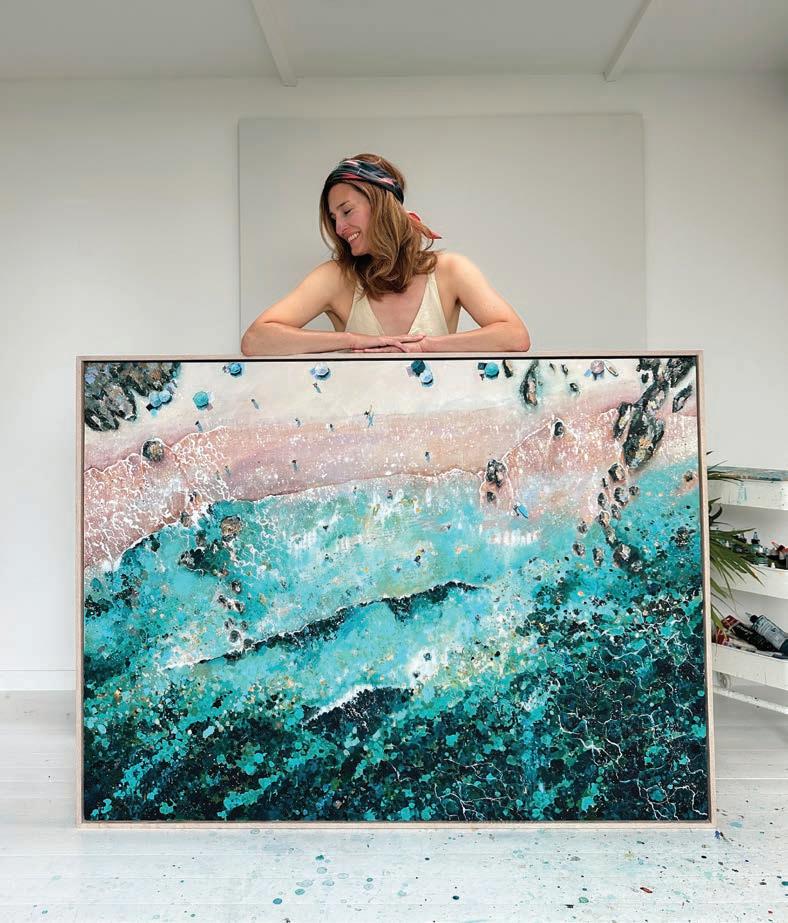


‘‘
The aerial view is a reminder of how lucky we are to be experiencing life on this beautiful blue planet right now.
And how does that typical studio day look for you?
Once the children are at school and I am fresh from my morning routine, I love to immerse myself in the rituals of my studio, filling the air with beautiful scent and music, and then I pour this positive energy onto a canvas. I am a big believer in pushing boundaries, learning and experimenting continually. This keeps my spirit excited and my artworks fresh. I have now been painting professionally for 18 years (soon to be 19), but in some ways I feel I am only just getting started and I am overbrimming with excitement of all the ideas I have yet to bring into fruition.
I am blessed to have a husband who doubles as a professional creative. He helps me with many of those vital elements which allow me to convey my art to the world. His talent for photography and videography means he will regularly pop up to my studio to capture those precious painting moments. As fellow creatives we respect each other’s need for time to be inspired, so we share the care of the children as and when we both have big projects.
Some days my studio time is both fulfilling and swift, often exiting to collect the children from school before I am fully ready. However, with experience I have found these pauses are actually a gift. It is too easy to get lost in a painting and go that step too far, whereas the balance between being a mother, wife and artist allows me moments of reflection, so when I do return to my studio I know instinctively what a painting needs to make it truly special.

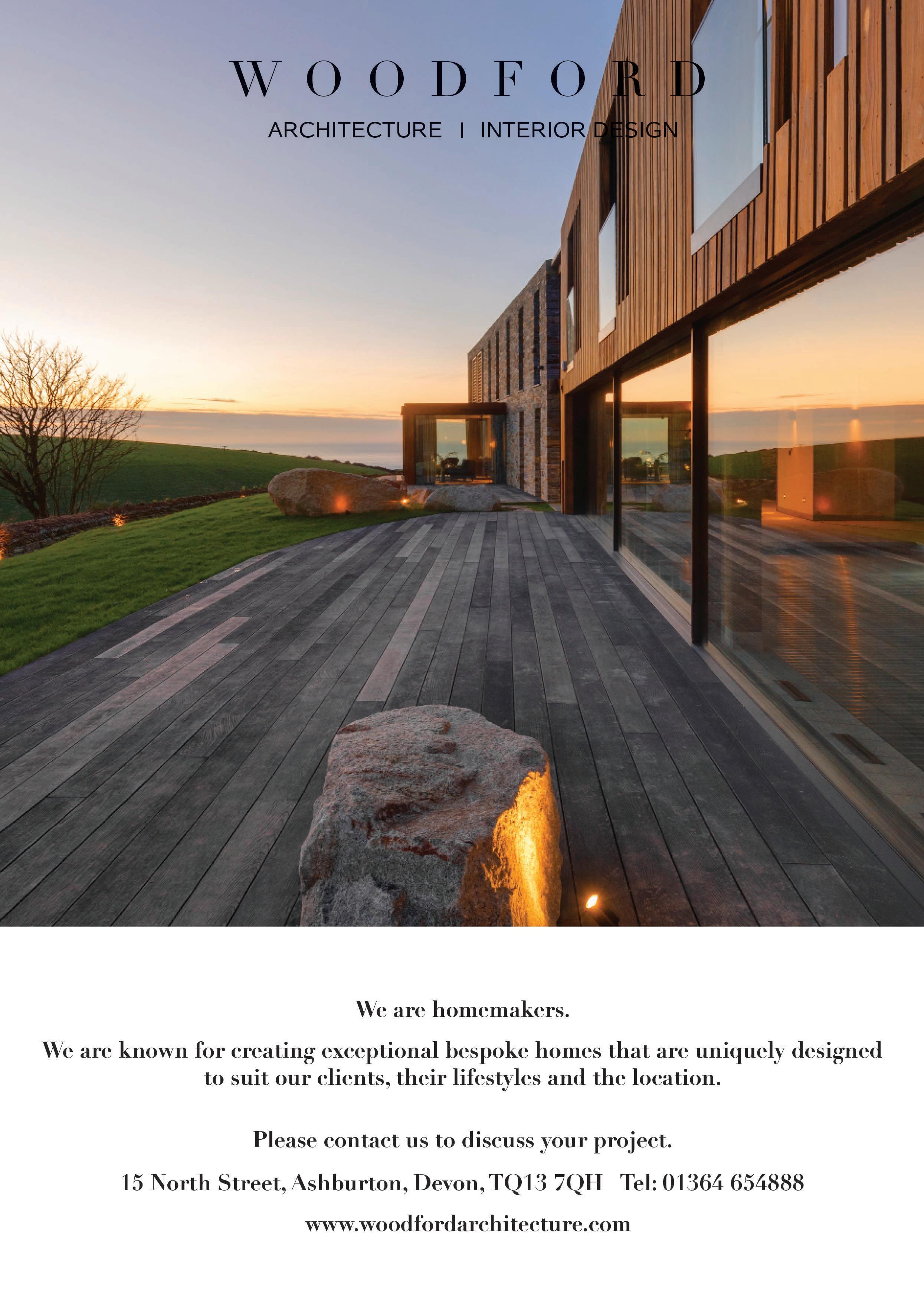

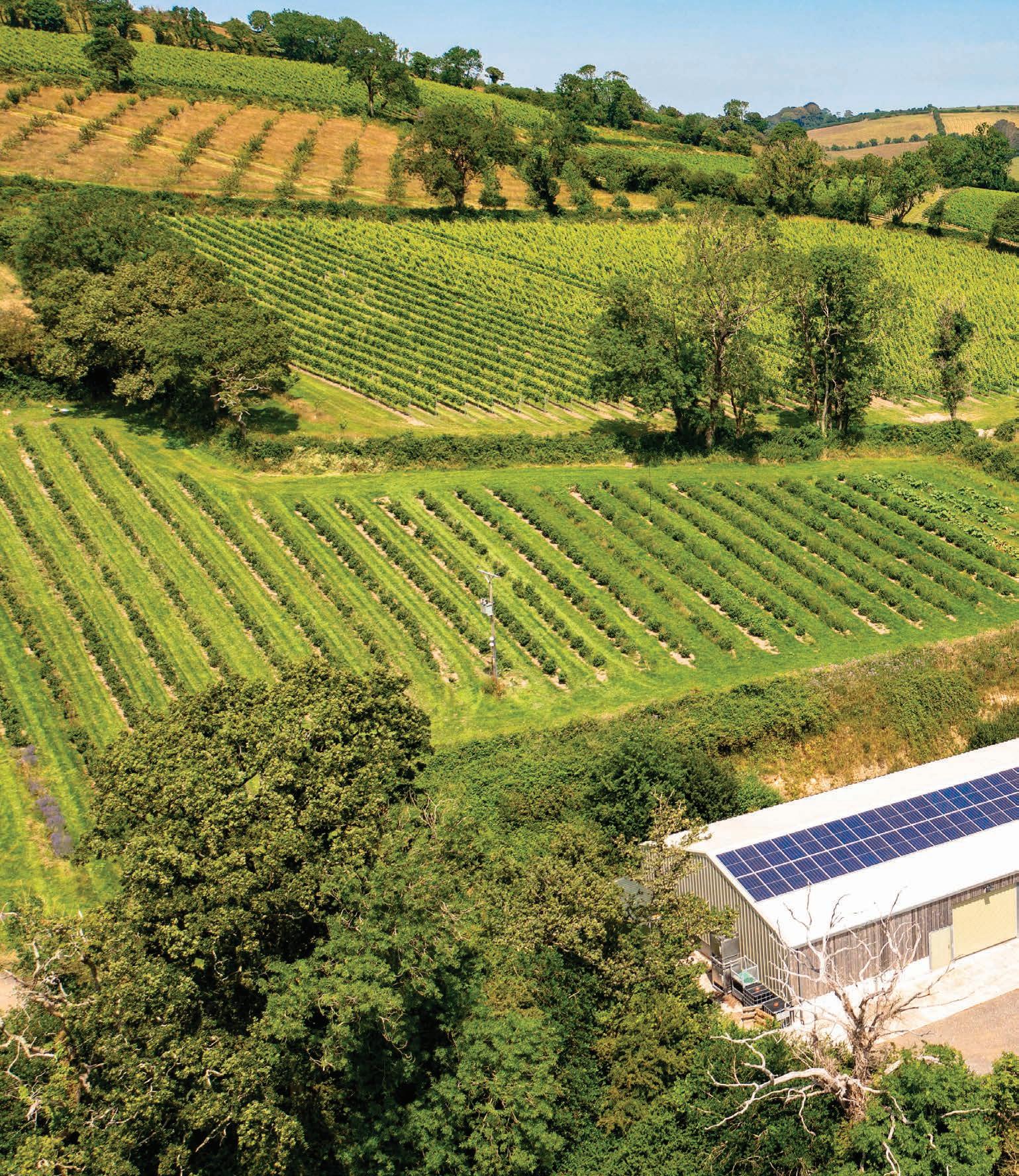

Sitting between the moors and the sea, Calancombe Estate has made a name for itself as one of the finest food and drink destinations in Devon, its wine and gin both award-winning and its restaurant lauded as one of the best. Lance Whitehead explains how a dream for a quieter life in the country evolved into something much bigger than that.



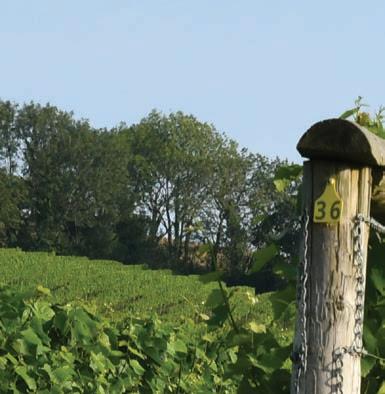

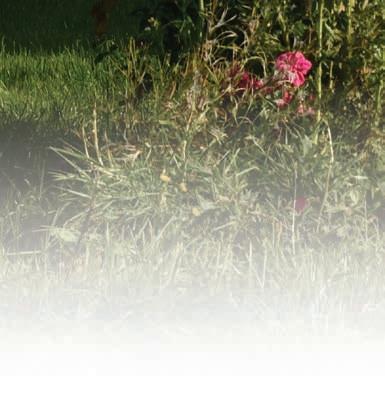



Lance Whitehead sits in a farmhouse kitchen with flagstone floors prime for the pitter patter of paws. They will arrive soon enough, in a tangle of bounding and adorable chaos that only a golden retriever puppy can bring to a family. Bella is a much longed for addition to the Calancombe Estate, a place Lance and wife Caroline have called home for more than a decade. Today, the Estate is award-winning, recognized as Devon’s best small visitor attraction and with several WineGB medal-winning wines in its cellar. From tiny buds of intention for a quieter life here in Devon has grown a flourishing business.
“Devon has been part of our families’ lives for many years,” says Lance, “Caroline’s family were Brixham trawlermen and ship builders in the age of sail, and my mother enjoyed much of her childhood nearby because her father was captain of the ‘Devonshire’, a Dartmouth-based ship that took diplomats, civil servants and troops from the UK to as far away as India, via the Mediterranean. In turn, I spent many happy summers sailing along the South Devon coast as a boy.”
By 2011, eager to find an escape to a more tranquil life, Lance and Caroline began to look for somewhere in the South Hams, with a view to retiring here eventually.
“We bought half of the 64-acre farm that was to become Calancombe Estate. The purchase included a tiny one-bedroom cottage which was ideal for us, and three barns that had been converted into holiday accommodation, which helped to pay the mortgage, and into which we imagined ourselves moving one day, when we did eventually retire.”
So far, so typical a story of planning for a steadier life in the country. Caroline and Lance were, and still are, working long hours in their ‘day jobs’; Caroline as a corporate lawyer and Lance raising capital for venture capital and private
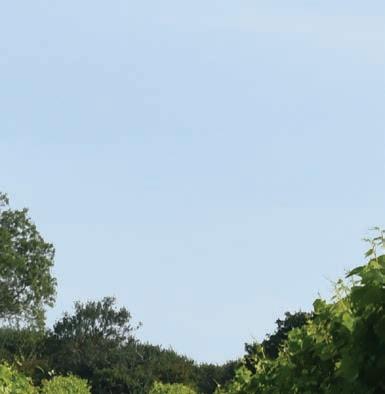
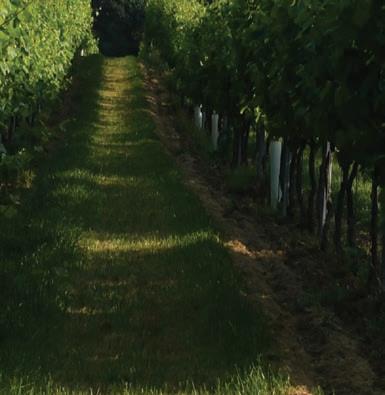

‘‘
Today,
the Estate is award-winning, recognized as Devon’s best small visitor attraction and with several WineGB medalwinning wines in its cellar.

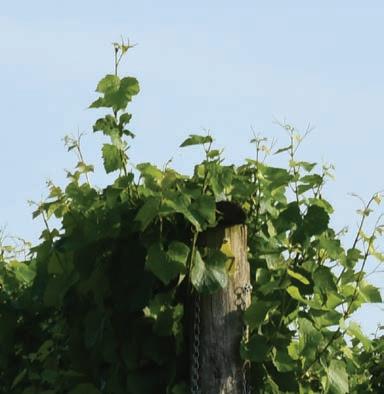
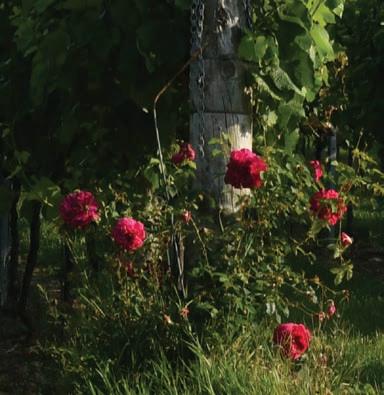

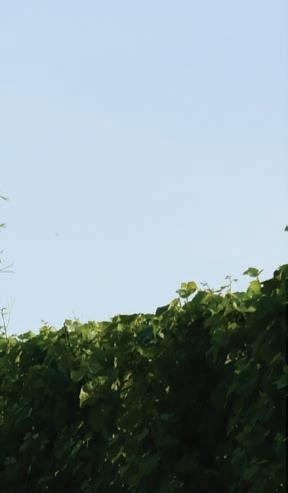
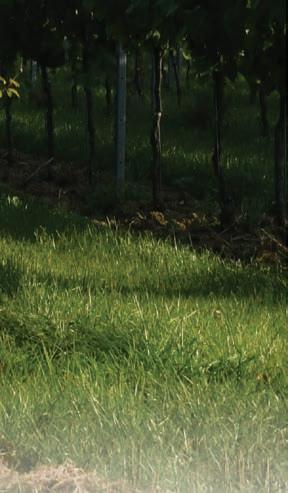



equity investing. Adding a sizeable vineyard, winery and distillery to the melee of an already busy day-to-day was never part of the plan. But Lance hints at the plot twist about to come: “It is worth pointing out that Caroline has always been a wine enthusiast and she has amassed an impressive knowledge, along with thousands of bottles from wineries across Europe and the New World.”
“One day, after a visit to Sharpham Vineyard on the Dart, we were walking around the farm and it struck us that the site may be ideal for vines; with south-facing slopes and well-draining soil. We sought the advice from Duncan Schwab from Sharpham and he gave us the encouragement we needed to take the first steps. We planted the first two fields; the idea initially was to grow grapes to supply to (ideally) Sharpham, because we lacked the scale to support a full wine making enterprise.”
This pared-back introduction to growing continued for a couple of years until, unexpectedly, the other half of the farm and a newly restored farmhouse came up for sale. They faced a now or never decision.
“Happily, we decided to sell our home and moved here 10 years ago, on Valentine’s Day 2014.”
The move marked a pedal to the metal moment for the vineyard and the rest is history. “With the additional land, we were able to plant another three fields, bringing the total to around 23,000 vines.” Lance continues: “On land too steep for grapes, I have planted almost 2,000 traditional West Country cider apple trees. We also planted 3,000 blackcurrant bushes too. The additional grape volume made a wine making business viable and over recent years we have built a fully equipped winery, where we undertake every process to make wine, cider, cassis and Calvados method apple brandy on site.”
Since then, an army of full-time professionals have joined Lance and Caroline, helping to transform Calancombe Estate into what it is today.
“Growing grapes within the uncertainty of the UK climate, winemaking and running an award-winning visitor centre and restaurant side, involves several full-time professionals, wine makers, chefs, and sales team etc., plus parttime staff in the visitor centre and restaurant. Caroline orchestrates this team closely and she has a considerable influence on day-to-day matters, and at a more strategic level, she directs the operation. This is a massive undertaking, relying on teamwork and dedication from everyone, and Caroline has been inspirational. Her enthusiasm is a great asset.”
With Caroline’s lifelong dream of owning a vineyard realised, Lance soon found himself carving his own niche: Dartmouth Gin.
“The distilling side of the business is very different. The distilling process is predictable and controlled, and I undertake every aspect of Dartmouth Distillery Co’s production, from developing new spirits to distilling, bottling and packaging etc., so it is very much from the heart. I make gin that I love and hope that others enjoy it too. So far, this has proven to be a successful approach. I tend to work in the distillery at the weekends and in the evenings to fit around my work commitments. Now that our apples trees are becoming productive, we are making Calvados-method apple brandy too. Over the past three years, I have been double-distilling a delicious 92% ABV spirit which is maturing in four port barrels.”
All ingredients in Calancombe’s lineup of cassis, still and sparkling cyders, and of course its still and sparkling wines, are grown on the estate. Additionally, several of the botanicals for Dartmouth English Gin are grown on the Estate.
“Absolutely every aspect of wine, cider and brandy production occurs on the estate. We make these products solely from what we grow here, and the diversity is based in part on what will grow on the Estate. The steep slopes are not suitable for vines, mainly because tractor operation could be dangerous, but this ground is absolutely fine for apples. The blackcurrants grow in fields that are too small to be vineyards. Diversity brings a degree of certainty too. Our West Country apple trees thrive in this climate, and blackcurrants are also resilient, and both should produce a good crop, even if rain hampers grape production.”
Some elements need a little outside help, whether that is a matter of scale or a desire for the best possible ingredients. “With gin and cassis, we must
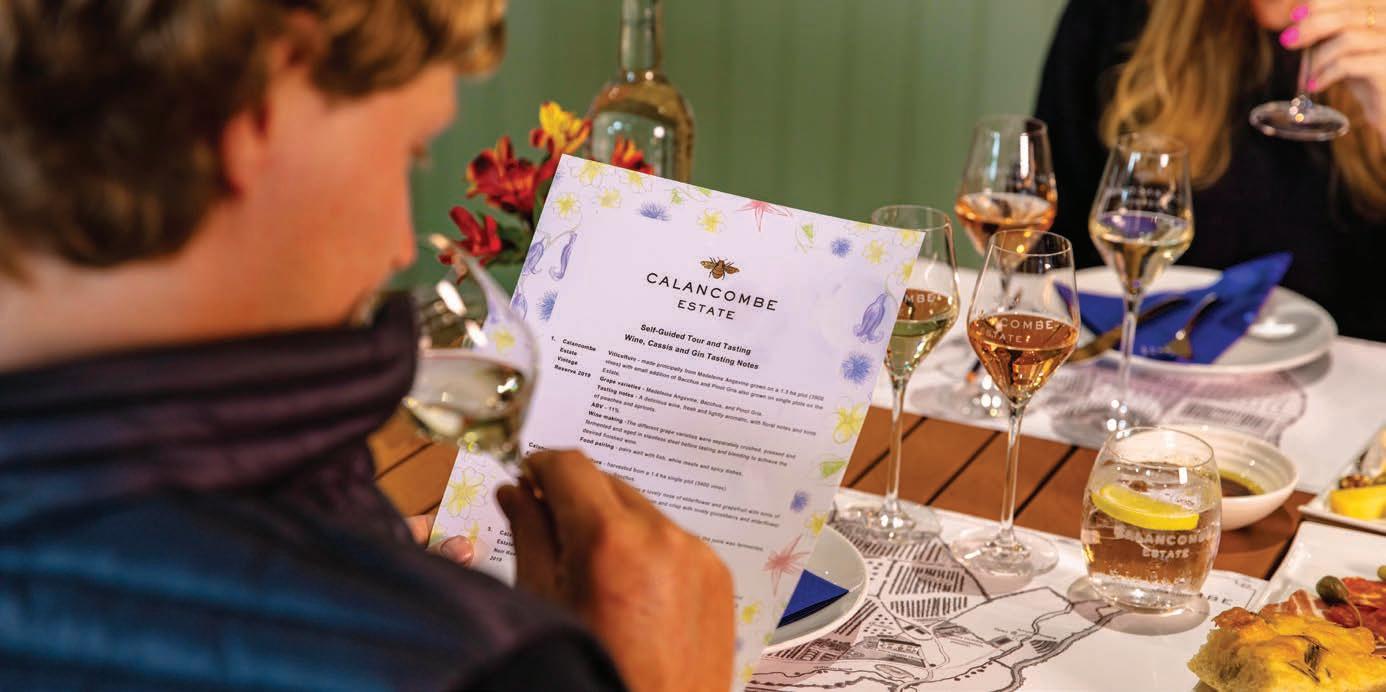
buy-in neutral grain spirit, which is ethanol made from organic English wheat. This forms the basis of our gin, and it is a key component of the cassis too; we just don’t have the scale to create the base spirit from our own resources and this is illustrated by our small brandy production, where it takes eight tons of apples to make just 210 litres of spirit. Also, we source the botanicals from the best possible sources around the world. Dartmouth English Gin’s 16 botanicals come from Ghana, Macedonia, Spain, Morocco, Cyprus, Uzbekistan, Indonesia, Guatemala, and Pakistan. However, we do grow our Scots pine needles, rosemary and kaffir lime leaves on the Estate, and the water comes from an aquifer 80m below the farm.”
Such large-scale production doesn’t come without its challenges. Lance cites regulatory and planning hurdles as some of the first to have to be picked through: “See Clarkson’s Farm Series 2 for examples!” he laughs. With that side of things overcome, the main challenge now will surprise nobody who has attempted to farm in some of the wettest months on record seen recently.
“Cold and wet winters don’t really worry us too much, except that we must work outside pruning vines and trees during this time of the year. However, once the vines begin to grow, the weather has a fundamental influence over the outcome. A few examples: frost can cause damage the emerging buds, reducing the crop yield; dampness can lead to mildew, heavy rain can impair the pollination process, and a lack of sun will slow the development of the grapes, potentially pushing harvests perilously into winter, when they become vulnerable to rot. At the end of the day, growing grapes is farming, and we share the same concerns as most of our neighbours!”
While an excess of rain proves problematic, Calancombe Estate benefits from the same microclimate that has turned Devon into a growing hotspot. There are now more small vineyards here than in any other region of the UK.
“From our perspective, we have found ourselves in a wonderful microclimate that local farmers have known about for generations. The sea, about four miles away, moderates the temperature in summer and winter; the ground provides excellent ‘terroir’ with its well-draining nature (vine roots do not like to be suspended in wet ground, that is for sure). I understand that the region offers a longer growing season than the South East of England, but we do have to take a damper climate into account.”
Another area of concern and consideration for the Estate is the environment.
“Within our small farm, we have taken a range of measures to reduce our carbon footprint. The 20kw of solar panels generate more power than we use across the year, with the balance going to the National Grid, and we have planted almost 30,000 vines, trees and bushes. We can’t operate without our diesel-powered tractors, and we offset them by our subscription to Climeworks, a Swiss-based company that builds and operates carbon
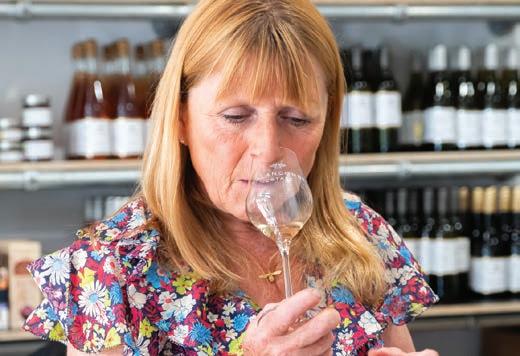

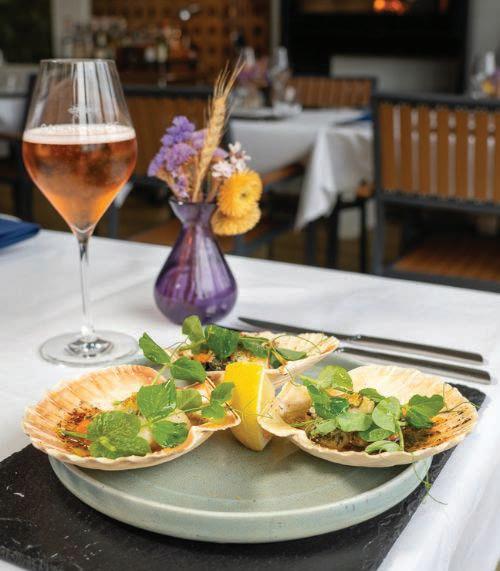
‘‘
We source the best possible food for the restaurant. In addition to the Estate grown produce, we work with a select group of local suppliers that source most produce from the local economy, from farms and producers that we can identify.
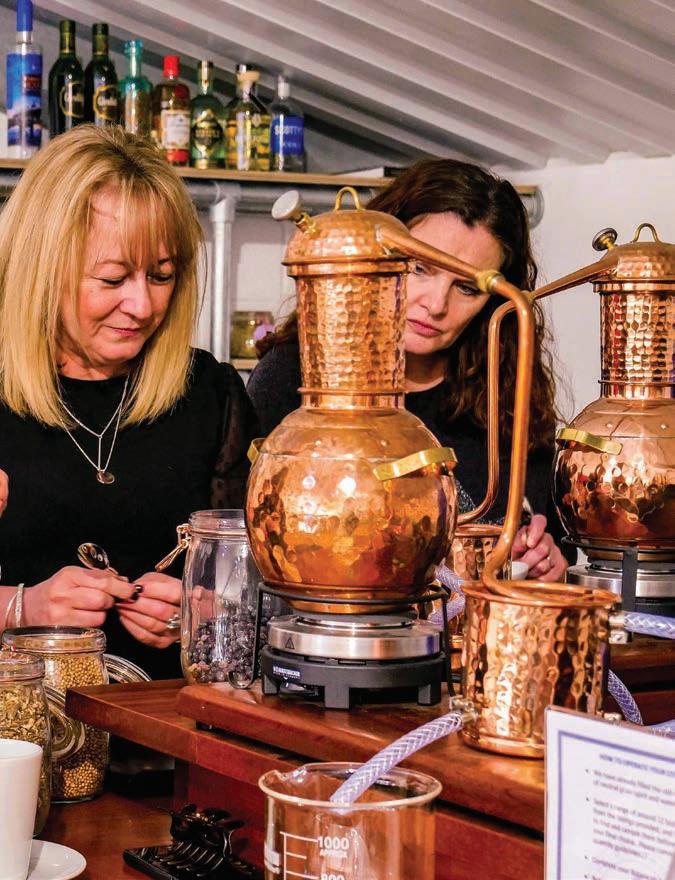
capture machines around the world. Additionally, our new gin bottles use 25% less glass than the previous ones, and the glass they are made from is recycled too.”
The eco-conscious elements of the Estate’s design and day-to-day running haven’t gone unrecognised, with Dartmouth Distillery Co recently recognised as the UK’s first carbon negative gin maker.
With that side of things flourishing, Lance and Caroline turned their attention to food. The result is the Restaurant at the Winery; headed up by chefs Jonathan Mather and Nick Harris, with a kitchen garden tended by Nigel Lee, the restaurant has quickly become an important part of the Calancombe Estate experience.
“We are immensely lucky to have met Jonathan, and he brought-in another talented chef, Nick Harris. Between them, and working closely with Caroline, they have developed an amazing range of menus, which change every quarter depending on the season and availability of our Estate grown salads and vegetables, grown by Nigel Lee ss. Nigel has done an amazing job taking the basic structure of the Kitchen Garden - which is stepped down a steep south facing slope - to create a wide range of produce for the kitchen only 100m away.”
An emphasis on local produce combined with a willingness to source from far and wide in the name of quality has proven to be a recipe for success.
“We source the best possible food for the restaurant. In addition to the Estate grown produce, we work with a select group of local suppliers that source most produce from the local economy, from farms and producers that we can identify. Virtually all of the cheese we serve is English and we have enjoyed finding some outstanding cheeses from small regional producers. However, in pursuit of excellence, there are certain items that we source from the Continent – Iberico ham from Spain, for example, and a range of charcuterie from Italy (and olive oil, of course!)”
Excellent food and wines, including red Spanish and Italian wines, and a friendly and relaxed ambience has gone down well; the Restaurant has already earned a reputation as being one of the best places to eat in South Devon.
“Many guests return bringing more friends with them,” says Lance. “The restaurant and wine making activities are highly complementary, and we really do need both to generate the critical mass that is essential to the stability and success of the business. The key challenge for 2024 is to spread the word and encourage more people to come to see us.”
Combine its many elements and the future is bright for Calancombe Estate.
“We believe that we are on a good trajectory and guest feedback has been overwhelmingly positive. We were astonished to have been chosen as Devon’s top small visitor attraction in 2023, an amazing endorsement for such a small business.”
Lance is particularly keen to encourage more local guests to visit and enjoy all the Estate offers. Holidaymakers receive an equally hearty welcome, Calancombe’s location in the Witchcombe Valley putting it within easy reach of many South Hams highlights.
“We are surrounded by so many places to go and things to do, with the south coast only four miles away and Dartmoor a similar distance to the north. Bantham and Bigbury, where the River Avon reaches the sea, is an obvious place to enjoy, with sandy beaches and some surfing. From either side, the coastal path leads to more secluded beaches and offers amazing views across the sea. However, it is quite hilly, as the path runs from sea level up and down some steep slopes. Further west along the coast is Mothecombe and this is more intimate and peaceful. The nearby Fleet Estate Gardens are enchanting.”
With a twinkle of the same fondness for the South Hams that drew him and Caroline here all those years ago, Lance concludes: “I would suggest that one of these two options in the morning, followed by a tour of the vineyards, wine tasting and a long and relaxing lunch at Calancombe, would make for a lovely day. Or arrive later and treat yourself to a very posh afternoon cream tea with some Calancombe Estate sparkling wine. Everyone can be assured of a great welcome.”


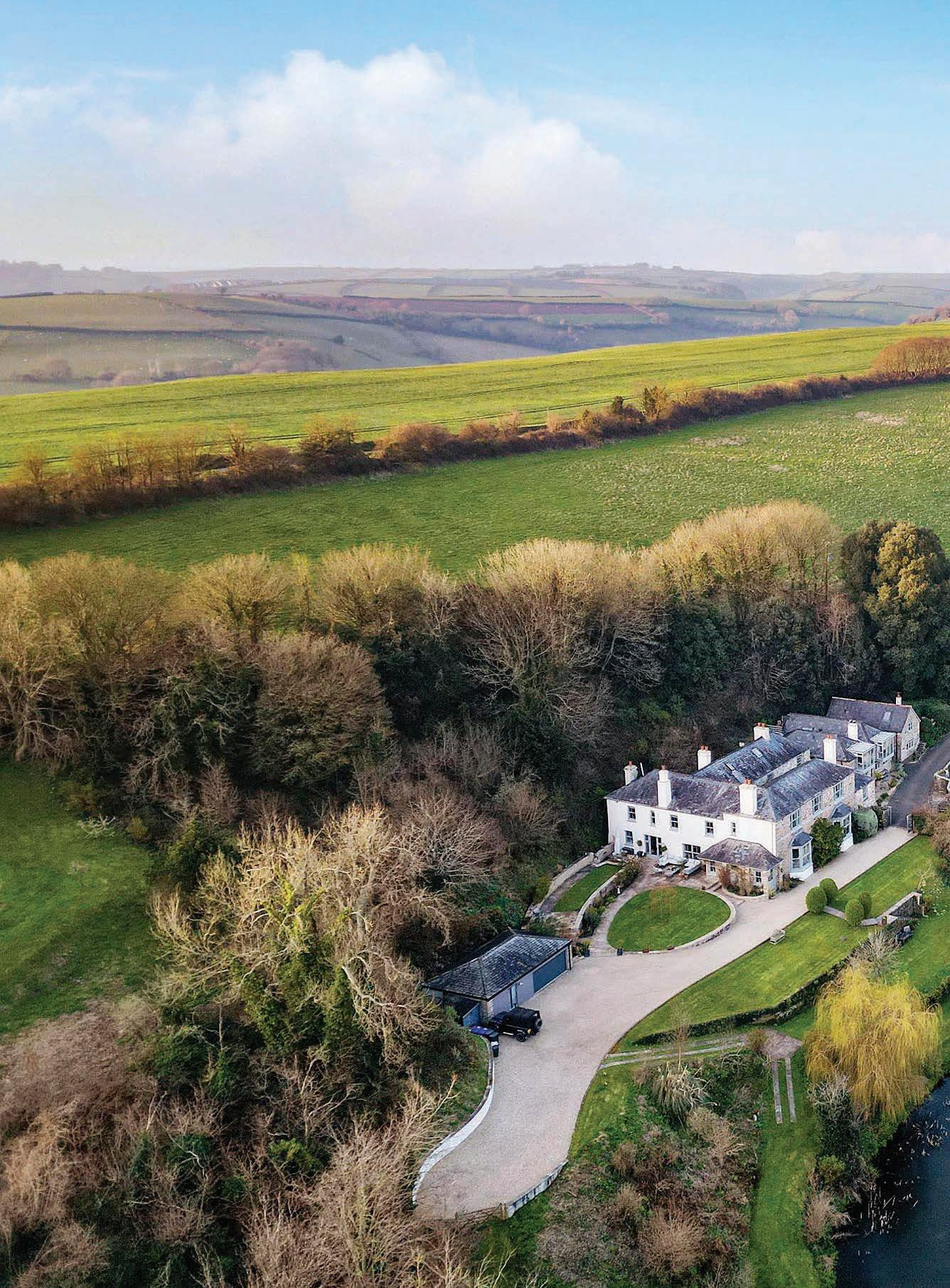
Nestled within over nine acres of picturesque Devon countryside, West Charleton Grange offers a serene escape with its own lake and stream.

This expansive estate includes six beautifully refurbished holiday properties, an indoor heated swimming pool, gym, tennis court, children’s playground, playing field, boat store, orchard, and paddocks.
Set amidst mature grounds, the main manor house commands attention. Originally a 16th-century farmhouse, it was significantly altered during the Georgian period, resulting in a stunning structure of local stone with a slate roof, tall sash windows, and well-proportioned rooms. The unlisted house retains many architectural features, including an elegant main staircase, fireplaces, coving, and fine joinery.

Originally a 16th-century farmhouse, it was significantly altered during the Georgian period, resulting in a stunning structure of local stone with a slate roof, tall sash windows, and well-proportioned rooms.
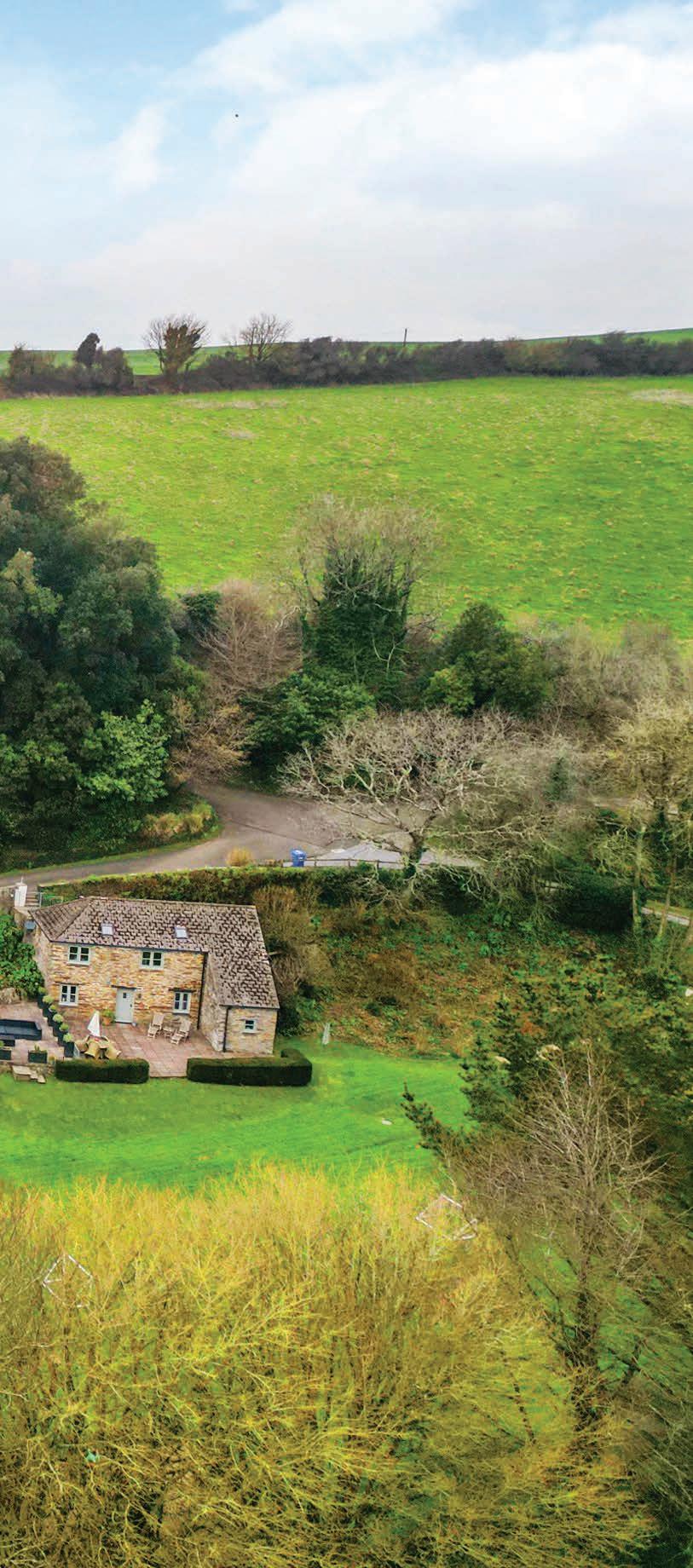
The ground floor features three spacious reception rooms, with the sitting and dining rooms offering views of the garden and lake through large bay windows. The sitting room connects to a vast kitchen/breakfast room, creating a central family hub that faces west to capture the afternoon light. The kitchen features modern appliances and a two-oven Sandyford cooker, and it opens onto a paved terrace via French windows.
Upstairs, five generous double bedrooms each offer lovely views to the east or south, making for a serene space in which to wake up. The main bedroom features a substantial en-suite bathroom/dressing room and a separate wet room. Two additional bedrooms have en-suite facilities too, while the remaining two share a family bath and shower room.



Adjacent to the main house, West Wing House serves as the largest holiday property within West Charleton Grange. It comprises a living room, kitchen/ dining room, and three bedrooms, and could easily be re-incorporated into the main house if desired. Five additional cottages, converted from traditional estate buildings, offer self-contained accommodation with combined living and dining areas, most featuring wood-burning stoves and private outdoor terraces. Guests have access to barbeques, an outdoor playground, and a playing field, with separate parking provided.
The estate also includes several outbuildings. The Folly, an oak-framed entertainment space, features high vaulted ceilings and exposed timbers, accommodating up to 30 people. It includes a terrace, fully equipped kitchen, WC, and a cinema room with a projector and screen. Nearby, the indoor pool building features changing rooms and a gym, while the grounds extend to nine acres of lawns, a secret garden, orchard, woodland, lake, and stream. The property also includes ample parking, a triple garage, garden store, and boat store.
‘‘
West Charleton Grange is a unique blend of historic elegance and modern luxury, providing a perfect retreat in the heart of Devon.

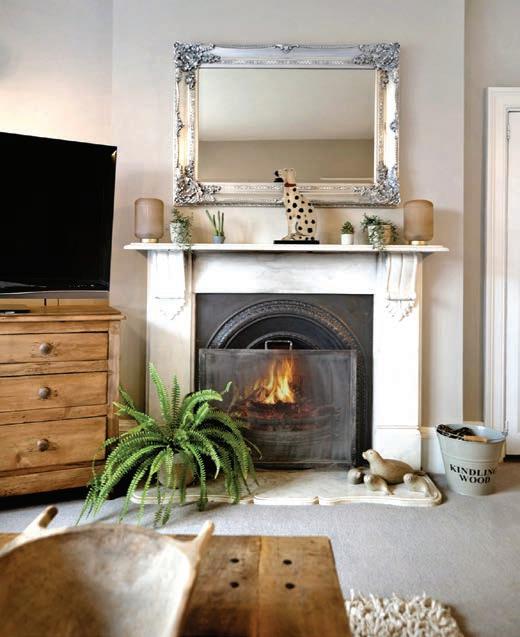
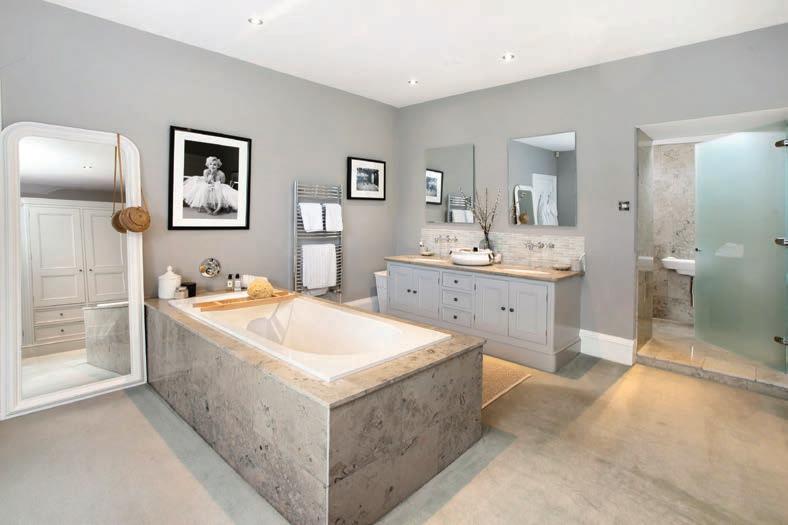




This summer, Velarde in Kingsbridge celebrates its first anniversary, having launched in July 2023 to much anticipation and delight with a fabulous opening party and inaugural exhibition.
For its very first show, the gallery welcomed one of Europe’s leading artists, Italian painter and sculptor Alessandro Twombly, alongside sculpture and print by Peter Randall-Page RA and a group exhibition by artists from Devon and the UK. Since then, Velarde has presented a series of diverse shows that reflect its ethos of supporting outstanding talent and bringing exceptional work to South Devon.
“Our exhibitions have been incredibly varied in style” says Matt Velarde, who owns and runs the gallery with his wife Fi. “That variation has been deliberate, as we are a new art space and we wanted to really feel our way into our identity as a gallery. Our first year has been an exciting but challenging year. We’ve had so much positive feedback, and our team have worked really hard”.
Velarde began this summer by hosting Paradise, a celebration of exquisite flora and fauna and summer vitality, curated by the highly acclaimed Rapture art collective and focused on paintings by Jesse Leroy Smith and other invited artists. From 13th July the gallery presents its high season show, titled Colour Stories, billed as an exhibition of “vivid artworks in paint, print and clay”. It brings together leading names from across the country, from Edinburgh to St Ives in Cornwall, showing how contemporary artists are using the power of colour to challenge and inspire us.
The show is curated around a new collection by acclaimed Scottish printmaker Paul Furneaux RSA, who works using traditional Japanese woodblock printing techniques. His practice is based on an intuitive approach to creating abstract works of art, by combining the controlled cutting of traditional Japanese printing with the more expressive style associated with woodcut in the west.


Fi Velarde, who is herself a printmaker, has long been an admirer of Furneaux’s work. “A few years ago, I was lucky enough to attend a course at Paul’s studio in Edinburgh, to study woodblock printing” she says. “I had loved Paul’s work for some time, and consequently I became even more fascinated with his printmaking and his creative ethos. His use of colour and pattern are mesmerising, so you can imagine the joy I felt when he agreed to show his work here at Velarde”.
The show then moves from Furneaux’s highly structured compositions to the freer, more allegorical approach of artist Michelle Griffiths, whose highly regarded work is held in public galleries including the Victoria & Albert Museum in London. Through a combination of drawing, painting and printmaking she creates brightly coloured images that are made in ‘conversation’ with her materials and are directed by the actual process of making. In her vivid artworks, shape and colour come together to suggest thoughts, forms and ideas in a lively and entirely undirected way.
“We are so pleased to be exhibiting Michelle’s work” says Fi. “It is both spontaneous and intuitive, full of colour, vibrancy, imagery and symbols, and we have a wonderful selection of her paintings, screenprints and monoprints in this show”.
Mark Godwin is the next high-profile talent in the Colour Stories exhibition, an artist whose work is defined by a powerful use of colour and complex, large-scale compositions. Mark studied at the Central School of Art in London and graduated from the Royal College of Art with an MA in Printmaking. Combining his skill as a printmaker with his love of painting and collage, Mark’s practice is rooted in landscape and explores the art historical concept of ‘the sublime’ - the overwhelming beauty and power of nature.
Also inspired by ‘the sublime’ are works by artist Anthony Garratt, whose experimental paintings of our planet’s wild landscapes, including Dartmoor and the South West coastline, bring a dramatic and emotive palette to the exhibition and explore ideas of aloneness, and the innate power of the world’s remote natural landscape.
“There is something that creeps up on you as you look into Anthony’s images” says Matt. “They have a quiet, understated power. Some of his

There is something that creeps up on you as you look into Anthony’s images. ‘‘


American works have a cinematic feel and an underlying sense of uneasiness and melancholy. They are all beautiful to look at, but there is danger in them”.
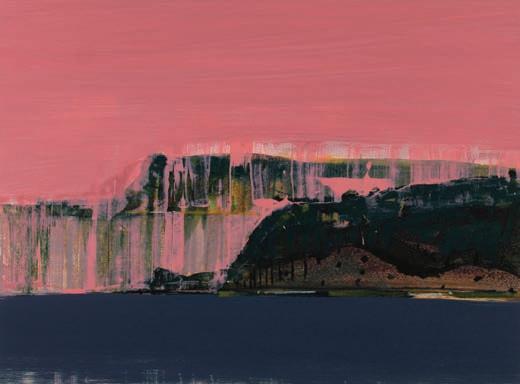

Three-dimensional works in the show are provided by Cornwall based ceramicist Sam Hall and Irish sculptor Patricia Volk RWA FRSS, whose work is also included in Velarde’s beautiful sculpture garden collection. Matt and Fi are both great admirers of her striking forms. “Patricia’s boldness and brave use of primary colours was what first captured our imagination” says Matt. “The simplicity of her forms belies a real sense of contradiction, of both strength and frailty. They are extraordinary works and we very much wanted Patricia’s sculpture in the garden from our launch, and are thrilled to be able to show more of her pieces in our Colour Stories show”.
Volk’s practice is based on an intuitive exploration of the immediacy of clay, using techniques from coiling to slab building to make pieces which are finished with bright and transformative applications of acrylic paint. Placing one powerful colour against another, and one powerful form beside another, her work achieves a satisfying aesthetic that she describes as “purely visual and non-intellectual”.
Last in the Colour Stories line up is work by ceramicist Sam Hall, who lives and works in St Ives. He is highly regarded for his playful, non-functional ceramic vessels which bring art and contemporary craft together in works where surfaces become a canvas for intuitive and painterly applications of colour. His thirty-year career has seen him become one of the South West’s most recognised and best loved artists, with an international reputation amongst discerning fans of contemporary craft.
“Sam’s works are so original” says Fi, “and their colour and form complement the other works in this show so well. His pieces all seem to have a story implied within them, and I love all the beautiful texture, colour and unusual mark making on their surfaces”.
Hall’s work is the finishing touch to an exhibition of works in bold and beautiful palettes that visitors are certain to find both fascinating and uplifting. “We are looking forward with huge anticipation to this show” says Fi, “which is going to be an explosion of colour for summer”.
See Colour Stories from 13th July to 14th September 2024 at Velarde, 86 Fore St, Kingsbridge, Devon TQ7 1PP. Preview opening Friday 12th July 6pm to 8pm. www.velarde.co.uk.


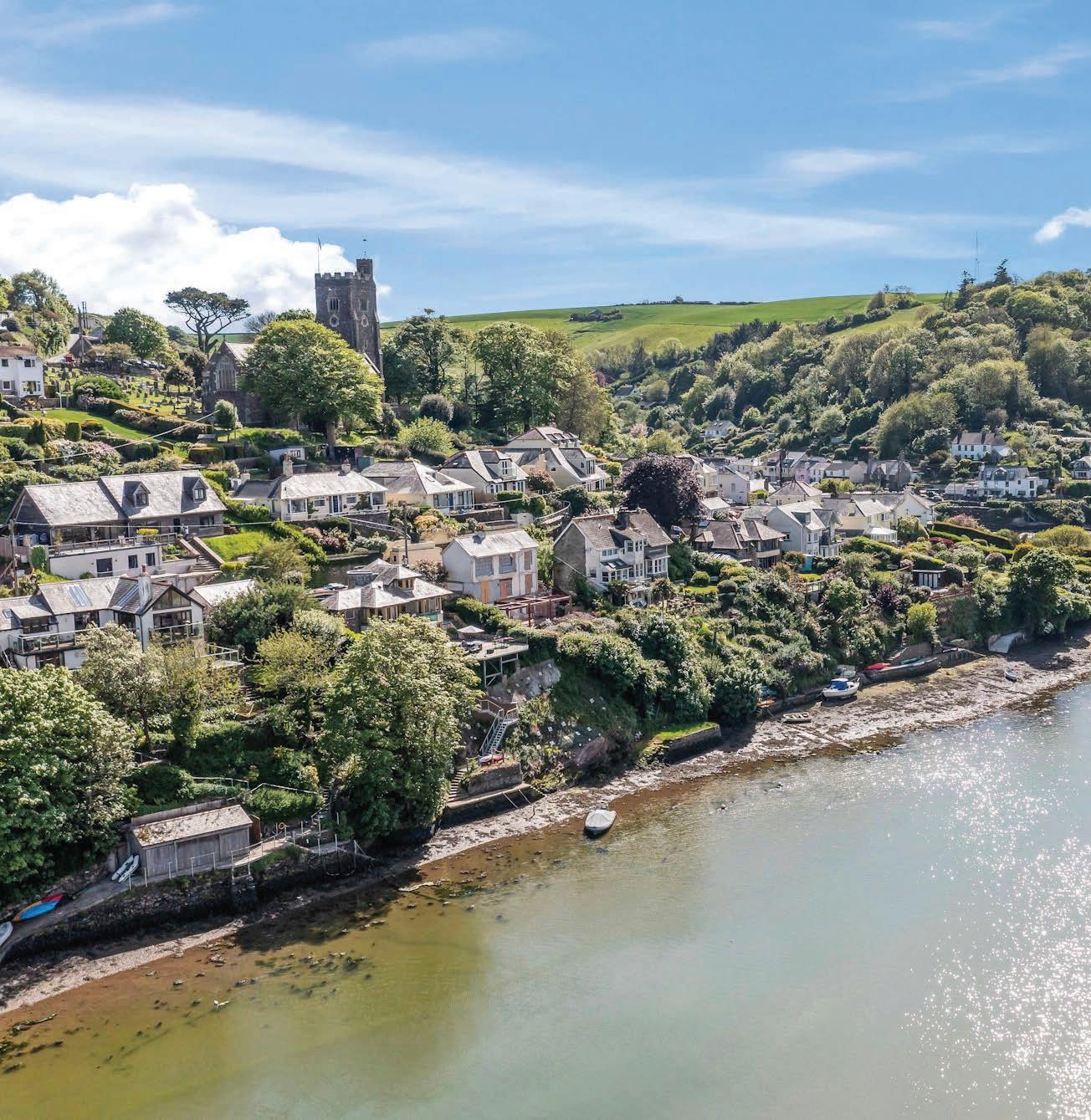


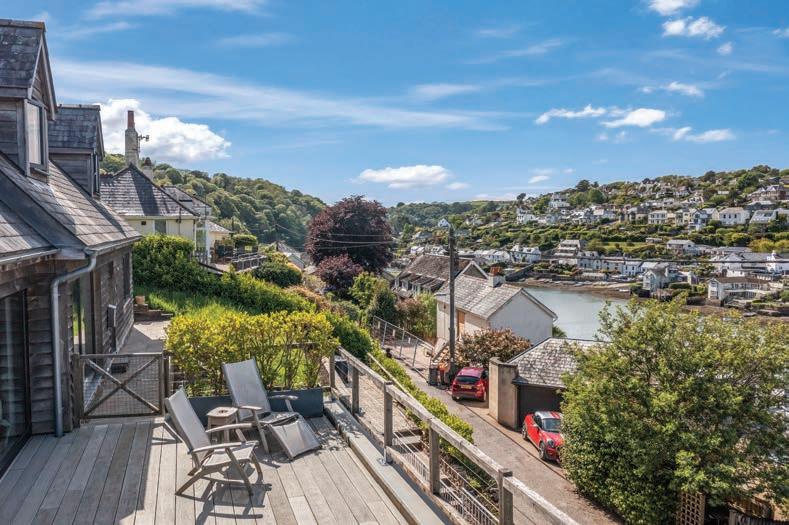

As you wander through this charming former fishing village, amongst stone cottages of the past, you can’t help but admire how this modern home sits with such ease in its beautiful environment. The oak cladding and French slate roof nods to the natural beauty of a Nordic Sommerhus, while the softly lit decked terrace invites you to enjoy long, lazy summer suppers.
The coastal light streams in to create a calm softness in this incredibly appealing home, while a log-burning fire and sumptuous bathrooms create a cocooning feeling for hunkering down with a good book after wild and windswept winter walks around the estuary.
The Old Workshop is a joyful, modern interpretation of the quintessential ‘house by the sea’, sitting perfectly at ease with its beautiful surroundings.
Recently built in 2021, in 2558 sq.ft., The Old Workshop is set back from the quiet road by its double garage and parking area. Granite paved steps meander up to the front door. Stepping into this home feels like a breath of fresh air, a welcoming soft palette of beautiful pastel colours and natural materials including the Carpenter Oak Larch exposed framework, whitewashed brick and poured concrete floors awaits you.
A beautifully light open-plan living space is enriched by vaulted ceilings and light-filled timber framed glazing, opening directly onto the expansive composite deck with fabulous views over the estuary and surrounding rolling countryside, creating an easy flow between inside and out. The bespoke open-plan kitchen in a soft pastel pink creates a contemporary feel and sits seamlessly in the space, with a dining area adjoining.
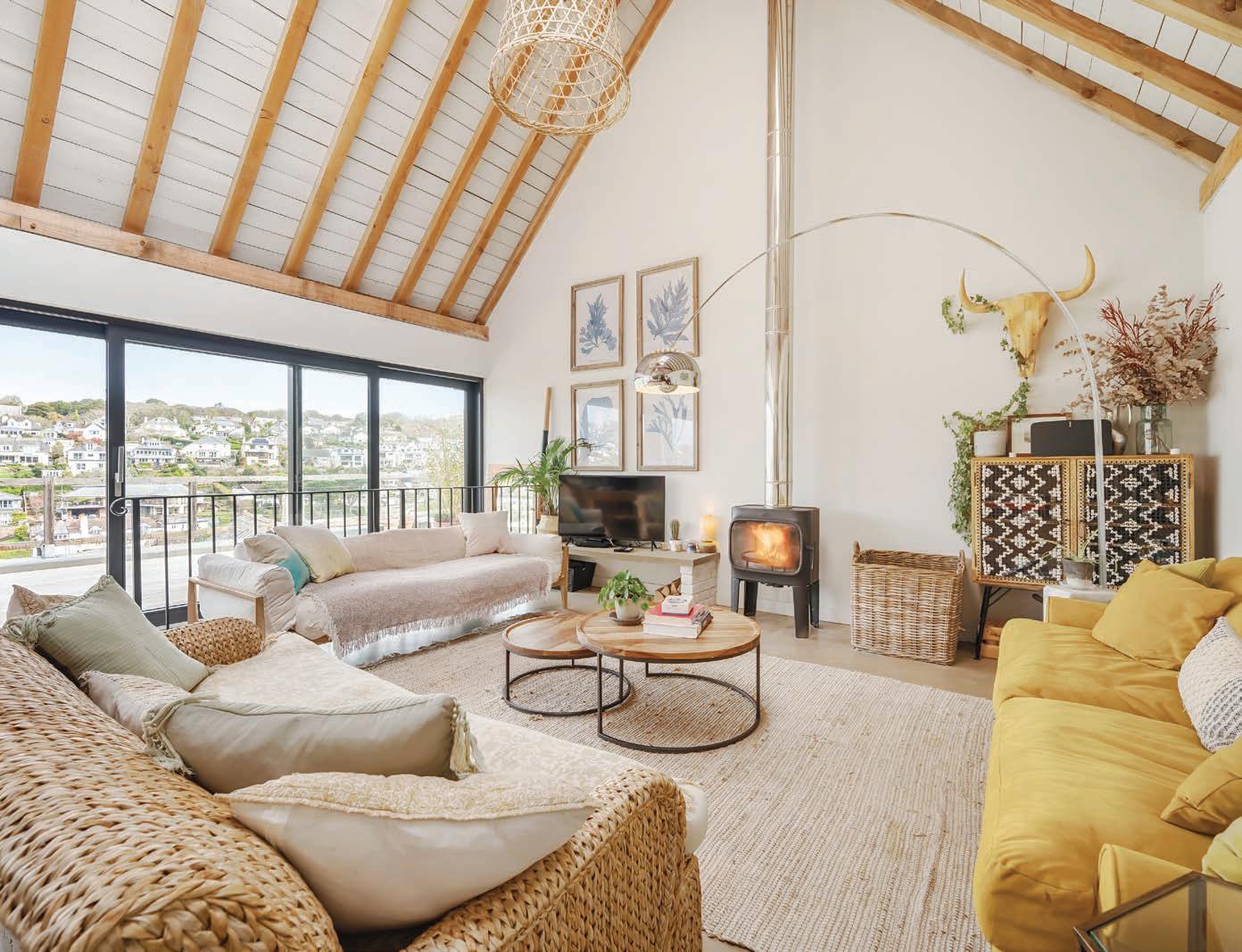


Brass bar handles, Gaggenau appliances (apart from the dishwasher) and central island with breakfast bar and hob with extractor over make this an enjoyable area to cook in. To the rear of the kitchen is the utility room with butler sink, built-in storage, coat hanging and door to the rear of the property. Beyond the dining area is the relaxed living space of the sitting room, which centres around the Jotul wood burner. The guest cloakroom is also on this floor, as well as the principal bedroom suite with herringbone engineered oak flooring and beautiful views over the estuary. An exposed brick arch leads to the spacious en-suite bathroom, with free-standing clawfoot roll top bathtub, large walk-in shower with black Crittal style screen, marble floors and underfloor heating.
The ground floor space offers a snug area perfect for family movie nights or simply a place to retreat, a door leading to the ground floor roof terrace. Alongside this is the second bedroom with herringbone engineered oak
‘‘
A beautifully light open-plan living space is enriched by vaulted ceilings and lightfilled timber framed glazing, opening directly onto the expansive composite deck.
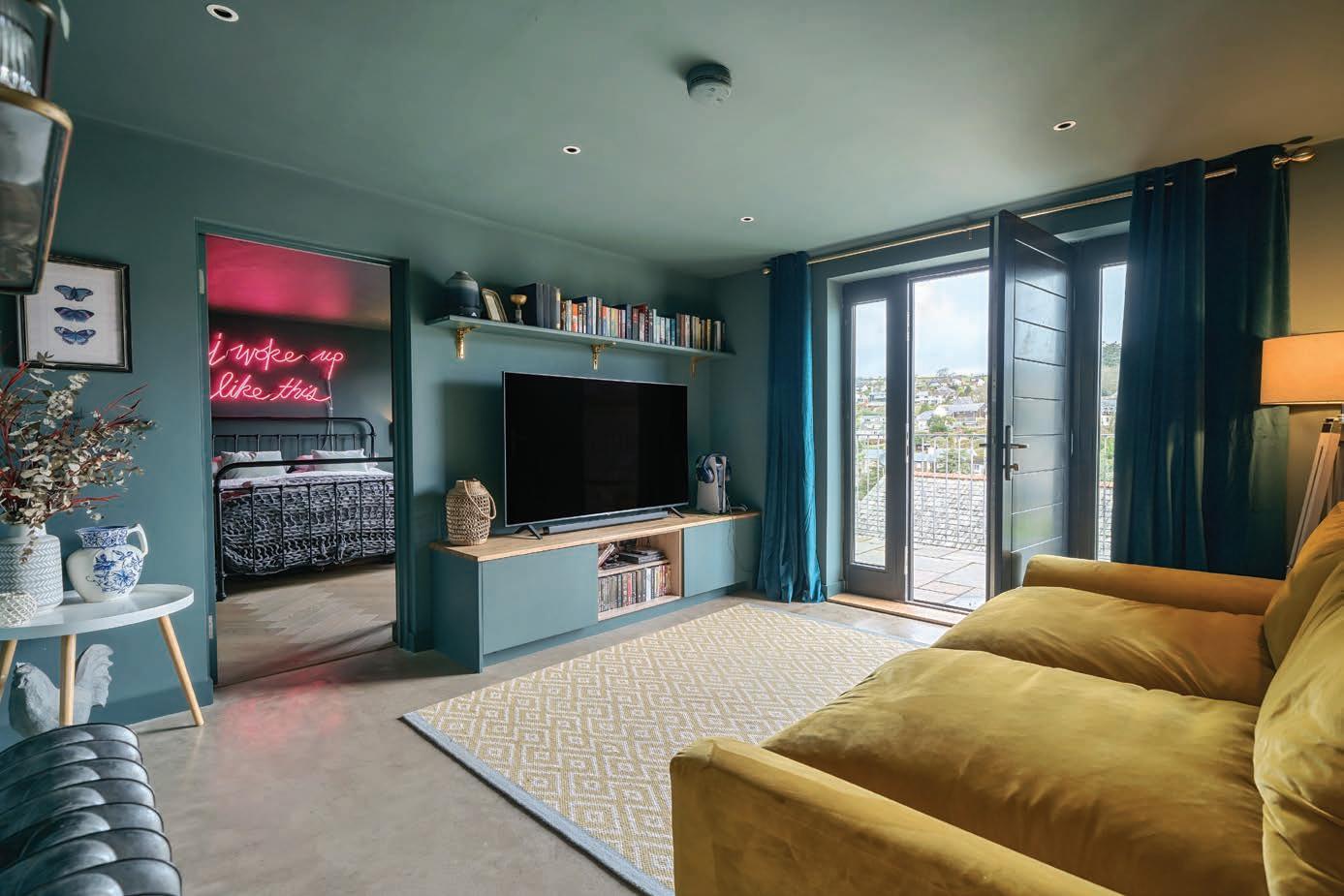
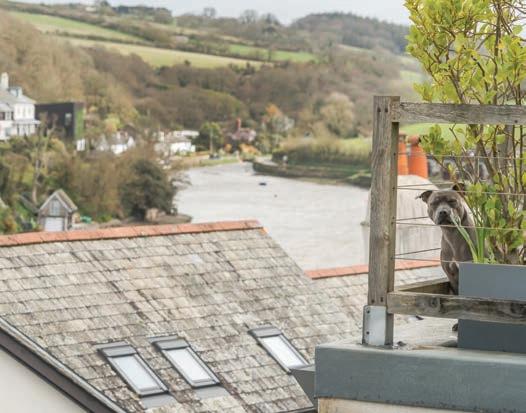
flooring, en-suite shower room again with marble flooring, and views over the estuary. Steps lead from this level to the lower ground floor, giving access to the integral double garage with tiled flooring; an exceptional asset to the property providing ample parking for two cars plus exceptionally generous amounts of storage for bikes, kayaks etc and gym area.
Light floods into the first floor, exposed floorboards, larch timbers and A-Frames, and whitewashed ceiling boards creating a Nordic feel. Two double bedrooms, one with a playful mezzanine area over, and a family bathroom complete this beautiful home.
The garden wraps around The Old Workshop in a mix of terraces and lawned areas. The incredibly generous composite deck surrounds the front and side of the property, enabling full enjoyment of outstanding estuary views and countryside beyond.
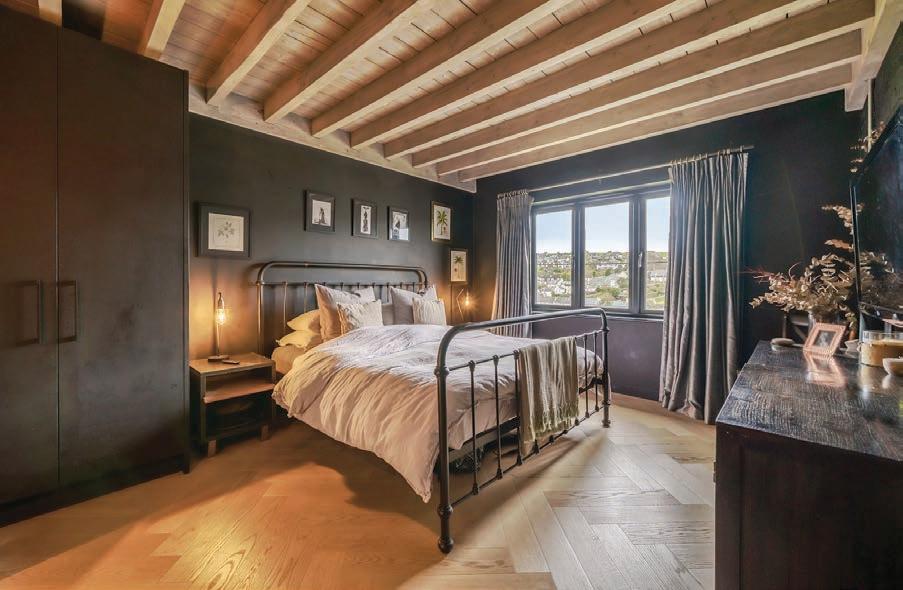
NOSS MAYO
4 bedrooms
3 bathrooms
2 reception rooms
EPC: B
GUIDE PRICE £1,250,000
NEWTON FERRERS 01752 873311

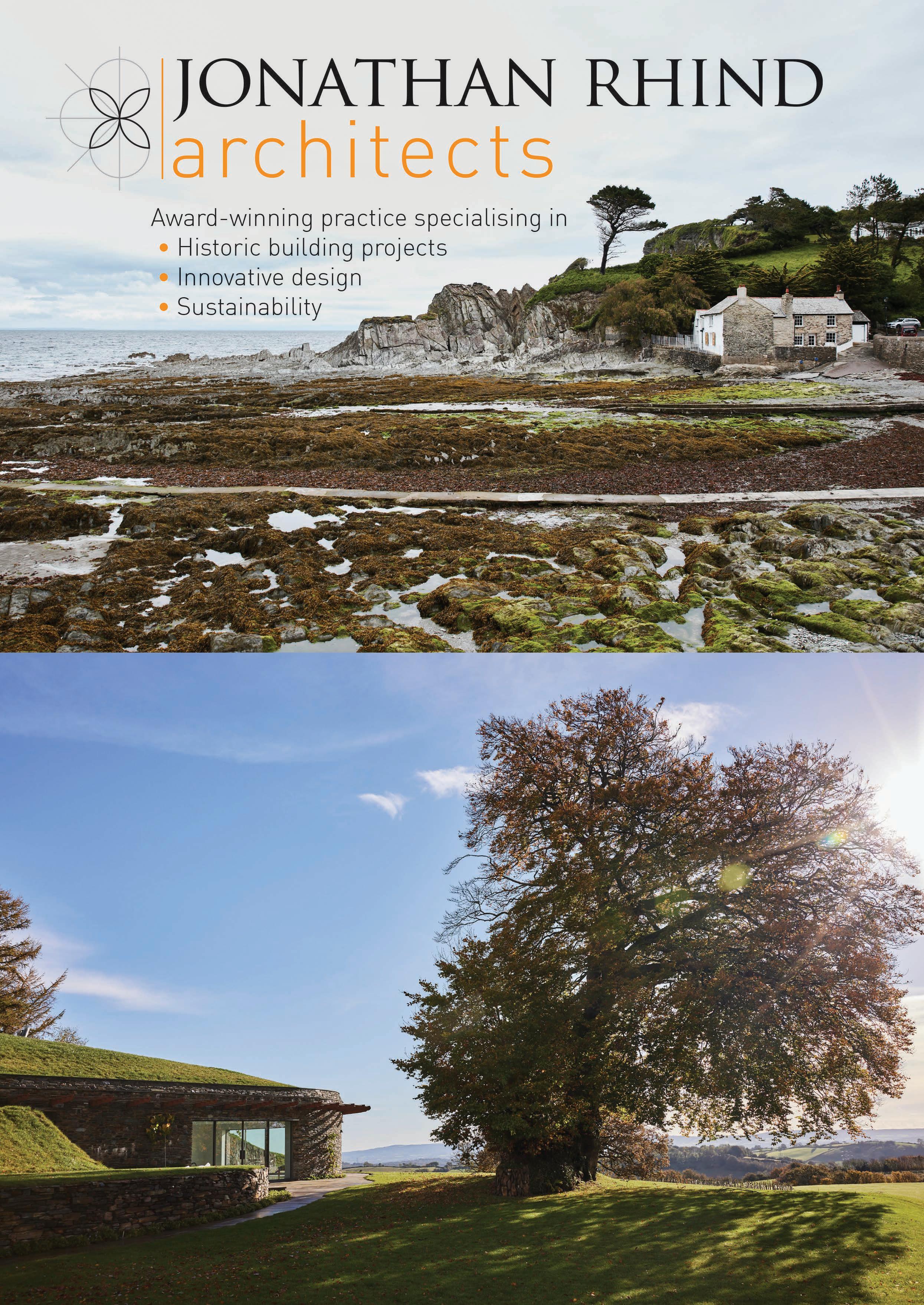
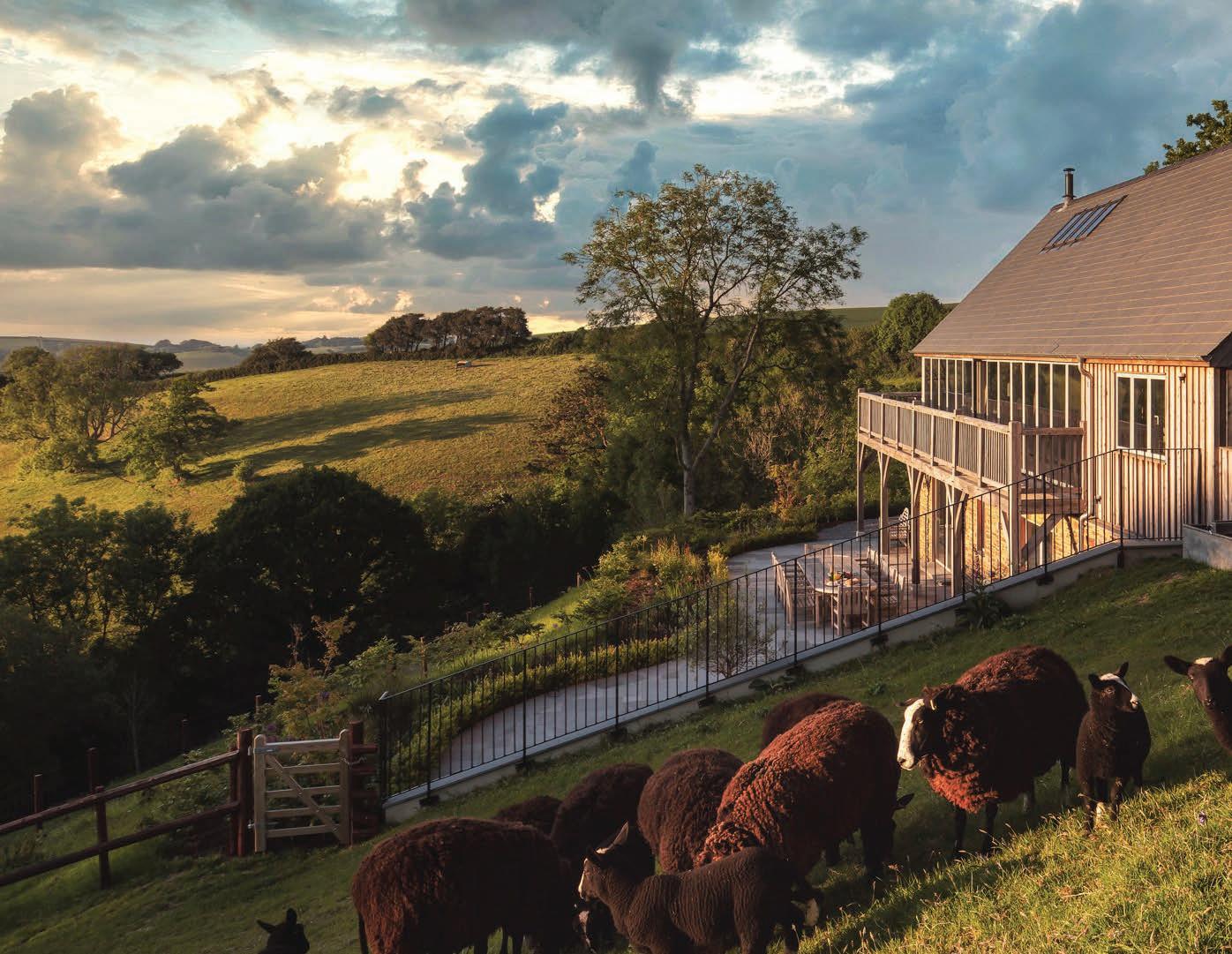

At Home magazine gets to know the expert team behind award-winning timber frame homes across the South West and beyond.

Carpenter Oak combines technical design, master craftsmanship and exquisite materials to create stunning spaces. ‘‘


With over 30 years of experience crafting timber frame homes, Carpenter Oak first specialised in restoring timber framed buildings in the 1980s.
As it became clear that people were interested in living in barn-type homes with impressive, vaulted ceilings and built-in beautiful green oak, the company began building timber framed buildings and homes – starting with Seagull House in Devon back in 1991.
Over three decades later, they have gone on to complete hundreds of projects - from garden buildings, extensions, boat houses, houses by the sea and bridges, as well as unique bespoke designs for historical replicas.
Pioneering the use of structural timber for sympathetic restoration and developing innovative techniques to lead the way in the timber framing industry, Carpenter Oak combines technical design, master craftsmanship and exquisite materials to create stunning spaces.
It is an exciting time for the Carpenter Oak team, having recently moved to a bigger Framing Yard site, now based in Buckfastleigh, South Devon. The move means opportunities to grow the team and take on more projects.
Taking great pride in creating timeless designs and with a growing collection of industry awards, what does Managing Director, Luke Copley-Wilkins think is the recipe to their success and the continued demand for timber frame designs?
“Our carpenters marry diligence and skill to deliver truly ambitious construction projects. It’s a highly versatile craft, with almost limitless design options.”
“The foundation of our skilled team is their extensive experience with traditional pegged mortice and tenon jointing techniques. Combining this with specialist knowledge in partnering timber with steelwork and other modern materials opens up endless possibilities for design and structure.”
Practicing skills rooted in tradition, the teams' projects have been featured on Channel 4’s Grand Designs, TV and film props, medieval war machine replicas and everything in between.
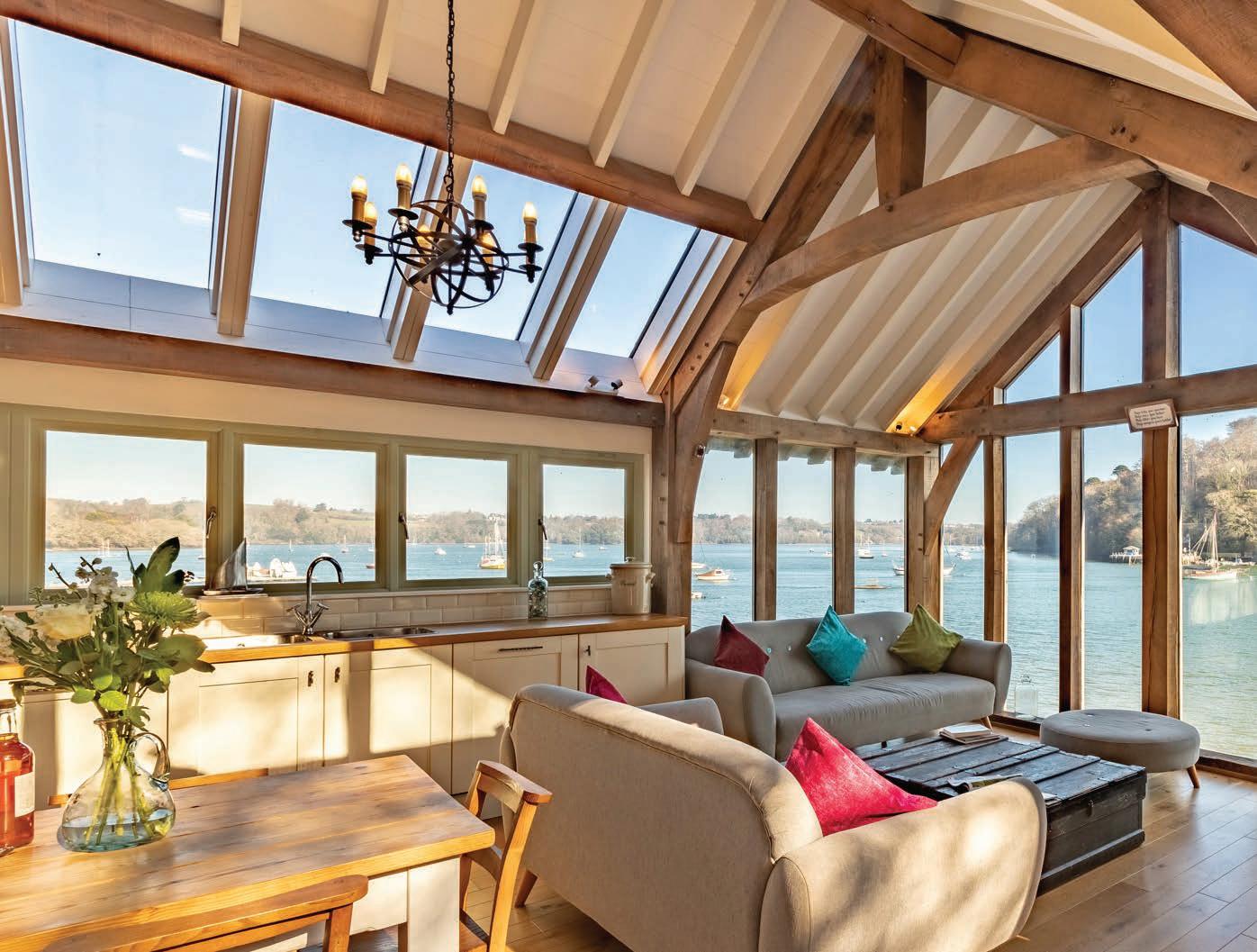
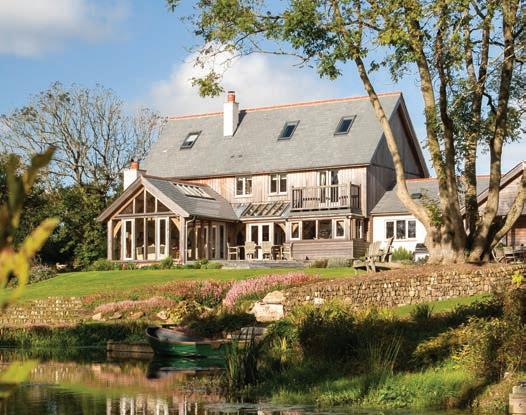

An employee-owned business, Luke firmly puts the team at the heart of their continued success.
“We’ve always been committed to creating a collaborative and creative working environment, which is such a key part in the story of Carpenter Oak. The company has come a long way from our early years when it started with four directors and a small team of carpenters.”
“The variety of projects we work across pushes us to harness the potential in both traditional and contemporary timber engineering and construction. At the heart of the success is our team, the people that create the amazing designs and stunning frames.”
“Back in 2017, we took the step to become an employee-owned business, as we felt the company ‘in the hands of many’ was particularly important within an ever-changing building industry. The investment of the team and vice versa the company’s investment in them is, we feel, crucial to the success of each project.”
“Over the last 35 years, Carpenter Oak has always steered away from a faceless corporate approach with our clients, so the move to employee ownership felt a natural step. In 2023, we went from being 10% employeeowned to 51%, which was a significant step forward for us.”
Whether you are planning on building a new build oak frame house, an oak frame extension, a log cabin, annex, oak framed garage, swimming pool, boathouse or outbuilding, Carpenter Oak can help you achieve your dream.
For more information, to arrange a visit to their Devon workshop and to view the latest set of upcoming events and workshops, visit www.carpenteroak.com.
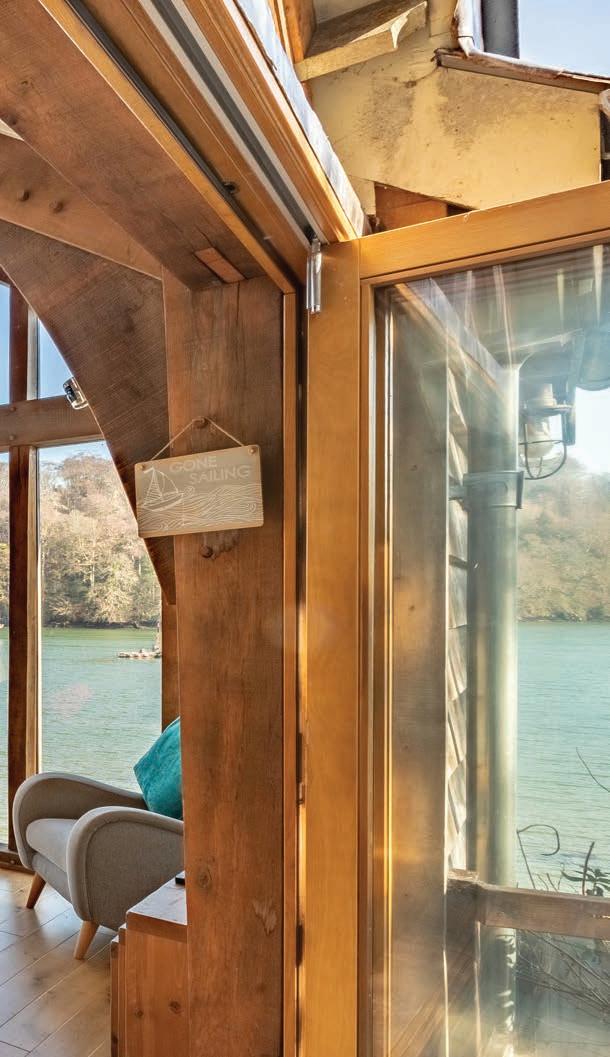
“Our carpenters marry diligence and skill to deliver truly ambitious construction projects. It’s a highly versatile craft, with almost limitless design options.” ‘‘

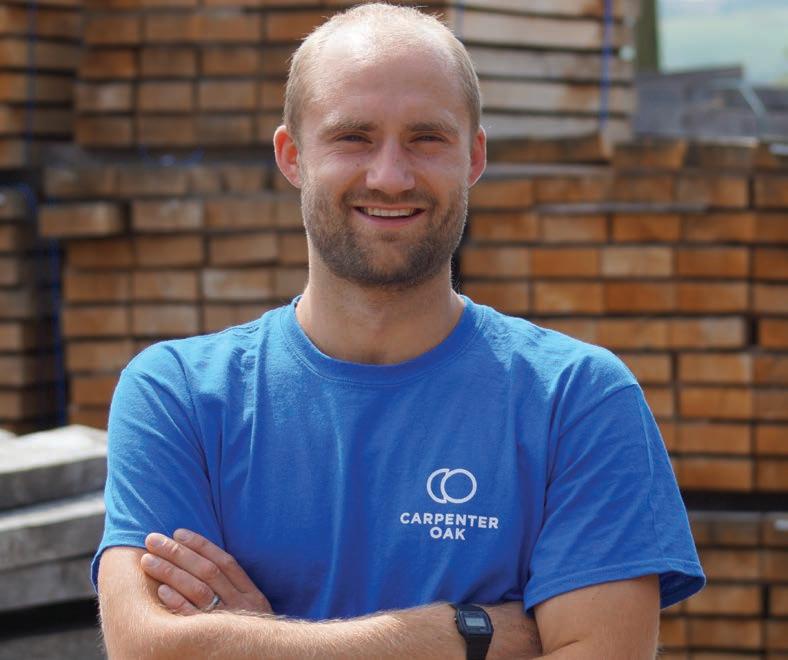
How have timber frame designs/builds changed or developed over the past 30 years?
“The style of oak frame buildings has changed over the years. The original type of truss used was a ‘cruck’ which is a grand, oak-heavy style, but for the past 15 years or so the types of truss styles available have increased a huge amount.
It’s now possible to have anything from a traditional church-like roof to something a lot more minimalist, or something very contemporary with steel connections on show.”
Why do you believe timber frame designs have stood the test of time?
“There are timber framed buildings across the world that are hundreds of years old, which speaks to their endurability, as well as why they feel traditional and lasting to us – exposed timber frames make beautiful homes.
No one is ever underwhelmed by a structural timber framed space. They add character to any new-built space immediately and can range in style from sleek and modern to homely and traditional. Timber frame design offers unparalleled potential for getting character and beauty into your home, extension, outbuilding, or other space.”
What are the key changes you feel have made an impact on oak frame design/build over the past 30 years?
“The key changes we have seen over the years has been a desire to build more eco-homes so for example homes which have a high airtightness rating, have double glazing as a standard, and very good insulation. All these elements are easy integrated with a structural timber frame.
We have also seen a desire for more light and airy spaces, and more room for glazing, so this has generally meant less timber is used in the frame, allowing for more windows, folding doors, skylights, etc.”
What’s next for the Carpenter Oak team?
“From the designers to carpenters and project managers, our reputation is built on the strengths in our team. As we look ahead to 2024 and beyond, the move to become 51% employee-owned - teamed with being an officially accredited Real Living Wage Employer - has made those foundations even stronger.”




Halcyon Barn has been beautifully refurbished with great flair and attention to detail.

Showcasing breathtaking views across neighbouring countryside and of particular note is a superb Carpenter Oak extension creating a lovely living room/dining room with a wood burner. A further reception room has views spilling over the garden - with patio doors and a wood burner of its own, it is a cosy space for hiding away with a book or a film on a Sunday afternoon. A bespoke kitchen with oak units sits conveniently between the two reception rooms. A guest bedroom and shower room are also on the ground floor, along with a useful conservatory study area. Upstairs are two double bedrooms with views heavy with countryside shades of green. A super Jack and Jill wet room/bathroom with bespoke fittings features.
Halcyon Barn sits in gardens of three quarters of an acre, with hard standing for cars and double gates lending an air of privacy. A large outbuilding serves as storage now, but could easily become a home office or garden room. The barn conversion offers a beautiful way of life in Stoke Gabriel, one of Devon’s most special and indeed prettiest villages. With the South Devon AONB, it sits on the easy bank of the River Dart and offers a quay, pontoon and a landing stage from which to enjoy the river and Mill Pool. For sailors, it gives easy access to the sea.
‘‘
The
barn conversion offers a beautiful way of life in Stoke Gabriel, one of Devon’s most special and indeed prettiest villages.

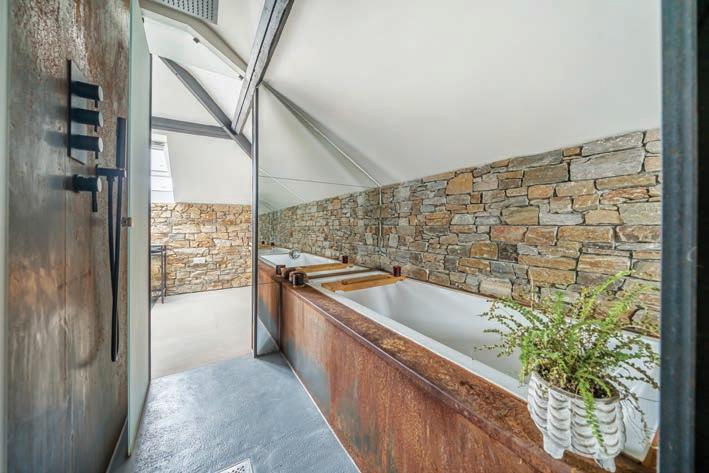
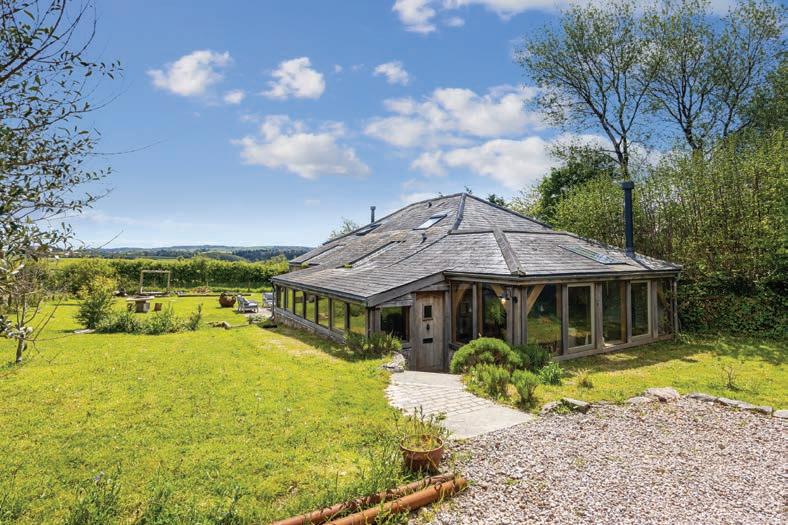
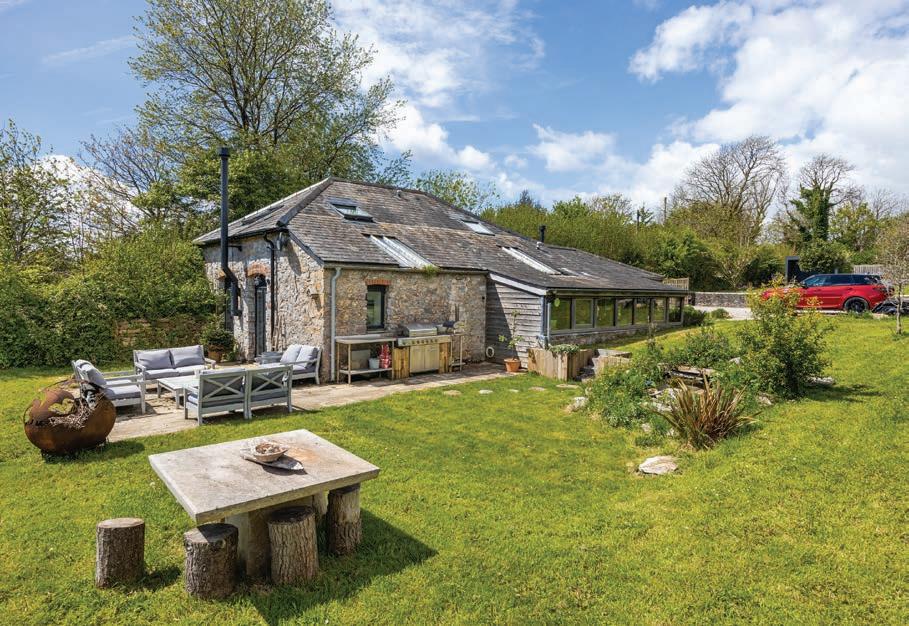



Plymouth may have put down its roots over the course of a long maritime history, but the Ocean City is making huge strides towards being a weekend stay destination of the future.

Often overlooked and at times undervalued until recently, its tides are changing. With the beaches of the South Hams to the east, Cornwall just over the Tamar to the west, and the sweeping greens of Dartmoor National Park above, this gem of a city is ready to step out of the shadows and into its own light as one of the UK’s best.
Plymouth is equal parts historic and innovative, something that reflects in the plethora of ways to spend a day here. The Barbican is a great place to start. With more than 100 listed buildings lining the highest concentration of cobbled street anywhere in the UK, the charming old port is still reminiscent of years long passed. It could tell a thousand tales of merchants and mariners, pirates and pilgrims, not least that of the Pilgrim Fathers, who set off from the Barbican’s Mayflower Steps in 1620 bound for the ‘New World’ - or what would become the United States of America.
Plymouth Gin Distillery is one of many businesses making its home on the Barbican, making and selling gin here in the same way it has since the late 18th century, earning it the title of the oldest working gin distillery in England. Though not quite as time-served, cycle shop and cafe Rockets and Rascal is another longtime Barbican resident. The team’s enthusiasm for two-wheeled steeds knows no bounds and they are perfectly placed to offer advice on Devon’s cycle routes, which are some of the best in the UK.
Finding peace amidst the hustle and bustle of city life isn’t easy, but the Elizabethan Gardens nestled in the Barbican neighbourhood promise a calming escape. Delightfully unheard of to many, they make for a scenic setting for time with your book or your thoughts.


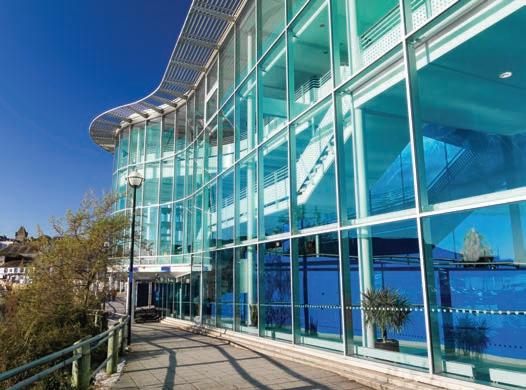
Just a little further along Plymouth Waterfront is the Hoe. It is from here that Smeaton’s Tower casts its gaze across Plymouth Sound and the city, and where Sir Francis Drake famously finished his game of bowls before setting about defeating the Spanish Armada. Bowls games are still a regular occurrence and the green space is a gathering place with a view for all ages. It is here you will find the iconic Tinside Lido, a Grade II listed, Art Deco, salt water swimming pool that still looks much like it did when built in 1935. Widely considered one of the best outdoor pools in Europe, the lido attracts swimmers and sunbathers all year round.
A fabulous way to take in both the Hoe and the Barbican is via the South West Coast Path, which passes through each on its way to Royal William Yard. Comprising the largest collection of Grade I listed military buildings in Europe, the Yard served as the major victualling depot of the Royal Navy and an important adjunct to Devonport Dockyard. Recent years have seen it transformed into one of Plymouth’s most desirable addresses, its warehouse apartments housing the city’s professionals, and its once unloved buildings now home to a thriving coworking space, a boujie Everyman cinema, art studios and galleries, indie shops and a roster of dining options that is ever growing. South West SUP provides paddle board hire from within the Yard’s storied stone walls, while swims at nearby tidal pool, Firestone Bay, see a dedicated community of dippers gather come rain or shine. A new ferry also links Royal William Yard with the Barbican, as well as Mount Edgcumbe, home to the pretty Mount Edgcumbe House & Country Park and its National Camellia collection.
You shouldn’t save the National Marine Aquarium for a rainy day but it certainly suits the purpose. The largest marine aquarium in the UK has the UK’s deepest tank and its largest single viewing panel through which to watch some of the 4,000 animals found there. More than 40 shark species, stingrays, octopuses, jellyfish and two turtles are among them, with a whole underwater world on display. All proceeds from entry to the National Marine Aquarium go towards the Ocean Conservation Trust, so you will be doing your bit to help the real oceans when you visit too.
If a weekend calls for a slow meander out of the city, the Mussel Inn in Down Thomas will reward your 20 minute or so drive with the friendliest of welcomes. The pub has become a local hero with its beautiful location and a good sized park for the kids to burn off some energy while the grown-ups enjoy a beer post-coastal walk.
Back in town, the Lord High Admiral quenches thirsts with beers and ales from local breweries, as well as sustainable wines and a commendable cocktail list. The pub on Stonehouse Street has a quiz or live music most Thursdays. With a wood burner in winter and lively outdoor space when the sun shines, it is a year-round winner.
Another local favourite is the Gipsy Moth, named after one of the world’s most famous yachts, the Gipsy Moth IV, on which Sir Francis Chichester set sail from Plymouth in 1966 to sail single-handedly around the world. Set on Plymouth

Hoe, overlooking Smeaton’s Tower, its three floors are loaded with atmosphere and nods to its nautical heritage.
The sunshine yellow Clovelly Bay Inn sits in a historic fishing village location that puts it close to Mountbatten’s watersports, South West Coast Path hikes, and a short water taxi or bus from the Barbican. Such a location, combined with a passion for real ales and local farm ciders, has made the CAMRA pub popular with families and dog walkers. Its ‘Pie and Ale’ festival attracts a faithful crowd.
Finally, swap the usual salted peanuts for more elevated bar snacks at B-Bar, where noodles, live music and comedy, and beer, combine. This quirky spot inside the Barbican Theatre, on the historic quayside, has something on almost every night of the week and is a more unique alternative to the more traditional pubs in town.

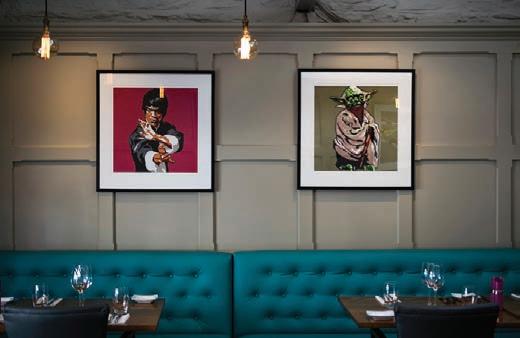
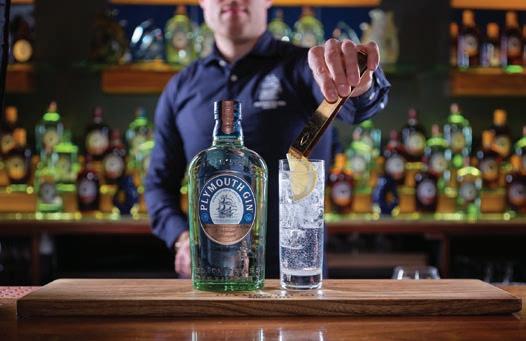
Plymouth has become a force to be reckoned with in culinary terms, gathering momentum as a foodie centre of South Devon and whetting appetites aplenty with its menu of street food, great bakes, visionary vegan fare and Michelin-tipped fine dining. Whether you are planning to indulge or need a quick but uncompromising light bite, the city has all a rumbling tum could desire and its new openings just keep on coming.
It’s impossible to mention light bites in Plymouth without a nod to The Hutong Bagel Co on Cremyll Street, just outside Royal William Yard. Founded by Plymothians Jack Harman, wife Emma and brother George, the cafe shot straight into the hearts of the city’s foodies when it launched its soft, doughy bagels piled with an imaginative and hearty portion of toppings. Specials come and go but the Hutong house menu stays deliciously consistent - think halloumi with red pepper jam and sesame mayo, or salt beef with sauerkraut and mustard mayo. They’re as good as any New York bagel you’ve ever crossed paths with.
There are few simple pleasures in life quite like a Saturday morning walk by the sea with a flat white and a pastry for company. Those purveyed behind the yellow door of the Almond Thief will cross your mind long after the final flake has left the paper bag. A second offshoot for the bakery, with a popular sibling long delighting pastry aficionados in Totnes, the Almond Thief on Looe Street delivers the undisputed best croissant in town. Unfortunately the orange and cardamom bun is exceptional too, so you’ll need to give both a go and report back.
The South West has been slow to hop upon the food hall bandwagon, but Plymouth is leading a charge. The unassuming-looking Plymouth Market on Cornwall Street has undergone a tasty regeneration into a go-to culinary destination and now boasts a global menu of Japanese sushi, Mauritian and Nepalese dishes, vegan brunch and European street food, all crafted by local vendors keen to delight the city’s flourishing appetite for new flavours.
Another equally delicious street food favourite is Supha’s on Sutton Harbour, where harbour views meet Thai, Vietnamese, Laos, Myanmar and Malay influences to full foodie effect. With an extensive vegetarian and vegan menu, it is an excellent option for families and groups with big appetites. Similarly fabulous for vegans (some say the best in the city…) is family-run Cosmic Kitchen on Palace Street, where sisters Gabriela and Lucia cook to an ethos of ‘good mood food’. One salad here is enough to see your Tupperware left gathering dust for all eternity.

Plymouth has flown under the fine dining radar for a long while, but a number of nods by the Michelin guide have seen the city take a seat at the table. One-starred Àclèaf at Boringdon Hall Hotel sees people book stays for the food alone, while Fletchers and the Barbican Kitchen have each deservedly seen mentions in the most recent Michelin guides. All share a penchant for ultra-local produce like Devon crab and Dartmoor lamb, plus unmatched talent in the kitchen honed over many years in the business.

One-starred Àclèaf at Boringdon Hall Hotel sees people book stays for the food alone.




In the heart of the picturesque coastal village of Stoke Fleming, just a short stroll from Blackpool Sands (named best beach in the UK by Condé Nast Traveller this spring) lies Farwell House – a stunning five-bedroom Grade II Listed former rectory.
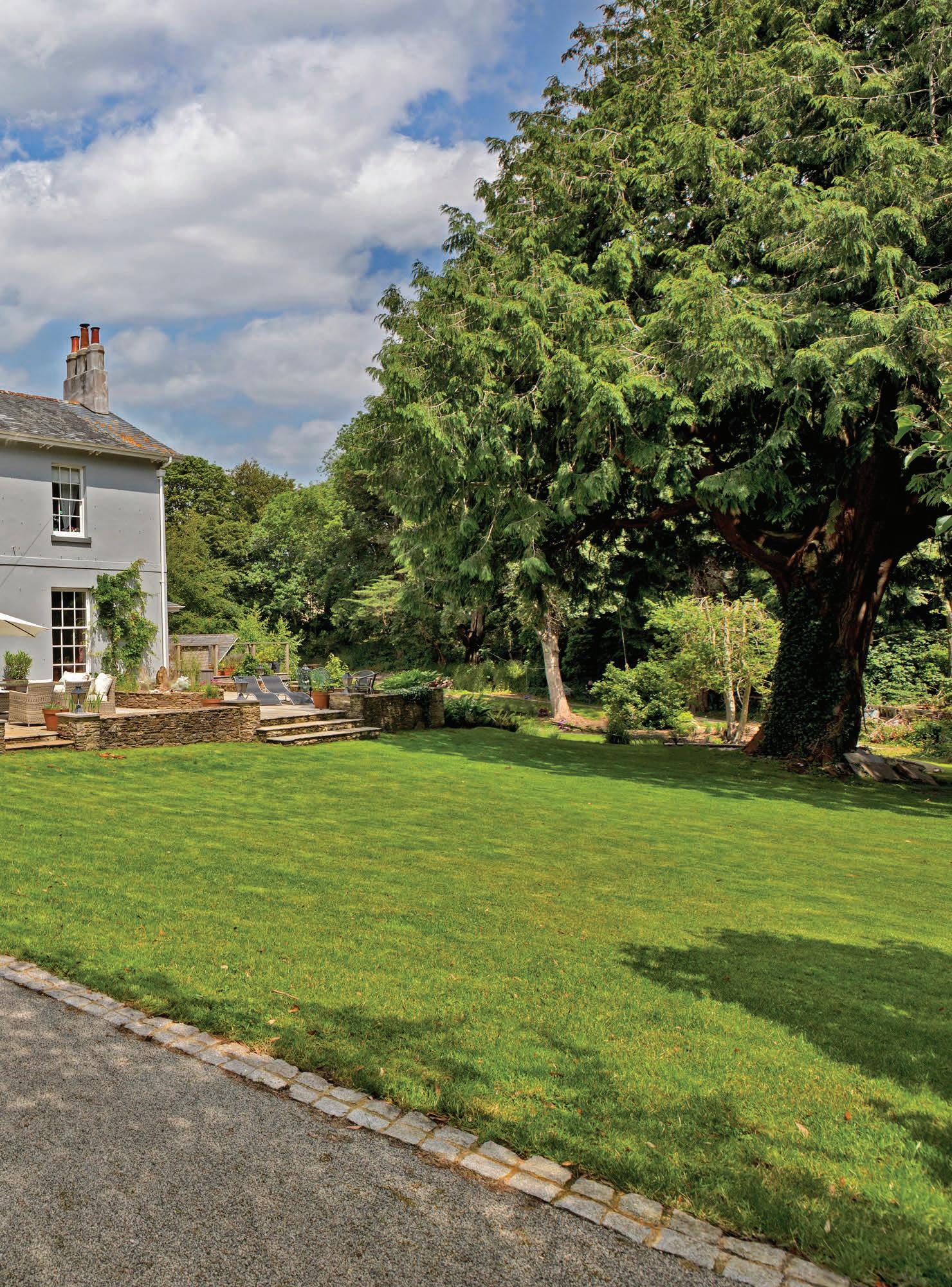

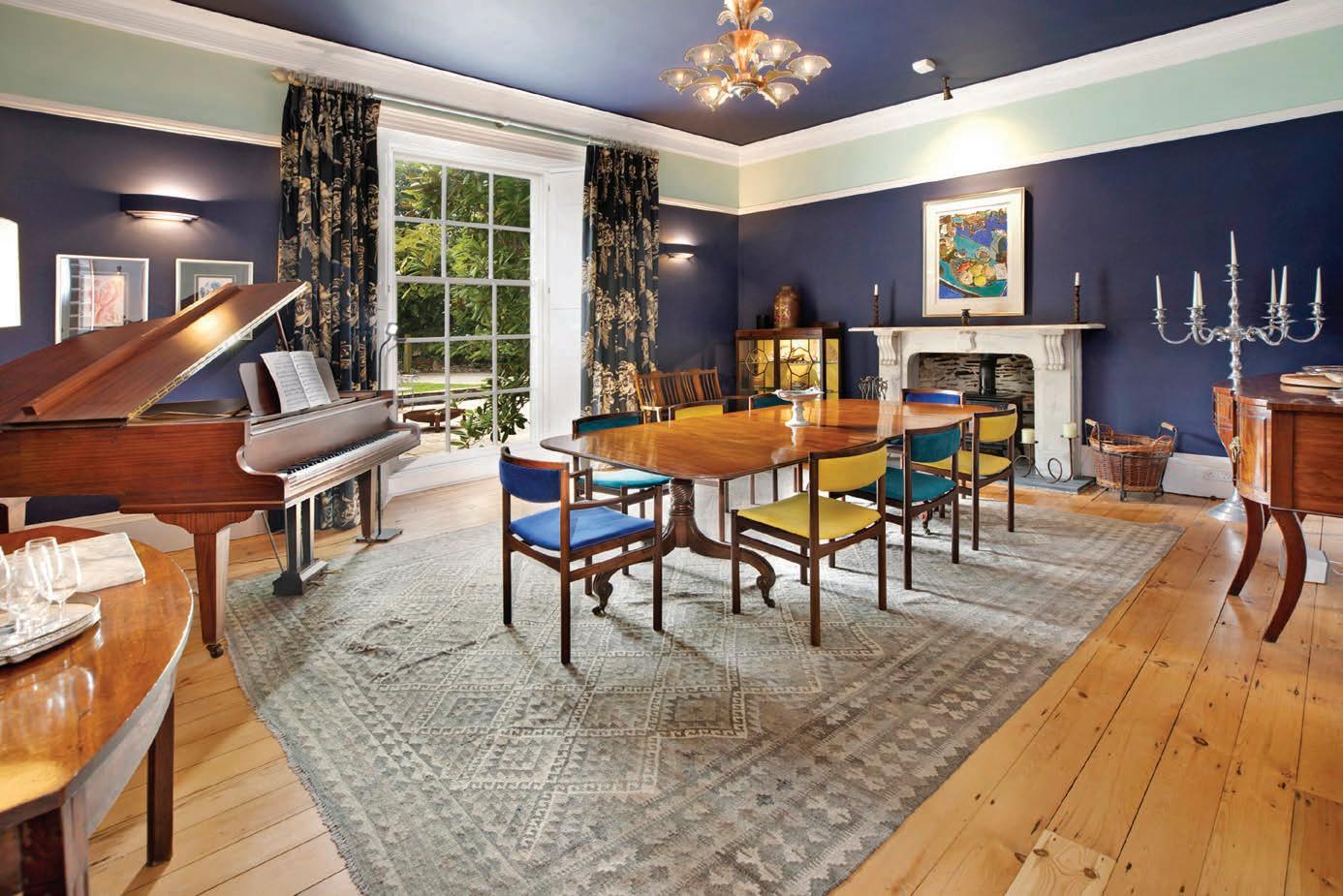
This meticulously restored property, complete with a self-contained threebedroom wing and an adjoining three-bedroom cottage, is the epitome of refined living with all the beauty of a life by the sea.
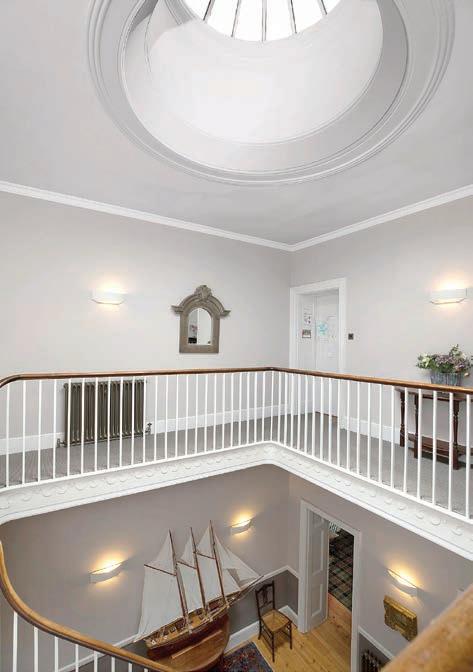
Constructed in 1834 with a later Victorian extension, Farwell House is a fusion of period features and contemporary appeal. The current owners have undertaken a sensitive restoration, preserving original elements such as marble fireplaces, Georgian shutters, and a grand double staircase, while integrating modern comforts like underfloor heating and solar panels.
The entrance sets a gracious tone, with traditional black and white floor tiles leading to a grand hallway lit by a domed lantern window. The reception rooms, all south-facing with tall sash windows, include a formal drawing room that opens onto a sun-trap terrace, a stately dining room, and a library/sitting room with its own unique private club ambiance - concealed cocktail cabinet and all.
At the heart of this home is the beautifully designed kitchen. Copper cladded facings, a bespoke central island, and full-size sliding doors create a seamless flow to the outdoor summer kitchen, equipped with a BBQ and a Bushman wood-fired oven. The kitchen boasts high-end appliances, including a Quooker tap, Fisher & Paykel fridge/freezer, LPG gas hob, induction hob, and a five-oven Aga, making it as functional as it is stylish.
Upstairs, reached via the double imperial staircase, is a peaceful hideaway with good sized bedrooms. The master bedroom features vast windows with fabulous views, a dressing room with good storage, and a retro inspired bathroom showcasing a re-purposed 1950s pink suite. Additional bedrooms are equally inviting, with one offering an en-suite shower room, while others share a family bathroom with Jack and Jill doors and an extra shower room.


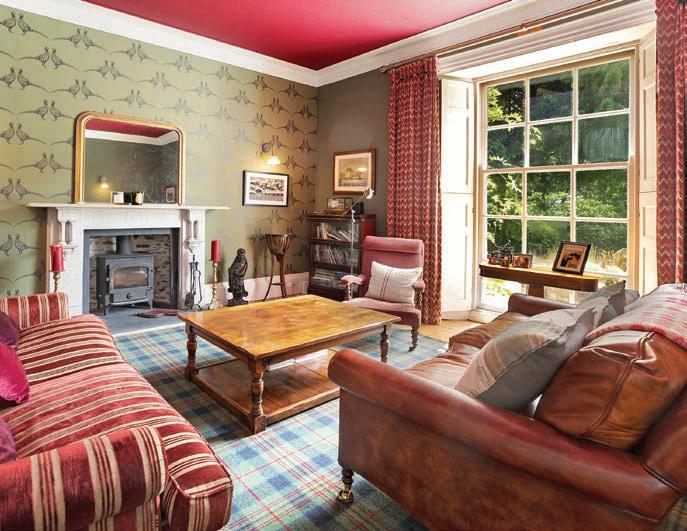
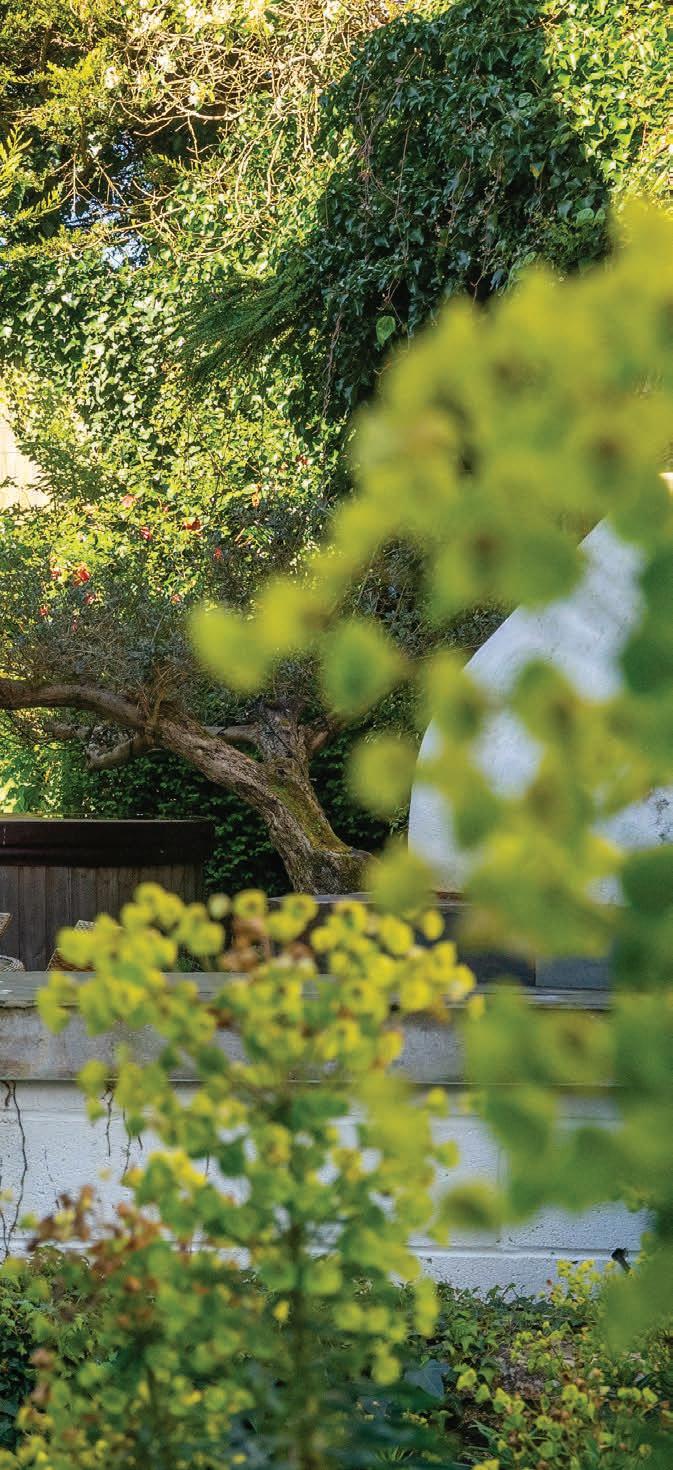

The grounds of Farwell House are a testament to the owners' dedication and vision. A south-facing paved terrace encourages al fresco dining at every opportunity, with views of meticulously maintained formal gardens over dinner.
STOKE FLEMING
5 bedrooms
4 bathrooms
3 reception rooms
EPC: Exempt GUIDE PRICE £2,750,000
DARTMOUTH 01803 839190
The East Wing, seamlessly integrated yet distinct, offers versatile living. This self-contained space includes an open-plan kitchen, dining, and living area with high ceilings and a sleek copper-framed extension leading to a spacious decked terrace. Upstairs, three bedrooms include a master with an en-suite shower room, plus a stylish family bathroom. East Farwell benefits from its own driveway, a double garage, and ample parking.
The charming Farwell Cottage, a 400-year-old Devon longhouse, provides a cosy and independent living space. Featuring a double-aspect sitting room with a log-burning stove, a dining area with garden views, and a recently updated kitchen, it has a warmth and character of its own. The master bedroom offers tranquillity, while two interlinked single bedrooms and a family bathroom mean space for everyone. There is also a laundry room and a versatile storeroom. Outside, a secluded courtyard garden and dedicated parking add to the cottage's appeal.
The grounds of Farwell House are a testament to the owners' dedication and vision. A south-facing paved terrace encourages al fresco dining at every opportunity, with views of meticulously maintained formal gardens over dinner. Beyond this, the estate features a tranquil pond, a productive vegetable garden, fruit trees, and a serene wooded area. A courtyard garden, accessible from the kitchen, boasts a summer kitchen with a BBQ and Bushman wood-fired oven, and a hot tub, creating a private haven for relaxation and entertainment.
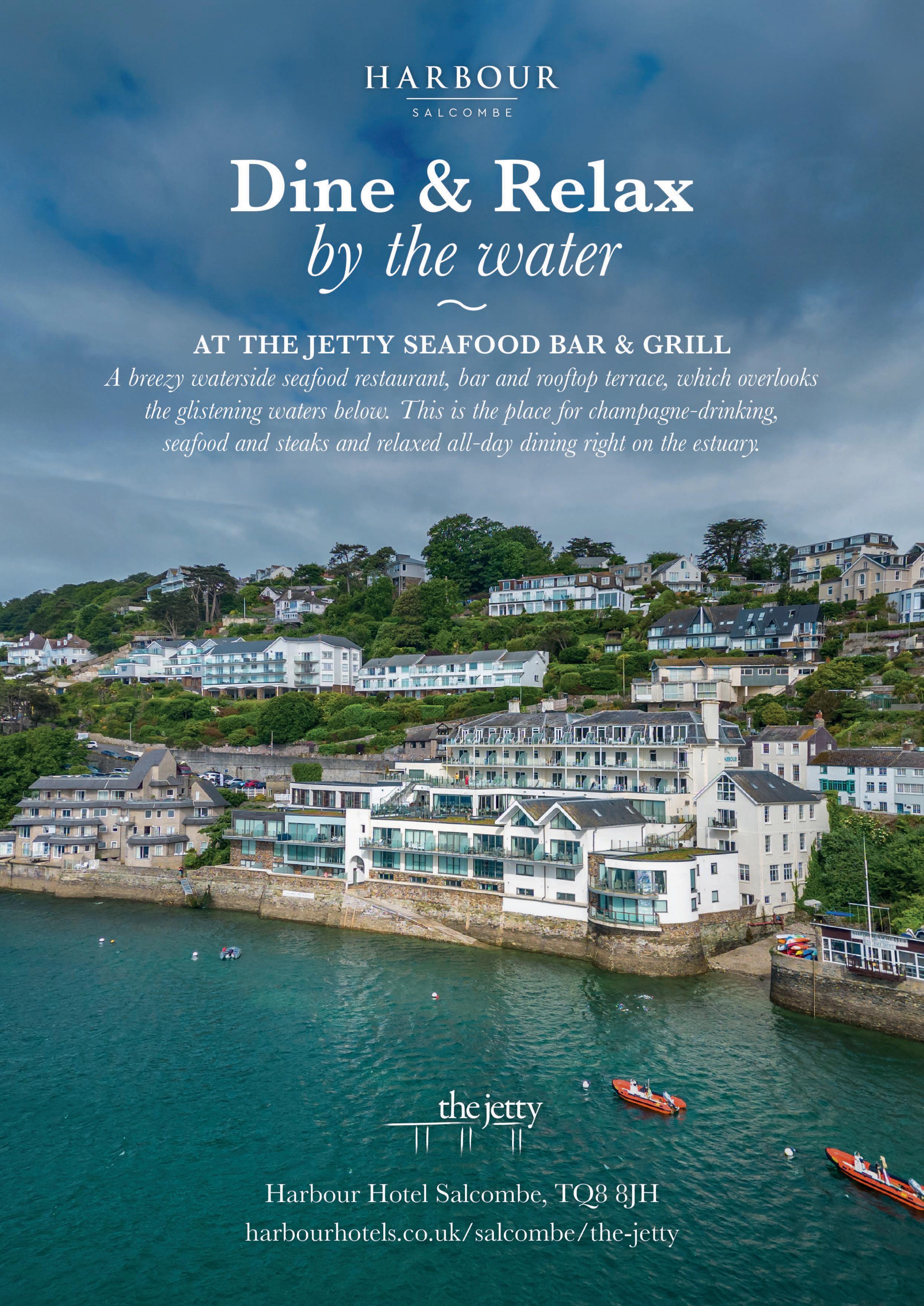

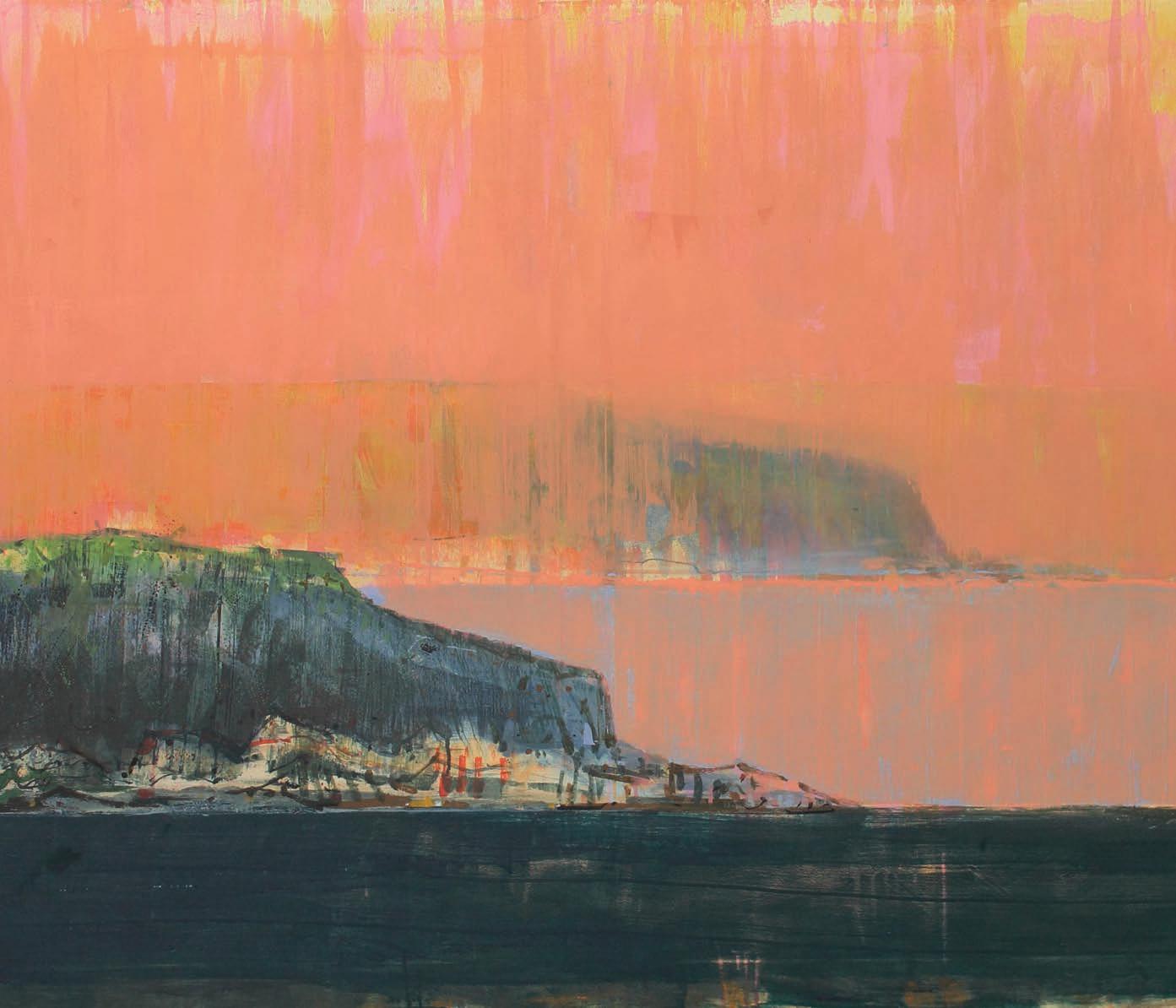
Home is where the art is and these local galleries house some of the most exceptional collections in the country.
Velarde opened to much acclaim from the British and international art world in 2023, and has gone on to become a stand-out gallery in the South West. The once dilapidated building on Fore Street has been transformed into an immaculate 1,400 square foot exhibition space, hosting some of the most exceptional talents in painting, sculpture, photography and contemporary craft from across the UK and Europe.
Velarde’s magical walled garden is a sun trap bristling with pieces by eminent sculptors, and is another reason to put the gallery on your summer must-see list.

How many art galleries can claim to have a full-size woolly mammoth in its collection? Such is just one highlight at The Box: Plymouth’s award-winning museum, art gallery and archive.
Reopened in 2020 after extensive refurbishment, the attraction in the very heart of Plymouth covers archeology, natural history, fine art, photography and moving image, and maritime history in its extensive collections. It received a special commendation in the 2022 European Museum of the Year awards and is (astoundingly!) free to visit.
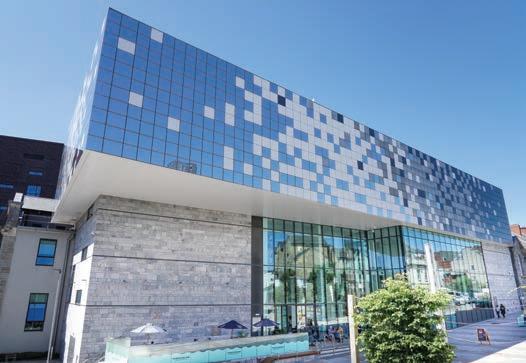



Few fine art galleries offer as friendly a welcome as the Brownston Gallery.

Few fine art galleries offer as friendly a welcome as the Brownston Gallery. Director Catherine Gillen brings together both established and emerging artists with styles ranging from abstract to landscape, psychedelic to portraiture.
Catherine’s own love of the arts and her eagerness to share it with those looking to build their own collection is contagious, and a constantly changing programme of exhibitions means a visit here is rarely without temptation. A secret sculpture garden promises a peaceful hideaway on Modbury’s bustling high street too.



The Drang Gallery have been successfully trading for over 15 years across the South West and over 10 years in Salcombe. They have a global network of galleries to source from and their artworks are in many major private and corporate collections.



The Drang Gallery has come to be known as the bastion of contemporary art in the South West, with names like Banksy, Tracy Emin, David Hockney and David Shrigley in its stable of blue-chip artists. A long relationship with Damien Hirst also sees significant works of his grace the gallery’s white walls.
Despite its coastal location - Drang Gallery in Salcombe is one of four in Devon and Cornwall – collections here see a conscious lack of seascapes, with a focus instead on more energetic pieces from artists that have shaped the world’s contemporary art scene over many years.






A fine example of a magnificent Grade I Listed Devon Barton, Leigh Barton dates back to 1120 and has an abundance of sympathetically preserved features. It is set in acres of beautifully curated, mature gardens and grounds in the rural South Hams.
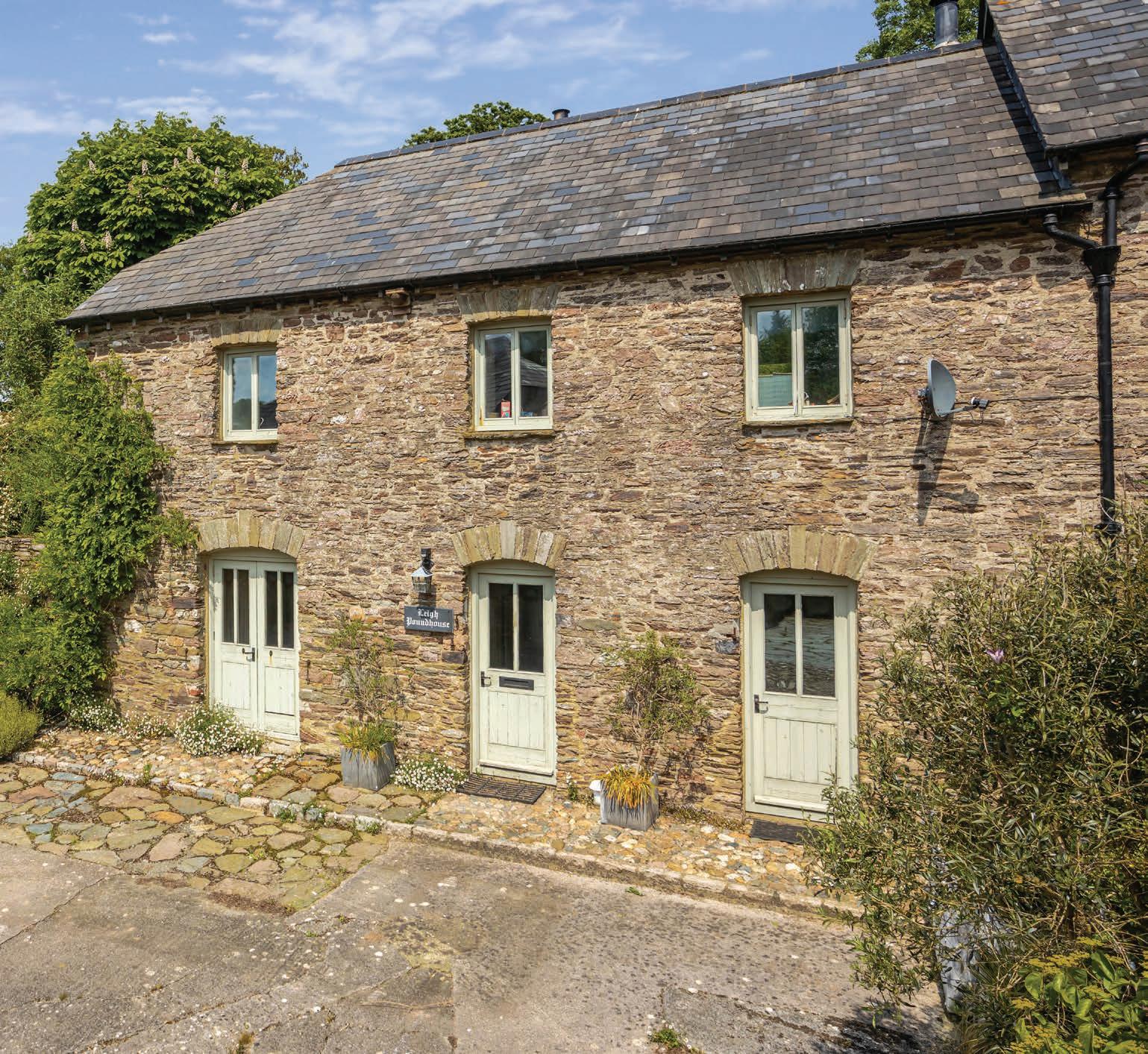
Nestled in a scenic and sheltered valley between Kingsbridge and the Avon Valley, Leigh Barton sits tranquilly in an Area of Outstanding Natural Beauty. Steeped in history, this medieval freeholding farmhouse was formally within the lands of Buckfast Abbey until the dissolution of the monasteries. The set of medieval buildings, that include an imposing gatehouse, may once have formed a defended farmstead. The location and size of the complex also excitingly suggests that it served in medieval times to house pilgrims journeying from Buckfast to Santiago de Compostela in Northern Spain, still a notable walking route.
Leigh Barton is now a wonderful home, having been restored over many years by both the English Heritage and its previous and current owners. Thought to date back to the Saxon times, the main house is believed to be dated around the 1120s, while later additions such as the standalone gatehouse date from around 1450-1475. The property really is unique in its endless history and storied past.
The late medieval gatehouse was likely constructed as part of the gentrification when the Leigh family enlarged the house and added the two ranges, which provided high quality lodgings in their time. The gatehouse is incorporated into a high, defensive curtain wall. The wall may never
Leigh
Barton is now a wonderful home, having been restored over many years by both the English Heritage and its previous and current owners.
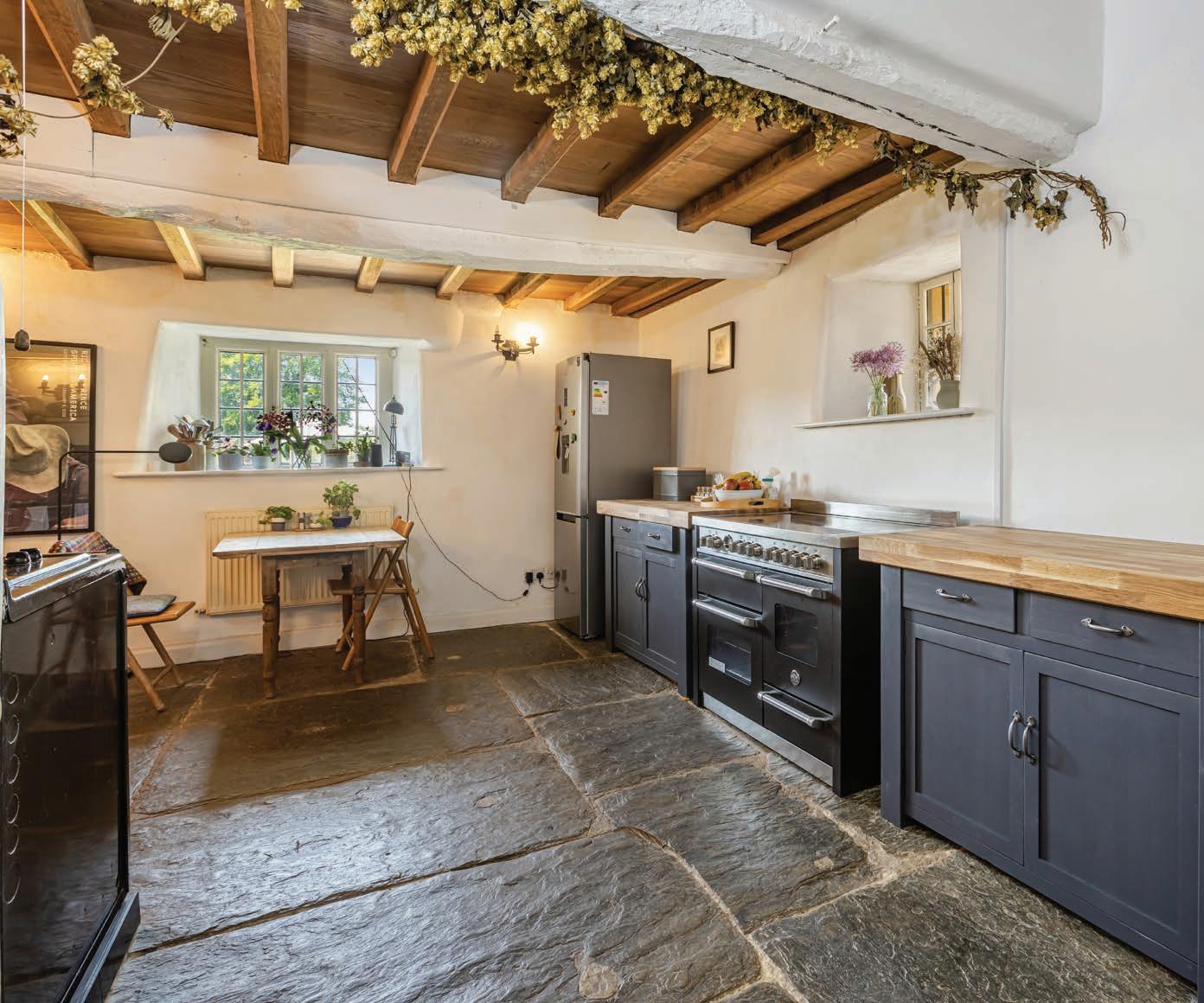
have been completed, as no trace of it has been found beyond its present ends – which today provide an imposing and private entrance into the farmstead. In 1974, the site was taken into guardianship by the Department of the Environment who subsequently passed it on to English Heritage. They painstakingly restored the fabric of the house, the Gatehouse and the Ranges, but also recreated it as such that it could again be inhabited as a home. Nowadays, with an abundance of original medieval and ecclesiastical features including beams and timbers, flagstone floors running through the ground floor, ancient doors and mullion windows, Cinquefoil window openings and church style roofs, it is possibly one of the finest examples of inhabited medieval architecture in private hands. As soon as you step through the substantial front door of Leigh House, it is apparent that attention to detail and great care has been taken to preserve moments in time. The through passage plan includes a traditional farmhouse kitchen with oil fired Aga, separate range cooker, and flagstone floor leading into a utility/ boot room and cloakroom, which in turn runs into the amazing Ranges storerooms and workshop areas.
On the opposite side of the entrance hall, a spacious drawing room, dining room, wet room and study area with stable door to the courtyard have a plethora of original features. A particularly fine stone spiral staircase leads from the drawing room to the first floor, as does a second staircase from the entrance hall.
Upstairs, four characterful bedrooms and an adaptable dressing room/fifth bedroom brim with period features like exposed beams, feature fireplaces with large stone lintels, and lovely window seats. A comfortable ensuite off of the master bedroom with roll top bath and separate shower is a peaceful escape from the hustle and bustle of a family home, with a further ensuite shower room and cloakroom ensuite in the third and fourth bedrooms.

It is possibly one of the finest examples of inhabited medieval architecture in private hands.

As soon as you step through the substantial front door of Leigh House, it is apparent that attention to detail and great care has been taken to preserve moments in time. ‘‘

Outside, the architectural and historical features continue - the Ranges, which consist of an east and west chamber, are accessed either from steps to a galleried walkway or from the first floor of the main house. This collection of adaptable rooms incorporating many fine, highly photogenic and exciting original features could offer a place for entertaining, dining or storage.
Also within the grounds are two Grade II listed cottages, Leigh Barn and Leigh Poundhouse. As with the main house, these have been sympathetically restored to provide self-contained guest accommodation with kitchens, living rooms and two bedrooms each. There is parking for both and each has its own garden to enjoy the countryside. On gardens, those at Leigh Barton are a particular delight. They include an area following monastic principles of design which incorporate plants known to be in cultivation in England before the dissolution of the monasteries. The grounds are planted with drifts of specimen trees, roses, shrubs, and lots of water-loving plants in the stream and lake. It forms a haven for wildlife. A charming greenhouse, shed and raised beds for the kitchen garden are ideal for gardening enthusiasts – one could easily while away whole days pottering in a place like this.
CHURCHSTOW
4 bedrooms
3 bathrooms
2 reception rooms
EPC: F
GUIDE PRICE £2,000,000
KINGSBRIDGE 01548 857588




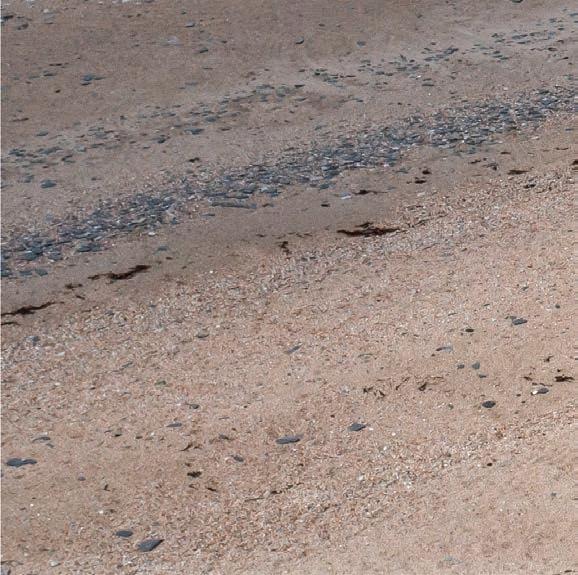









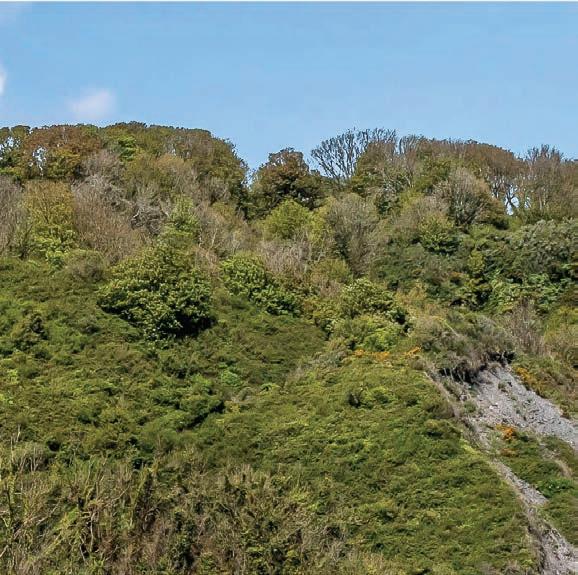
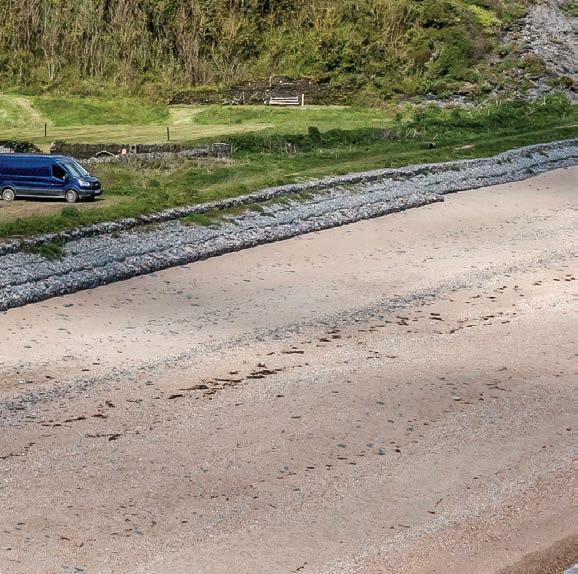





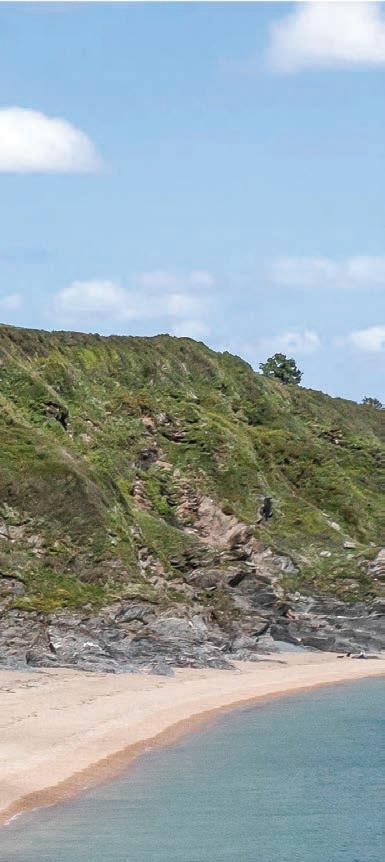


Houses by the beach do not come much serene than 1 Sunnydale. Imagine opening the garden gate to nothing but beach, windswept and wild in winter and a slice of paradise come summer.
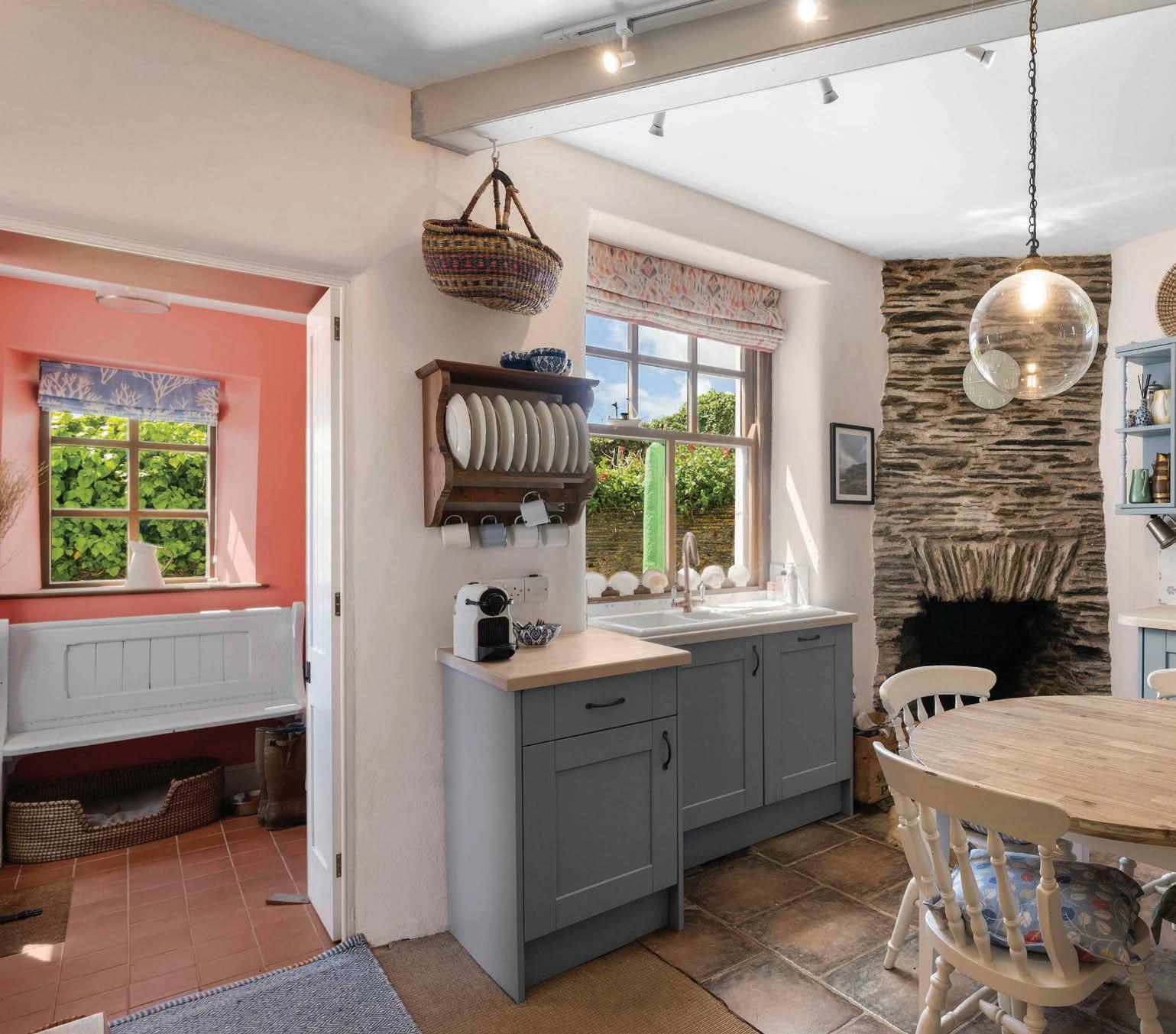
1Sunnydale sits at the very end of a beach that is peaceful even on the busiest of days. As remote as beach abodes come, it is reached by a gentle walk along the South West Coast Path. The same path spills into the surrounding countryside, delving into coves and over clifftops, making it difficult to want to spend even a minute indoors. But when you are finished exploring, this pretty property just 200 years from the water’s edge welcomes you in with all the trappings of a modern home by the sea.
The house by the sea spans three floors. There is a sitting room with feature fireplace, built-in storage cupboard and French doors opening to the patio and a garden only footsteps away from the mile-long shingle beach. You will find a modern fitted kitchen/dining room with integrated appliances and a superb stone open fire on the ground floor. The first-floor houses two double bedrooms, a family bathroom and separate WC. On the second floor there are two attic rooms with skylights and built-in storage. Outside is parking and a large garage, connected to all services and with the potential to be turned into additional accommodation subject to the relevant planning permissions. A lovely, large, lawned garden with patio seating area, making this the ideal place to sit and take in the everchanging sea views.

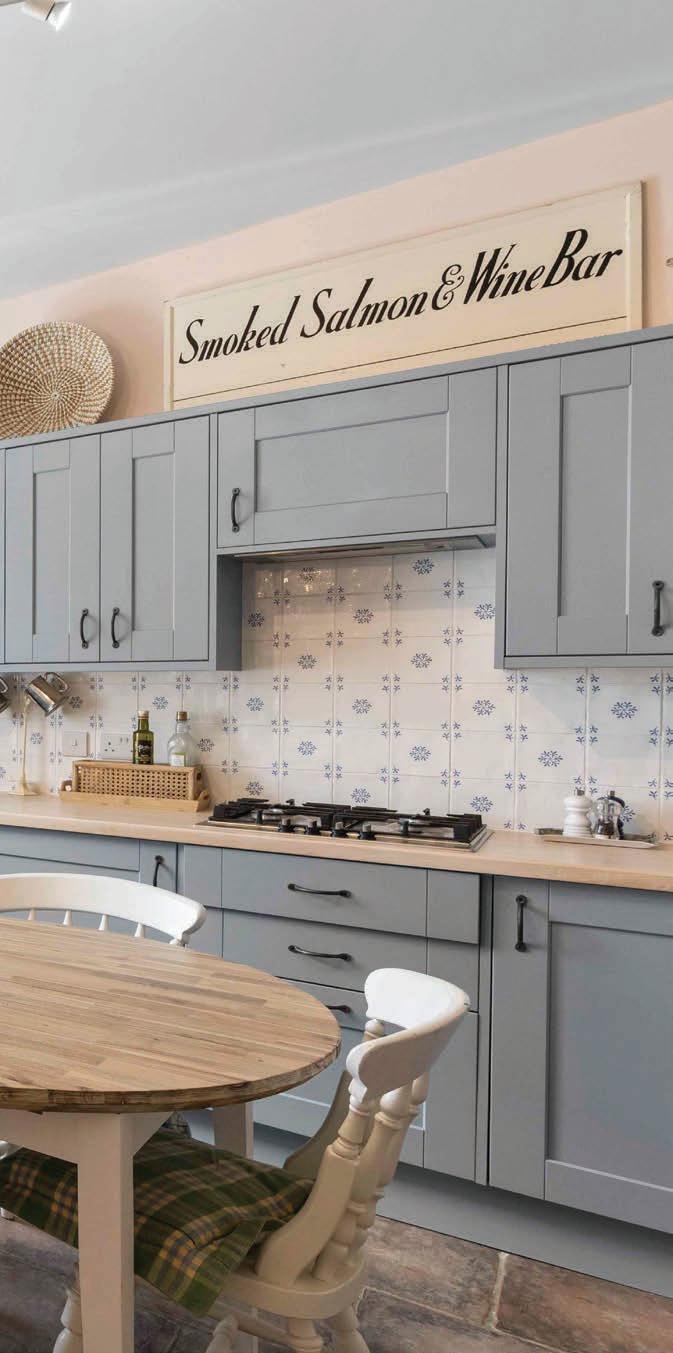
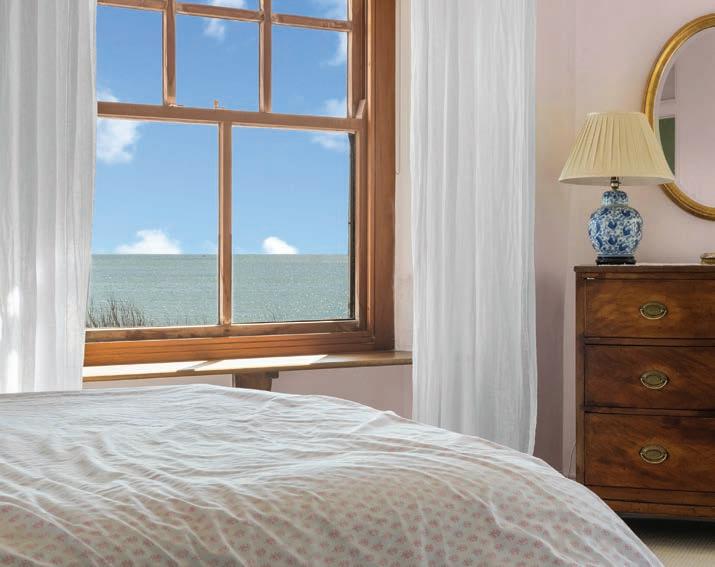
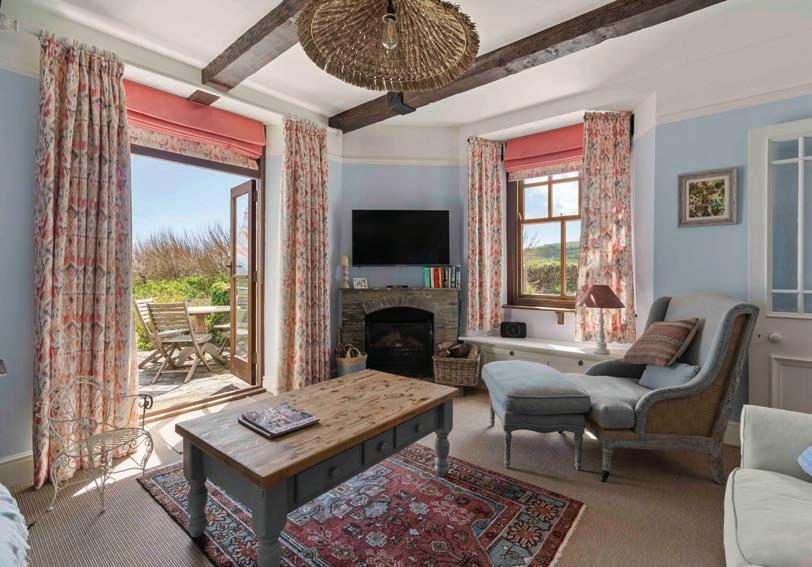
A lovely, large, lawned garden with patio seating area, making this the ideal place to sit and take in the everchanging sea views. ‘‘
Beesands was once a thriving fishing village supporting a local community who existed for many years by fishing from the beach in their open boats. Today, it is mainly leisure fishing from the beach that can be seen from Beesands. However, the old fishermen's cottages still straggle along the main village street, which runs higgledy-piggledy along the mile of shingle beach. The nearby freshwater lake and bird sanctuary are surrounded by beautiful rolling countryside, situated right on the South West Coast path full of opportunity for adventures – whether long and arduous rambles or more gentle strolls. The popular Cricket Inn offers locally produced food and a friendly atmosphere, along with Britannia at the Beach, which is renowned for its seafood. The lively market town of Kingsbridge is only 20 minutes away by car, as is historic Dartmouth and its renowned sailing, dining and shopping.



Curating an Art Collection with Catherine Gillen at the Brownston Gallery

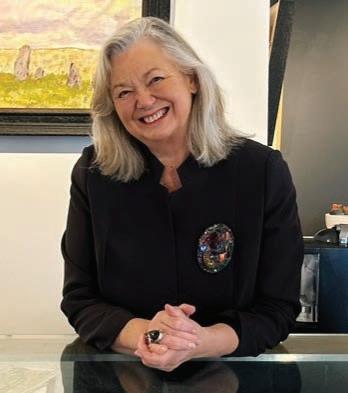
Being
‘At Home’ means many things. From hosting parties to making a house a home, cooking up a feast to sowing seeds, our ‘Life At Home’ guides lend expert inspiration for a life lived well.
There is nothing more exciting than walking into your new home, looking at the empty walls and thinking “Wow, I’m going to have fun with this!” Or do you feel the exact opposite - terrified that you are going to get it wrong and everything that you brought from your previous home is going to look tired and out of place. Curating your own art collection for a new home can be daunting but do not fear, help is at hand. Owner of the Brownston Gallery, Catherine Gillen, shares her tips:
A good place to start is to think about the look you want to create. If you like a contemporary, minimalistic feel you might like to consider big, bold abstracts to add a pop of colour to large white walls, creating stunning focal points throughout the house. If you prefer a more traditional country feel, you can really go to town and cover your walls with a selection of your favourite artworks, hung salon-style to create feature areas that are interesting and eye-catching.
You may already have artists that you collect but if you are just starting out then it’s a good ideaand great fun! - to visit as many art galleries as you can to learn what kind of art you like, and what makes an emotional connection.
If original paintings are out of your reach, then why not look at works on paper - lithographs, etchings, drawings, hand coloured prints - still unique in their own way but at a fraction of the cost. Also, most reputable art galleries will offer interest-free payment plans, so always check those out.
Good gallerists love talking about their artists so don’t be shy - you never know what you might learn! Auction houses are a source of endless variety, and you can definitely pick up a bargain if you know what to look for. Artists’ Open Studios are also an excellent way of discovering new favourites.
It’s definitely important to like the art you buy but it certainly doesn’t do any harm to know that the piece you have purchased is going to increase in value. Do your homework, do some research, and buy carefully. And make sure you enjoy each and every work of art. After all, you chose them with love.
To work with Catherine on curating your own art collection, visit the Brownston Gallery at 36 Church Street in Modbury or email art@brownstonart.com.



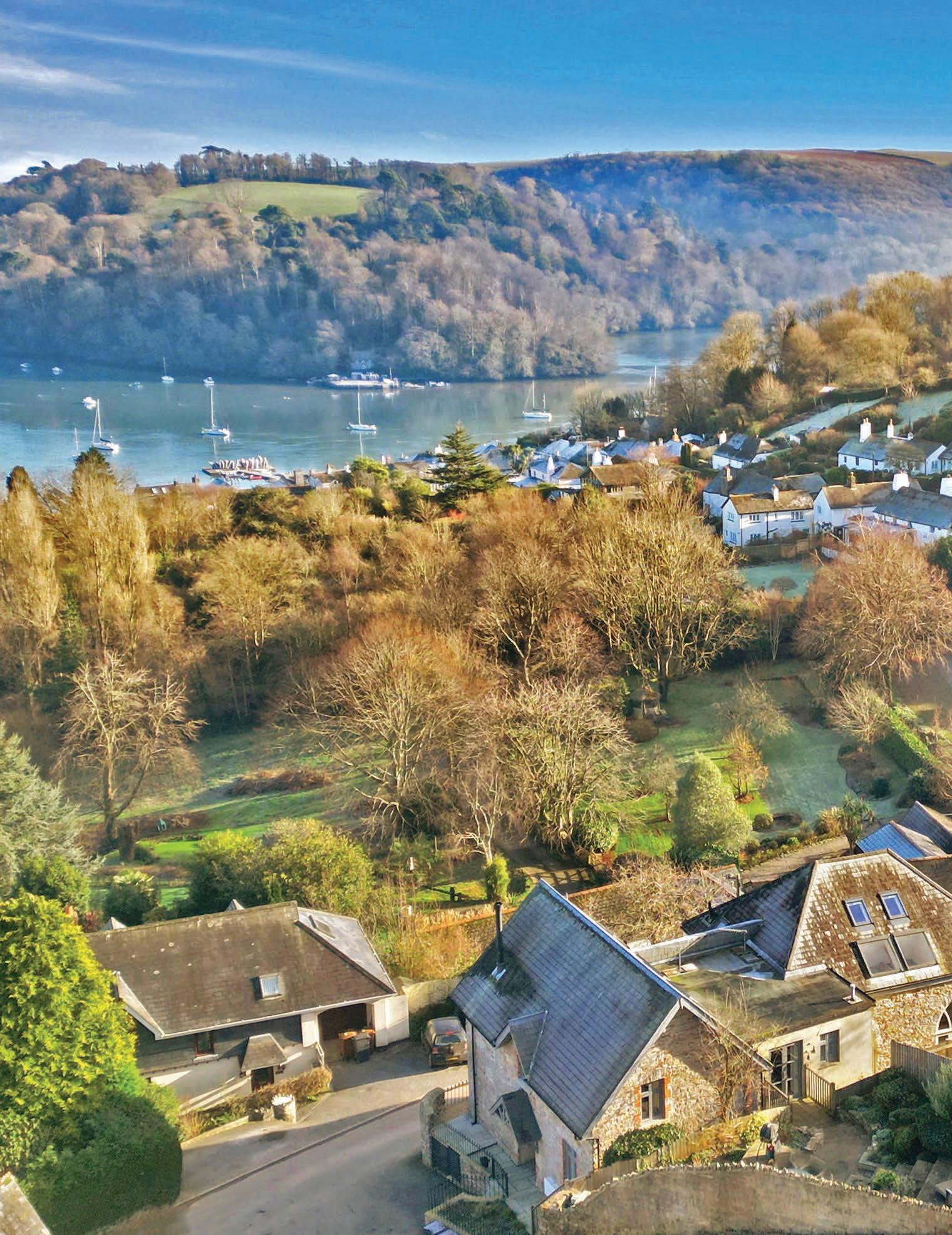

In the heart of Dittisham, one of Devon's prettiest riverside villages, The Old Chapel stands as a testament to thoughtful conversion and renovation. Overlooking the peaceful River Dart, the Sunday School is a lesson in riverside living for a modern day.
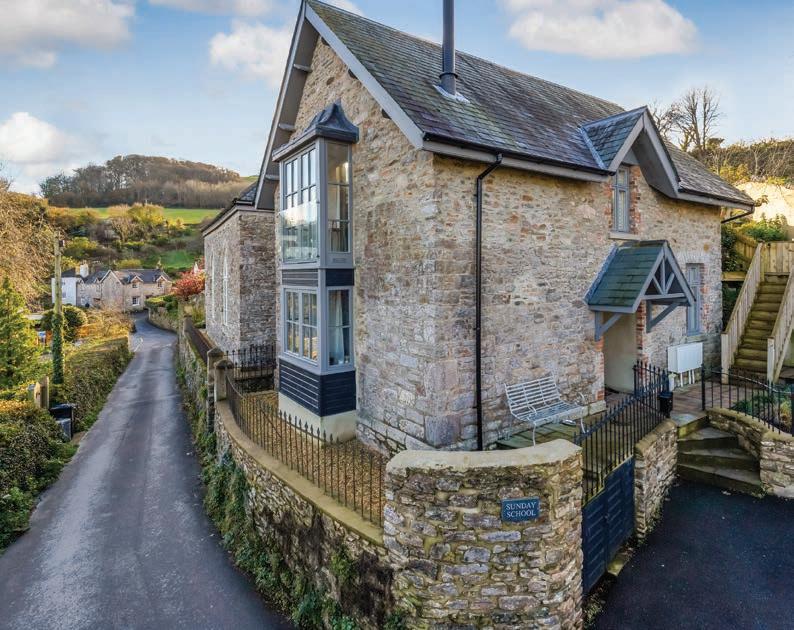
The extensive renovation of the Sunday School has transformed it into a home where open-plan living spaces are flooded with natural light. High-quality fixtures, fittings, and furnishings reflect meticulous attention to detail and design.
Reverse level living gives river views a starring role. The first floor reveals the heart of the home: an expansive open-plan living area with spectacular views across the village and the River Dart. The kitchen, impeccably finished with built-in appliances, flows into a dining area that is ideal for gatherings. The living area, anchored by a feature wood-burning stove, promises a cosy retreat with captivating river views. A bedroom off the living space is adaptable enough to serve as an office if preferred.
On the flip side of the reverse layout, the ground floor features a master bedroom with en-suite shower room. A second bedroom and a stylish family bathroom also feature, while the utility room is convenient and discreetly tucked away.
The Sunday School has its own parking – an important consideration in Devon’s villages – along with a beautiful, secluded rear terraced garden for relaxing and entertaining alike.
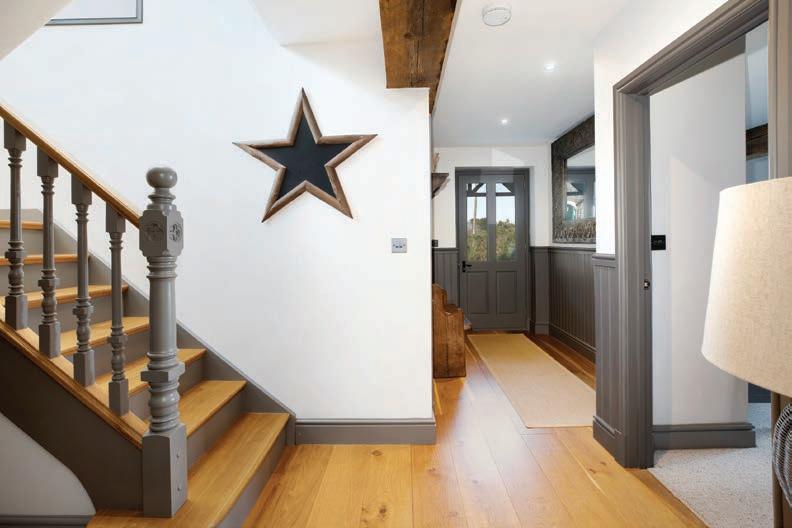
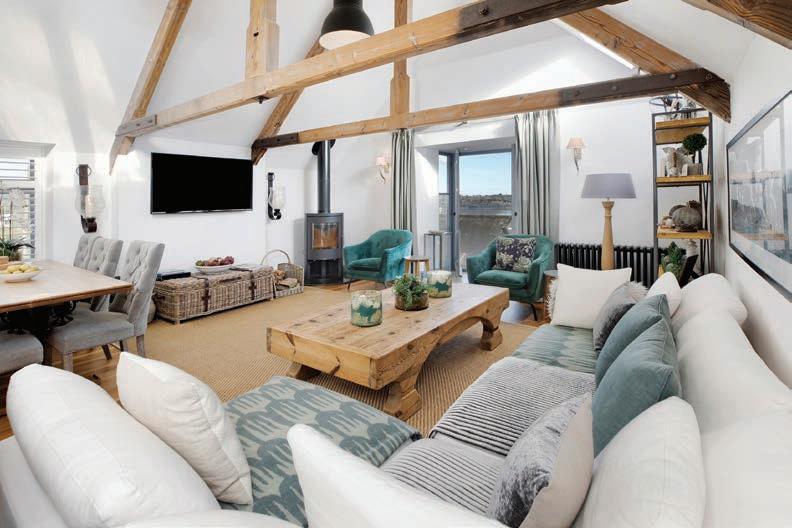

The first floor reveals the heart of the home: an expansive open-plan living area with spectacular views across the village and the River Dart.
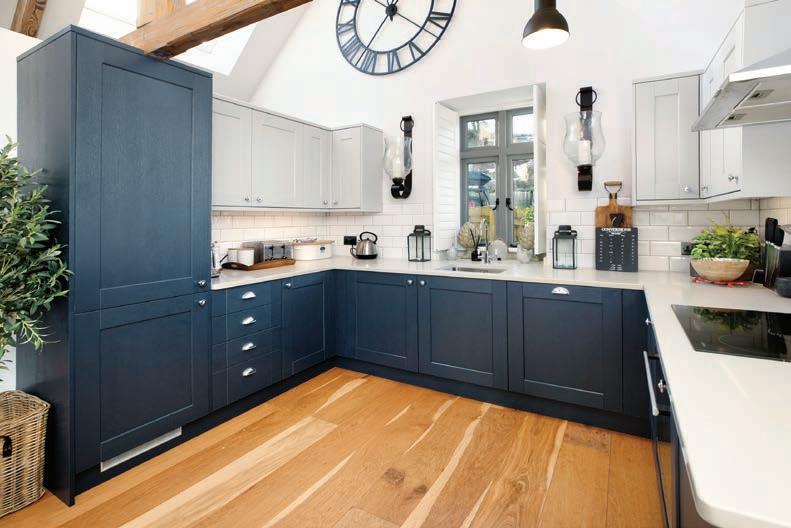


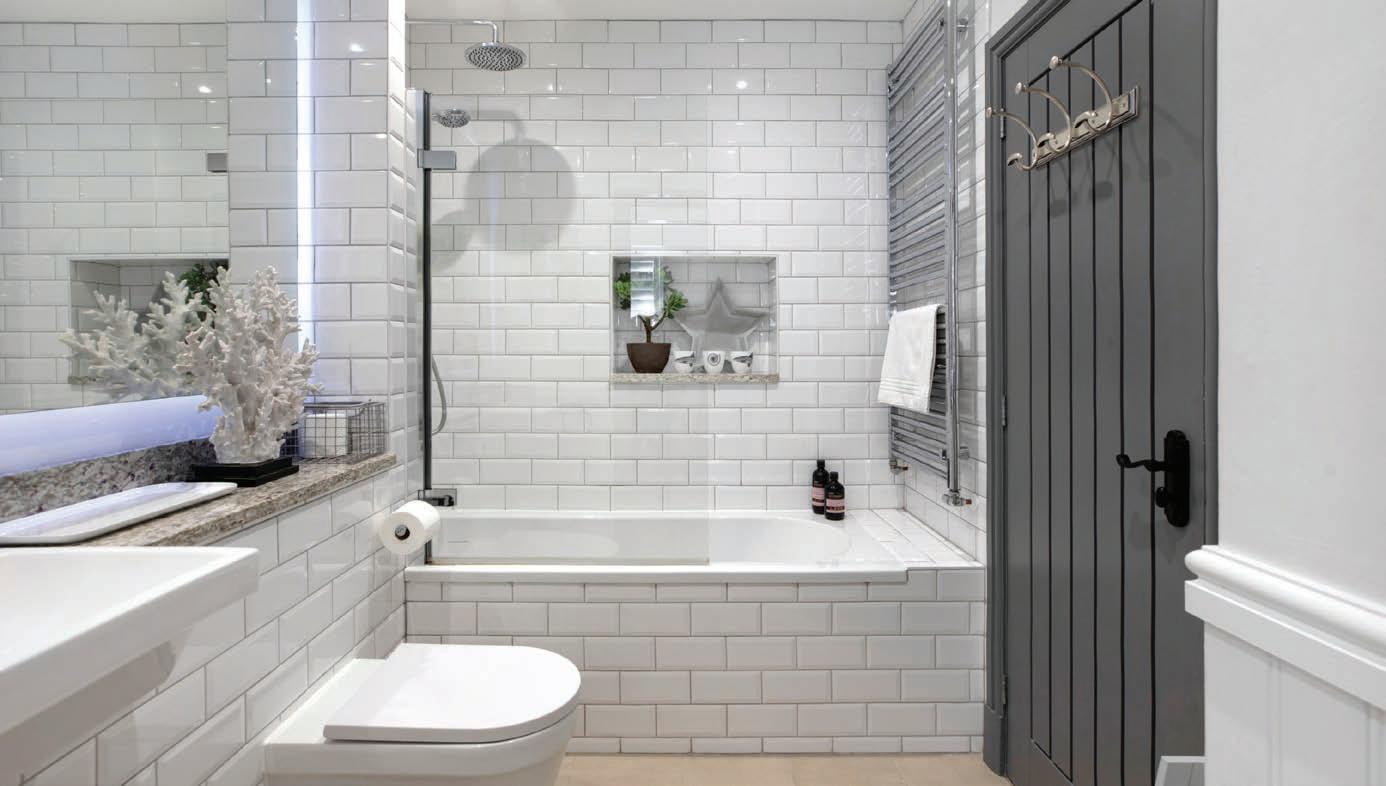
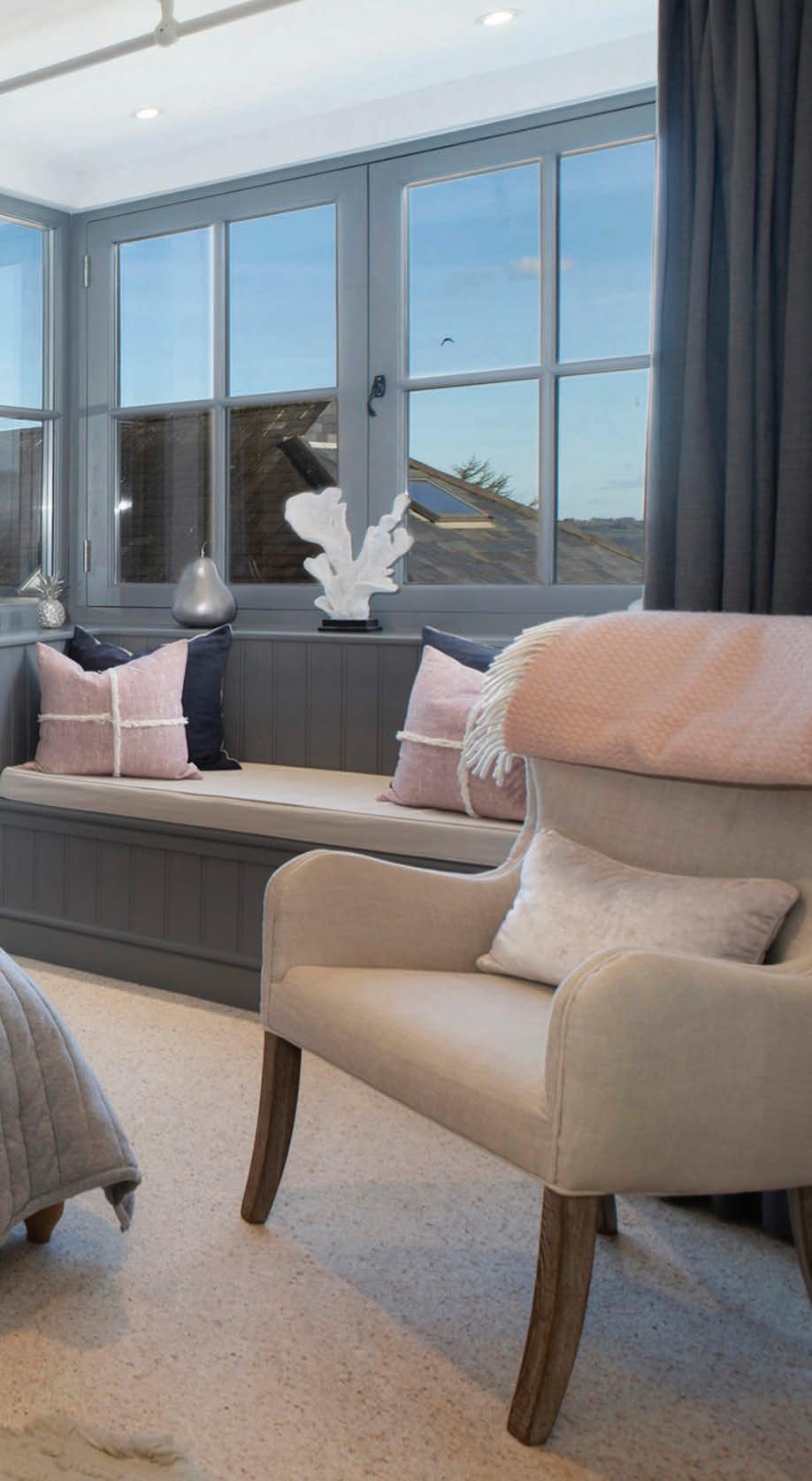
High-quality fixtures, fittings, and furnishings reflect meticulous attention to detail and design.

Dittisham itself is celebrated for its quaint cottages and eponymous Ferry Boat Inn, a pub with acres of personality, friendly locals and great pub food. Situated on the west bank of the River Dart, the sought-after village has a vibrant sailing club, a delightful riverside café, and a second historic pub, one of which houses the local post office and store. A passenger ferry connects Dittisham to Dartmouth and its galleries, shops, restaurants, and marina facilities.

DITTISHAM
3 bedrooms
2 bathrooms
1 reception room
EPC: C
GUIDE PRICE £895,000
DARTMOUTH
01803 839190




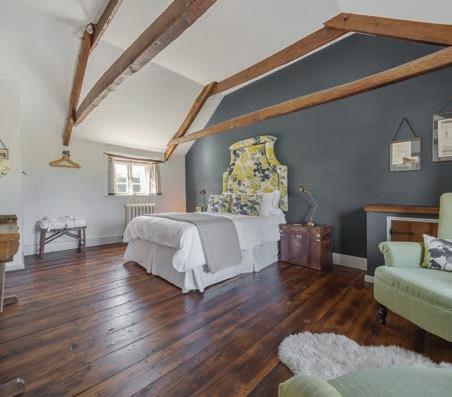

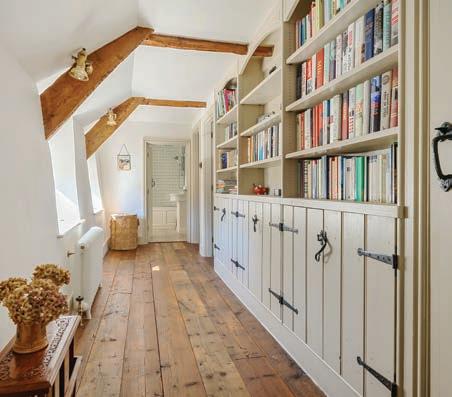




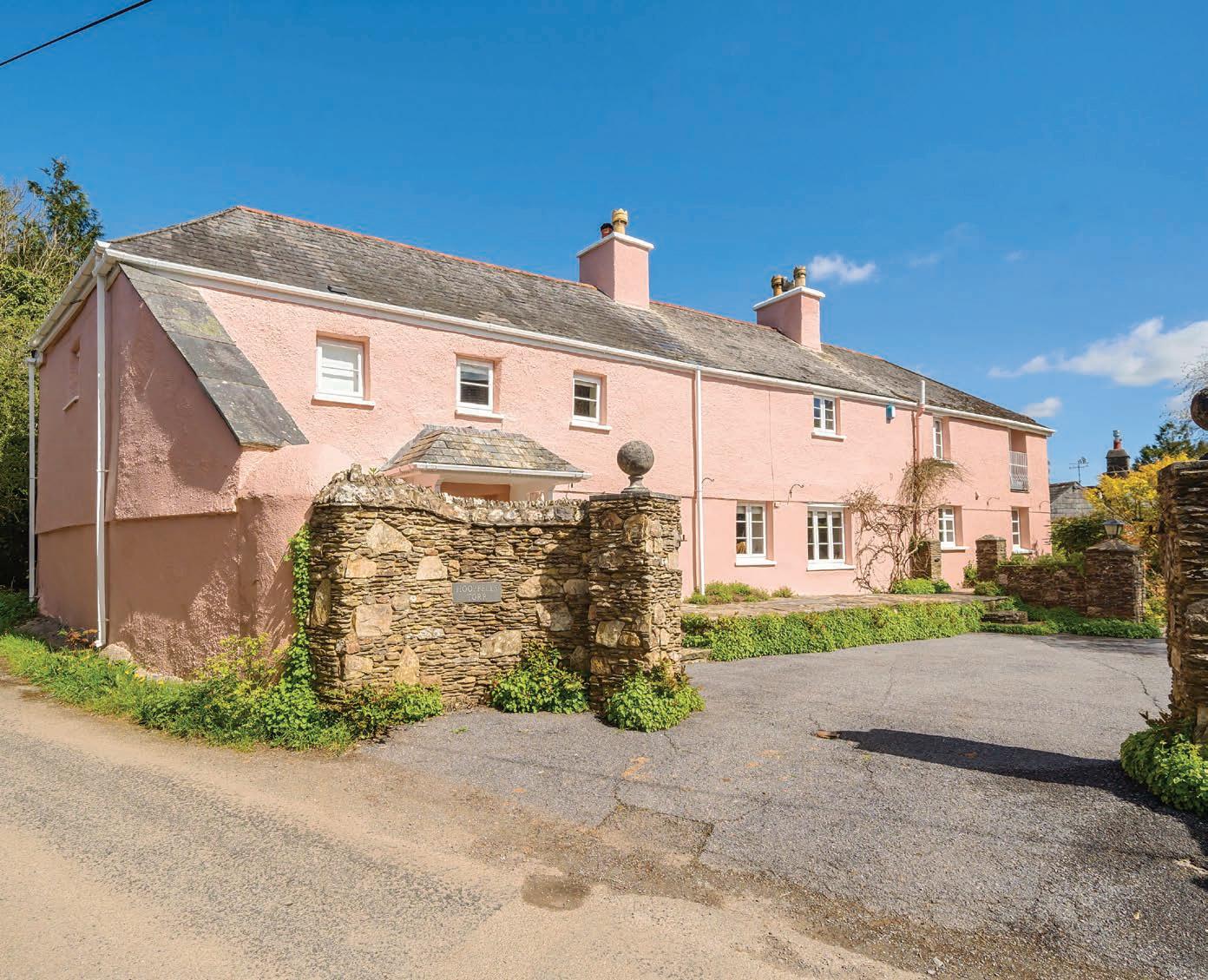
Hooppells Torr is the quintessential rural home, lifted from its 18th century roots, with an impressive style of restoration coupled with modern convenience and flair.
The generous layout of this family home, enclosed by beautiful casement windows and exposed timbers, is finished with a generous conservatory and an indoor heated pool. The breathtaking grounds, approaching six acres, are a paradise of landscaped gardens and meandering grass paths through wildflower meadows and orchards.
The heart of this family home is the sizeable and stylish kitchen, finished with an oil-fired Aga, Miele appliances and central island. The dining room has a front aspect, with stairs leading to the first floor and a charming inglenook with a featured cast iron stove. The sitting room encourages leisurely evenings spent resting in front of the stone fireplace and log burner, dual aspect windows opening to delightful garden views. A study and guest cloakroom are practical features appreciated by busy family life. Double doors from the sitting room and dining room lead to a substantial conservatory. From the kitchen is a utility room and storage area with pantry. It is from here that you are led to the indoor pool with salt water system, a shower room and double doors onto the patio. Whether daily dips or strenuous lengths, having a private pool makes wellness a priority.

The heart of this family home is the sizeable and stylish kitchen, finished with an oil-fired Aga, Miele appliances and central island. ‘‘
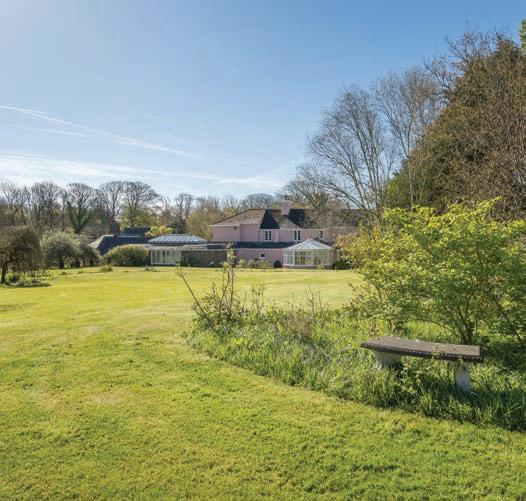

Hooppells Tor has four bedrooms on the first floor. Bedrooms one and two are equally striking, bedroom one with a vaulted ceiling, exposed beams and a generous ensuite with indulgent claw foot bath. Bedroom two has a Juliette balcony and modern ensuite shower, while bedroom three has a dual aspect with garden views. Bedroom four has a rear aspect, again with garden views, and the two share a bathroom.
The beautiful rear gardens of Hooppells Tor are breathtaking, with fabulous areas of lawn, established borders, vegetable gardens, greenhouses and patios. The land beyond opens to a sublime wildflower meadow with meandering grass paths venturing through fruit trees, a copse and spring fed pond, absorbing a tranquil setting with stunning rural views.


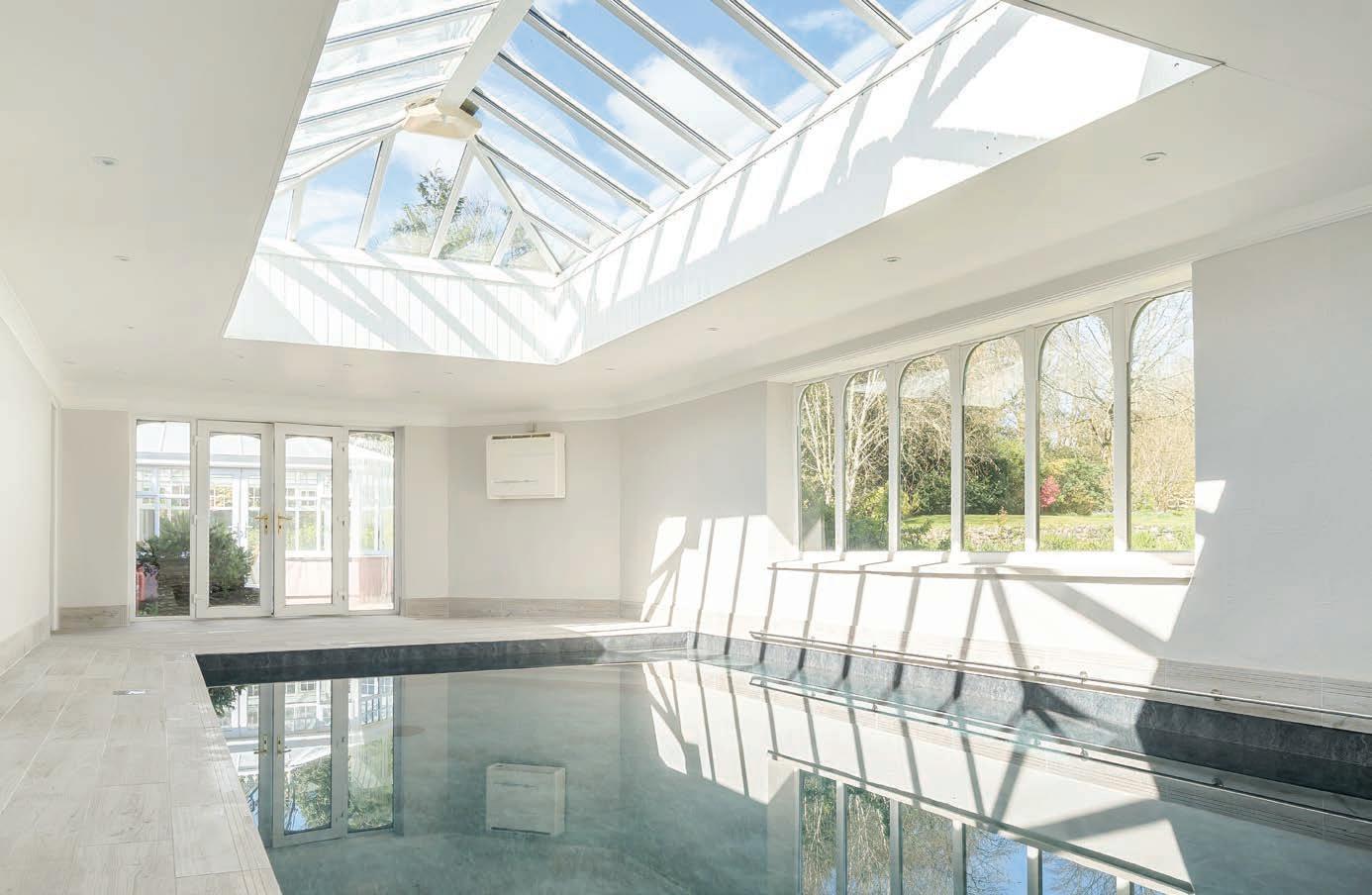
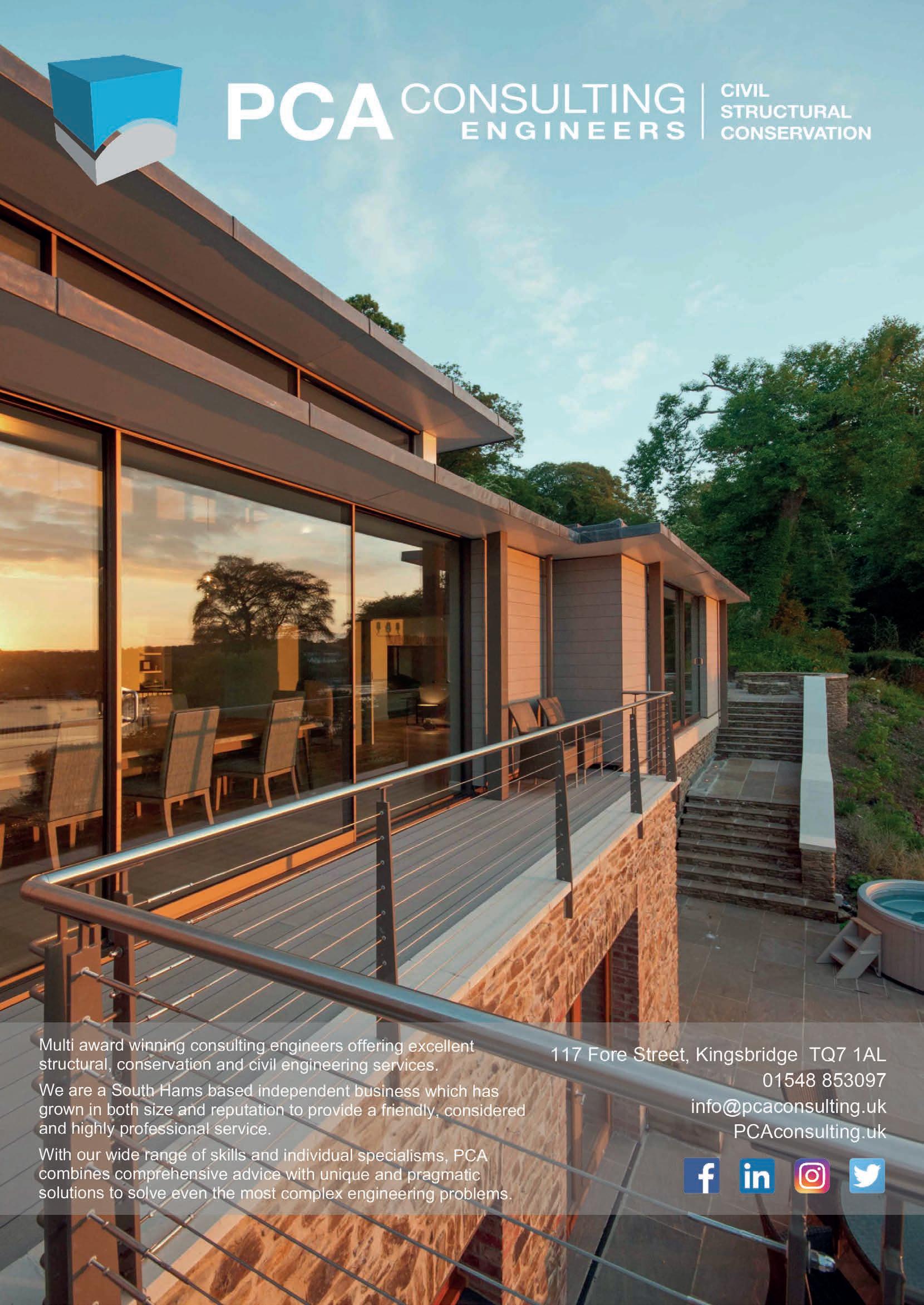
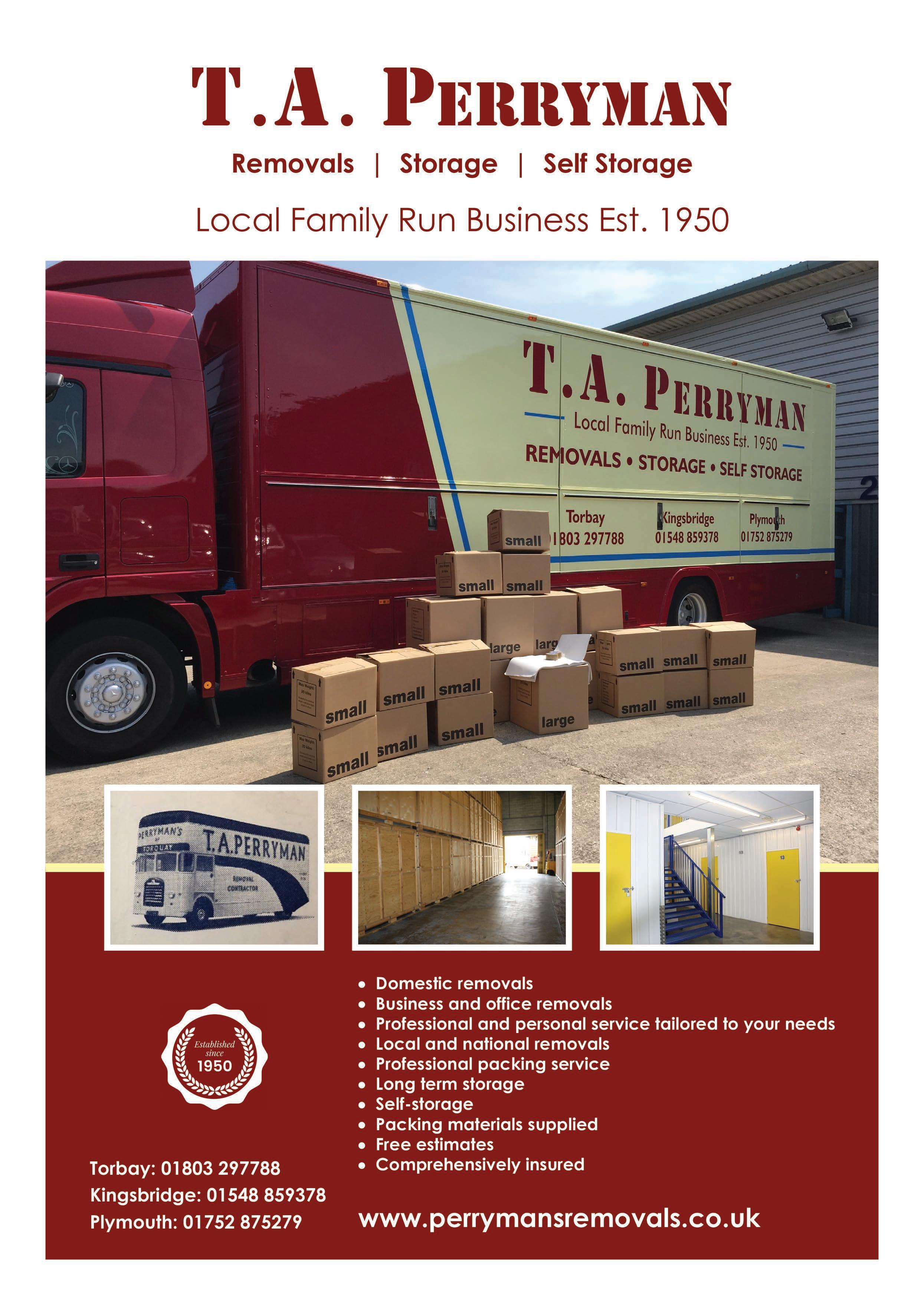
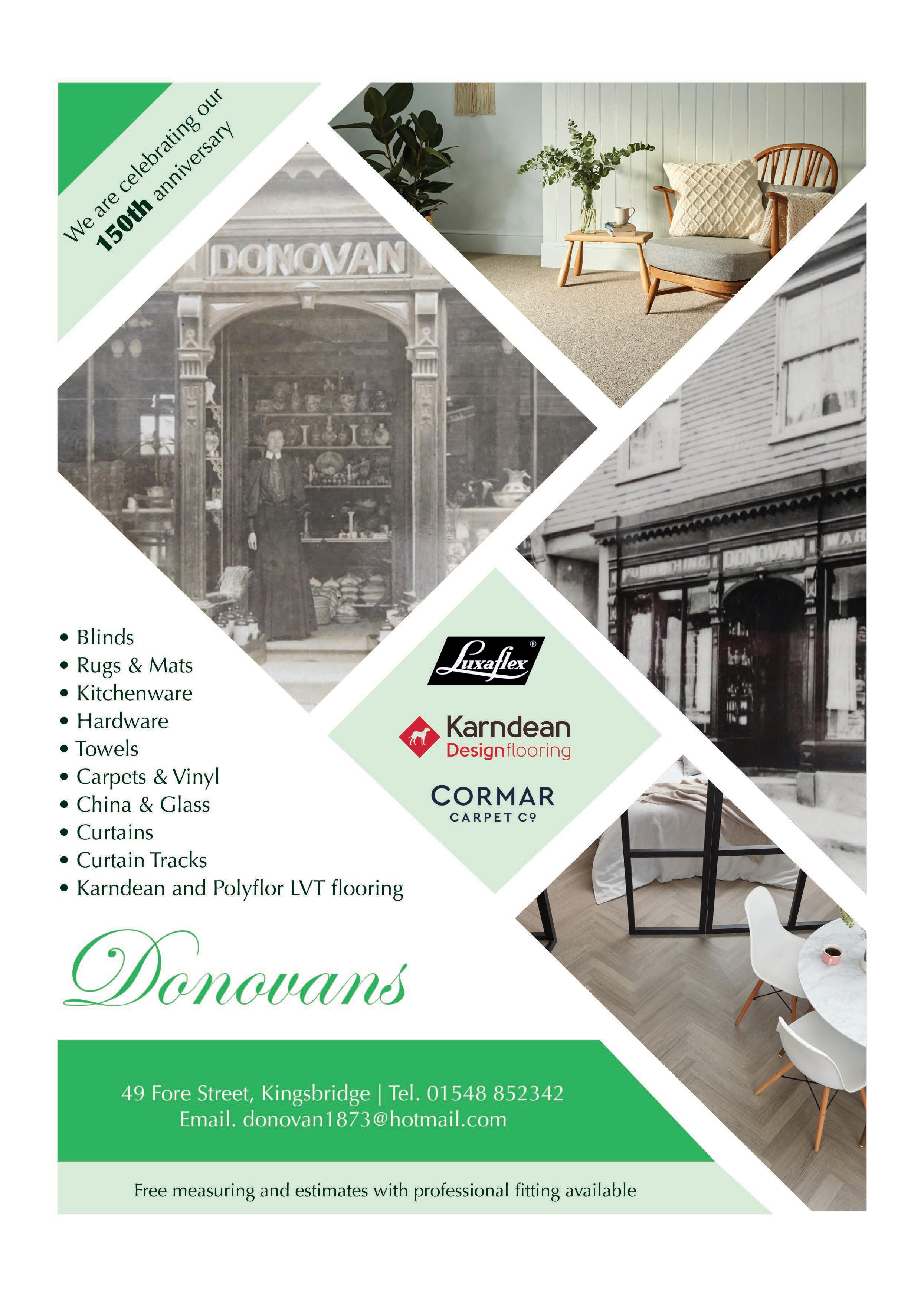



Behind an unassuming façade in the very heart of Salcombe stands a townhouse with a view. Just footsteps away from the harbour, and with views across the estuary to the sandy beaches of East Portlemouth beyond, 74 Fore Street is a truly special find.
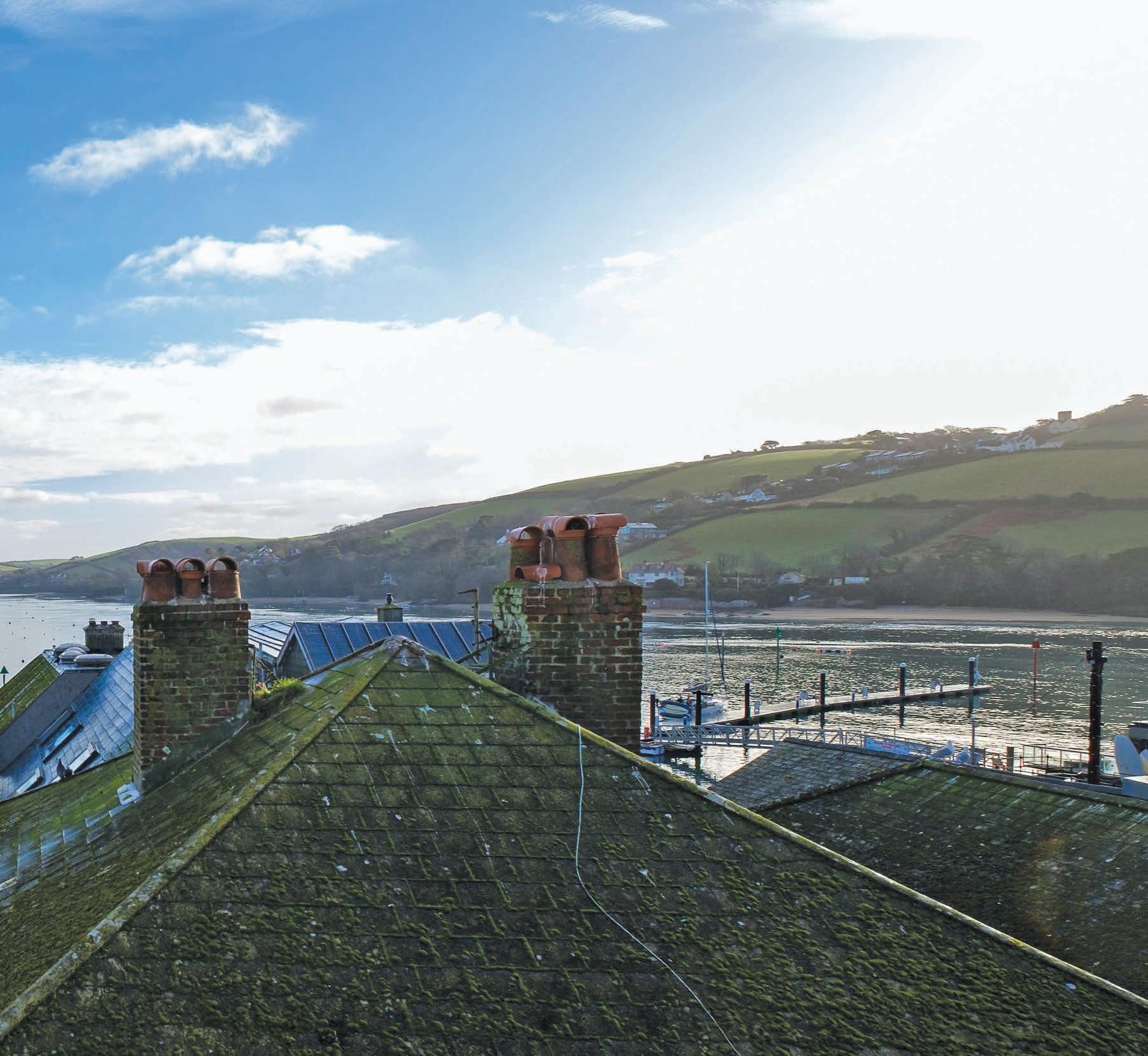
Behind the unassuming façade of the very ordinary sounding 74 Fore Street sits one of Salcombe’s most extraordinary properties. Extending to more than 3,700sq.ft., this magnificent seven-bedroom townhouse has been extensively renovated by its present owners, turning two separate properties into one expansive and sophisticated family home. Just footsteps away from the harbour and mooring pontoons at Whitestrand Quay, and with views across the estuary and to the sandy beaches of East Portlemouth beyond from the upper floors, 74 Fore Street is a truly special find.
Fore Street is quite literally the beating heart of Salcombe and it is from here that you step into the entrance hall of number 74. The property’s seven bedrooms, five bathrooms and two reception rooms are arranged spaciously over three floors, each room given the same attention to detail and exceptional finish as the last. From the entrance, stairs lead to a stylish first-floor drawing room with feature fireplace and sash windows. French windows open to a sun terrace, with steps leading to a west-facing garden poised for entertaining.
Venturing downstairs from the entrance hallway leads you to the ground floor and its open-plan kitchen/dining room. A bespoke kitchen incorporates a vast central island and high-specification Miele appliances, while a dining room with seating for 12 people encourages dinner parties by the sea. This is a property made for entertaining and bi-fold doors from the dining area slide back to reveal a spacious sun terrace, landscaped to create various area in which to wine and dine throughout afternoon and evening.
A bespoke spiral staircase winds from the dining room to a sitting room on the first floor, to which there are also three double bedrooms, a family bathroom and shower room. Three further bedrooms sit on the second floor, one with ensuite shower room, along with a separate family shower room. Stairs lead to a top floor with mesmerising and ever-changing estuary and harbour views from the master bedroom, designed to opulently fill the whole floor with its sleeping space, dressing room and ensuite bathroom. In a twist of boutique hotel styling, French windows open from the bedroom to a balcony crying out for morning coffees with a view.


The property’s seven bedrooms, five bathrooms and two reception rooms are arranged spaciously over three floors, each room given the same attention to detail and exceptional finish as the last.
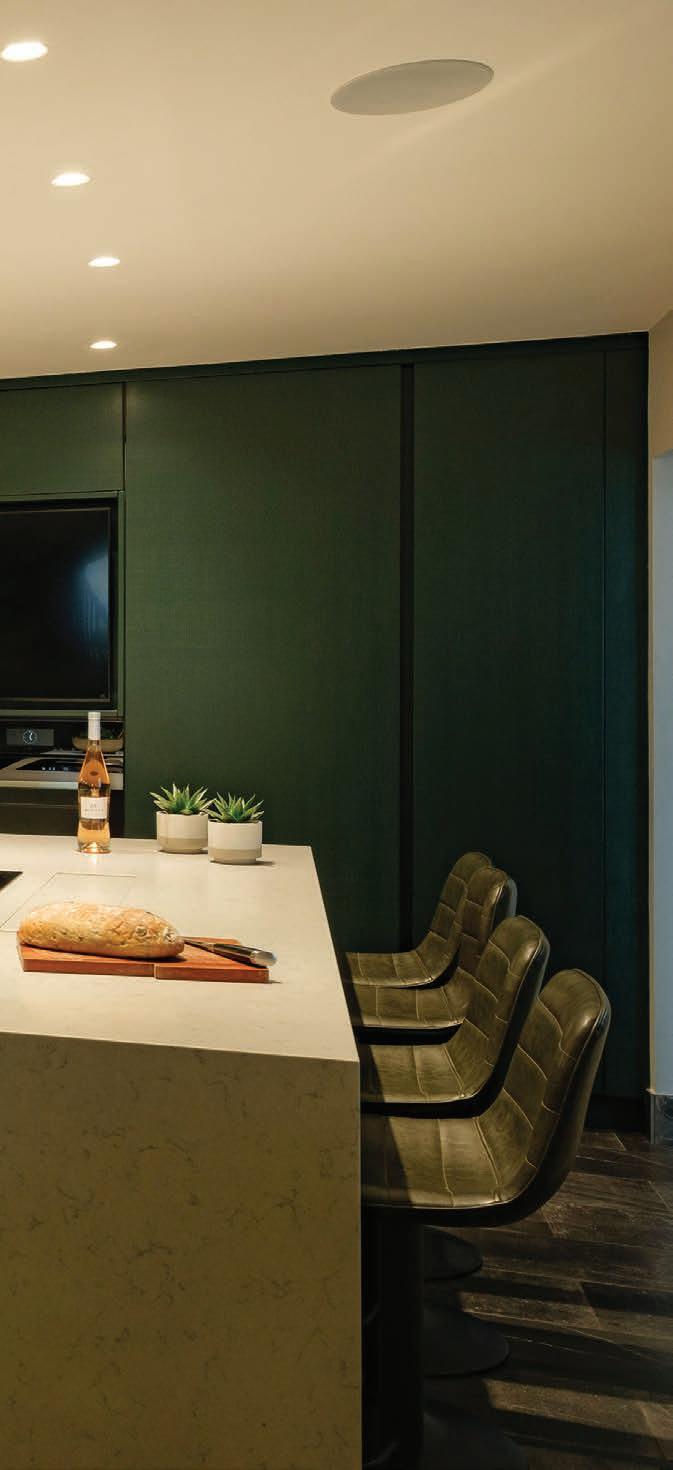
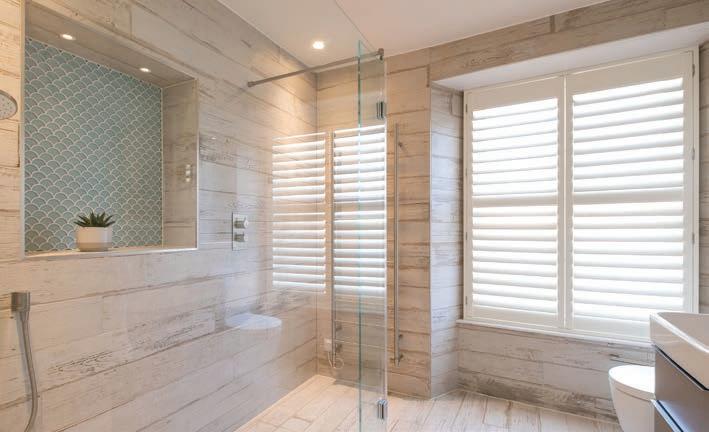
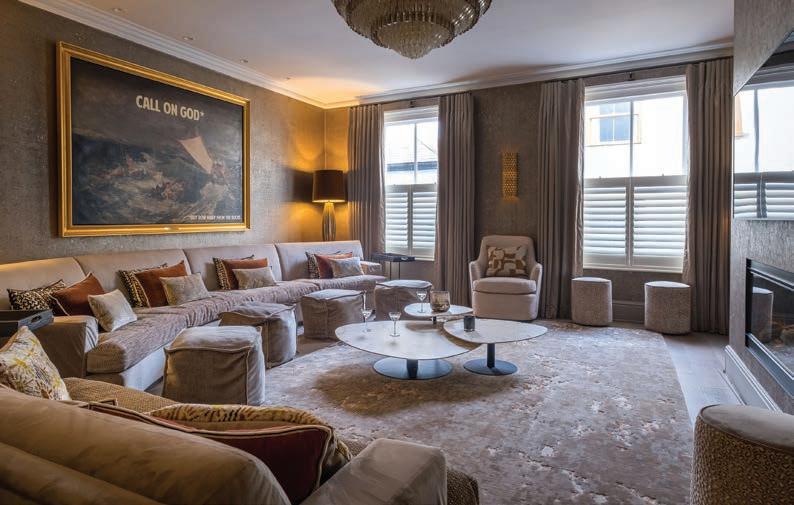
To say 74 Fore Street is central to Salcombe’s countless highlights would be an understatement. The family home sits at the heart of the beautiful estuary town; a mixture of independent boutiques rubbing shoulders with well-loved names like Musto, Helly Hansen and Busby & Fox just outside the front door.
Known for its unusually temperate climate, rolling unspoilt countryside, hidden coves and spectacular hillsides, the South Hams is one of the most coveted regions to call home and Salcombe is one of its gems. One of the most renowned sailing destinations in Europe, the coastal town provides a perfect cruising base from which to explore France, the Channel Islands and the beautiful harbours and creeks of the West Country. Salcombe Estuary itself is dotted with sandy beaches, coves and sheltered anchorages, all of which make it a charmed base for dingy sailing, water sports and boating too.



There is no feeling quite like your first love and these South Hams homes all fall around the average price for a first time buyer home here in Devon. From country cottages to premium apartments with sea views, each promises a charmed start to life on the property ladder.
Harbertonford is just a short drive from Totnes, where you’ll find a different indie coffee shop for every day of the week and a lively music scene. The cottage is the perfect starter home complete with peaceful patio garden.
GUIDE PRICE £260,000
TOTNES 01803 847979


This coastal bolthole is close to the golden beaches of Salcombe. Its modern interiors maximise views across the countryside and feature parquet flooring, feature fireplace with wood burner and a flood of natural light.
GUIDE PRICE £250,000
SALCOMBE 01548 844473


This first-floor apartment is one of just five in a building set on one of the highest points of the coveted estuary village of Newton Ferrers. It enjoys views over the rooftops to the Yealm Estuary beyond, with a far distant view to the sea.
GUIDE PRICE £295,000
NEWTON FERRERS 01752 873311
Offered for sale with no chain, this cosy two-bedroom cottage is in one of South Devon’s prettiest villages. The village square is only a short walk away, and the First and Last Bistro and Plantation House restaurant offer tasty options for eating out.
GUIDE PRICE £275,000
MODBURY 01548 831163
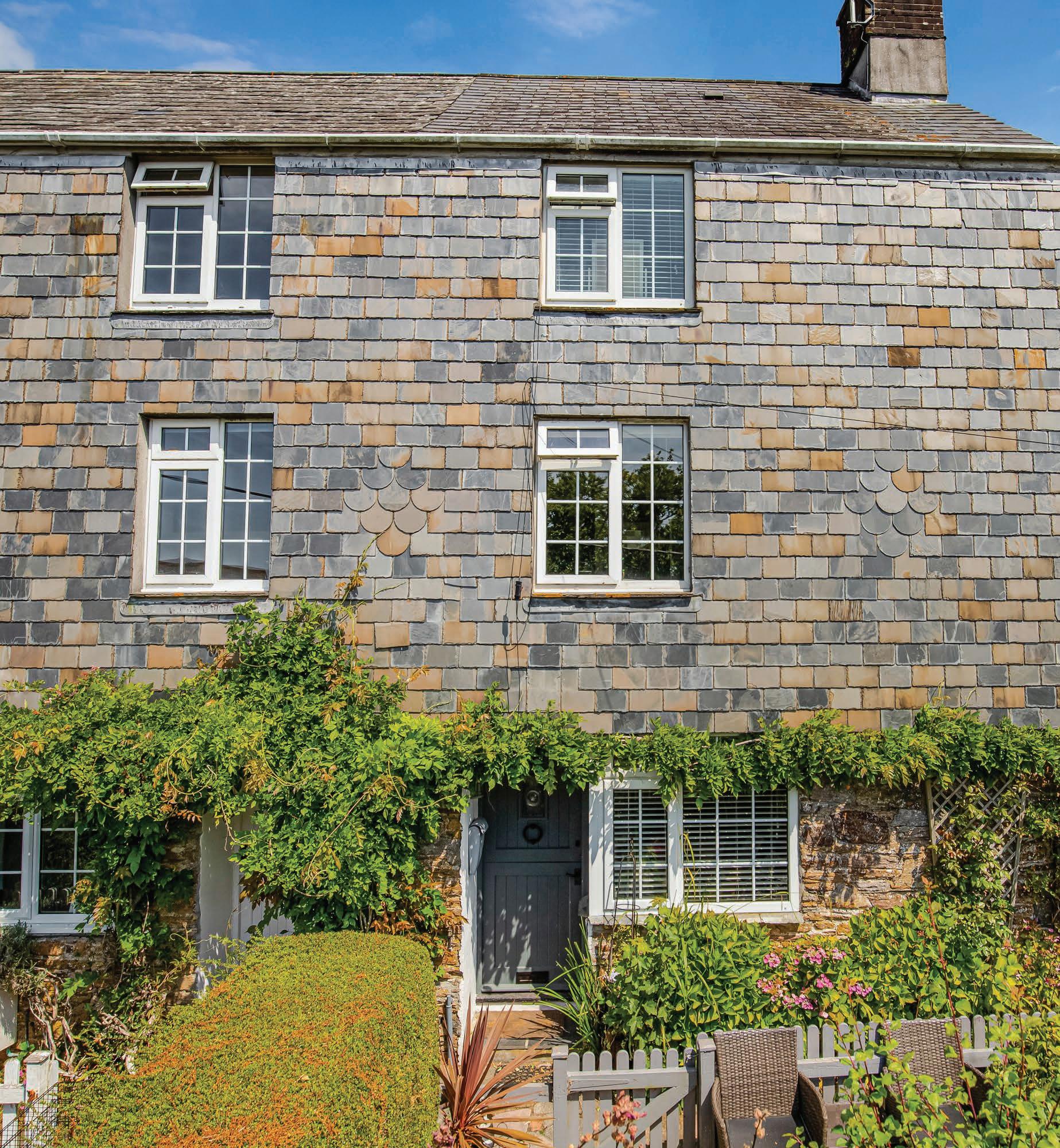


Having been both a vicarage and a bakery over the course of its 400-year history, the pretty Grade II listed country cottage is brimming with character and original features. Its village location puts Totnes, Salcombe and Kingsbridge within close reach.
GUIDE PRICE £295,000
TOTNES
01803 847979

The charming end-terrace cottage in pretty Chillington is full of character features. Its location is close to some of Devon’s best beaches too – perfect for sea swimmers and coast path hikers.
GUIDE PRICE £235,000
KINGSBRIDGE
01548 857588


